




The European Union, G7 and the United States are in no mood of sparing Russia for its Ukraine campaign and they are introducing one sanction after another to punish the country economically.
Moscow’s response to these economic sanctions has been a devastating one, depriving Europe of its shares of energy supply, while focusing more on the Asian market.
Data shows Moscow earning some USD 158 billion through its coal, oil and natural gas sales from February to August this year and more than half of that revenue came from Europe alone, which is still pitching for a price cap on the energy sales.
The Nord Stream pipelines connecting Russia with Europe have also seen sabotage attacks, along with 'maintenance issues'. EU countries are now scrambling for alternative sources of energy, while their domestic population stares at a greater crisis as the harsh winter nears.
Despite a rise in Russia’s overall revenue flow from the energy trade, the total export volume in this sector has dropped by some 18% due to trade sanctions. While the European Union has cut its imports from Moscow by 35% in the last few months, they have also banned Russian coal within their jurisdiction. The nuclear energy supply from Moscow remains out of this sanctions’ ambit.
The standoff between the United States and OPEC+ on the move to cut daily oil production by two million barrels and the subsequent energy price rise is also complicating the matter further.
Under these circumstances, we at GBO have done our cover story on the magnitude of the ongoing crisis and how it is adversely affecting not only Europe but the global economy as well.
Thomas Kranjec Editor kimberly@gbomag.com
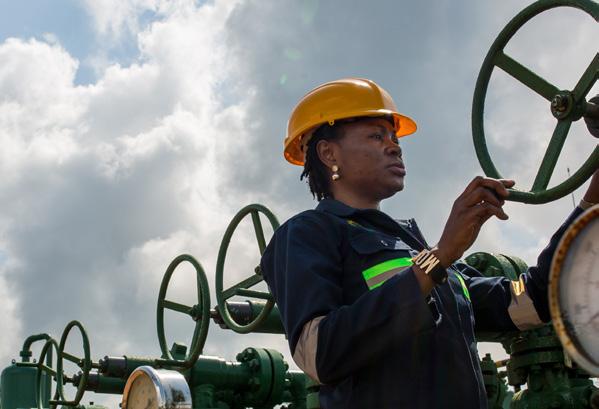

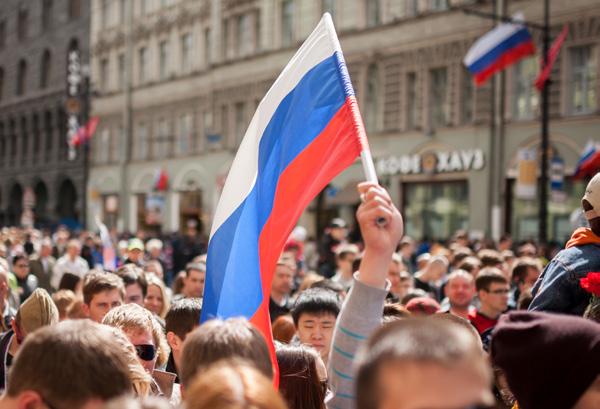
Director & Publisher
Krushikesh Raju
Editor
Thomas Kranjec
Production & Design

Brian Williams
David Brenton Ian Hutchinson Shankara Prasad
Editorial
Stanley Rogers, Ashley Samberg Rachel Taylor, Lucas Cooper
Peter D’Souza Stella Thomas Sneha Shet Ryan Anderson Sumith MK
Benjamin Clive, Avinash Nair, Mike Lloyd
Danish Ali
Richard Sam, Sophia

Taylor
(0)
The US seems to have played a major role in the price cap on Russian oil
A price cap on Russian oil has been proposed by the world’s seven-largest industrialized economies in an effort to further limit the Kremlin's capacity to finance its onslaught in Ukraine and to safeguard consumers amid rising energy costs.
The G-7's efforts to set a price cap on Russian oil are not without its challenges, however, as energy pundits have serious doubts about the validity of the idea.
The Kremlin, for its part, has cautioned that any attempt to put a price restriction on Russian oil will cause more negative impacts than positive ones.
The US seems to have played a major role in the price cap on Russian oil. When explaining the concept to her European counterparts in May, US Treasury Secretary Janet Yellen asserted that it would act as a tariff or cap on Russian oil and benefit Europe while waiting for a complete ban to be imposed.
Later in the same month, the EU decided to impose a gradual embargo on Russian oil till 2022 end. This was only possible after several weeks of hard negotiations among the 27 nations.
One of the most significant customers for the Russian government, the bloc used to import around 25% of its oil needs from that country. This move of stopping oil purchases is an attempt to harm Russia’s economy, for its unprovoked invasion of Ukraine. But here's the catch: some European Union countries are heavily dependent on Russian fossil fuels.
US President Joe Biden presented the idea of an oil price cap to
the rest of the G-7 leaders over the weekend of June 25 and 26 and his counterparts agreed to look at how to do it. The G-7 comprises the US, Canada, France, Germany, Italy, the UK and Japan.
Over the weekend of June 25 and 26, US President Joe Biden brought up the idea of an oil price cap to the other G-7 leaders, and they all agreed to look into how to execute it. The United States, Canada, France, Germany, Italy, the United Kingdom, and Japan make up the G-7.
Olaf Scholz, the chancellor of Germany, said the plan required "a lot of work" to materialise since it was an ambitious one.
In an email to CNBC, a spokesperson for the European Commission, the executive arm of the EU, said, “We share the G7 countries’ concerns about the burden of energy price increases and market instability, and how these aggravate inequalities nationally and internationally.”
"In this context, as tasked by the European Leaders, the Commission will continue our work on ways to curb rising energy prices, including assessing the feasibility
of introducing temporary import price caps where appropriate," the spokesperson added. He further stated that the discussions are considered “a matter of urgency.”
Energy analysts have questioned exactly how the G-7 can impose a price ceiling for Russian oil, warning that the plan could backfire if key consumers are not involved, and time may be running out to make it workable.

Neil Atkinson, an independent oil analyst, said, “I'm one of those scratching my head." “Something like this could only work if you get all of the key producers and crucially all of the key consumers working together and then finding some way of enforcing whatever plan you come up with. And the reality is that the biggest consumers of Russian oil, or amongst the biggest consumers of Russian oil, are China and India,” he added.
Discounted Russian crude has benefitted China and India, according to Atkinson. When compared to the global benchmark Brent crude futures price of $110 per barrel,
Russian oil has been selling at a significant discount of $30 or more, and China and India have been purchasing it.
Atkinson also emphasised a lack of consensus about Russia's invasion of Ukraine given that China and India have not denounced the Kremlin directly.
Atkinson said, "In any event, the Russians won’t just sit there and do nothing. They can play games with supplies of oil and indeed gas...they can mess with the G-7′s head in some respect so I think this plan is really a non-starter."
In an interview with CNBC, Energy Aspects co-founder and director of research Amrita Sen said, "For me, honestly the mechanism doesn’t work. They haven’t thought it through, they haven’t spoken to India and China...Do we really think they are going to agree to this? And do we really think that Russia will actually accept this and not retaliate? I think this sounds like a very, very good theoretical concept but it is just not going to work in practice."
Amrita pointed out that the countries
around the globe are on the same wavelength with Western policymakers, especially when it comes to energy security, which is "the biggest misconception right now.” "I think that really needs to go away," she added.
Energy research firm Rystad's senior vice president Claudio Galimberti stated that insurance is the most direct means to impose a price cap on Russian oil.
Claudio said, "The International Group of Protection & Indemnity Clubs in London covers around 95% of the global oil shipping fleet. Western countries could try to impose a price cap by letting buyers keep that insurance, as long as they agree to pay no more than a certain price cap for the Russian oil on board. However, there are many obstacles that could derail such a plan."
The fact that Russia might decide not to sell at the prices set by the cap, especially if the benchmark is excessively low and near to the cost of production, was one of the most evident examples, according to Galimberti.
Russian President Vladimir Putin has previously demonstrated his willingness to stop supplying so-called "unfriendly countries" with natural gas if they don't agree to his gas-for-ruble payment conditions.

Galimberti said that China is the “next most likely obstacle." He felt that since Beijing may decide for geopolitical reasons “to lend support to Russia by accepting inferior Russian insurance and therefore facilitate a loophole for the price cap.”
“Still, a price cap is surely a measure worth considering at this stage, albeit time is running out, as the EU is determined to ban imports of Russian oil by the end of the year,” Galimberti affirmed.
Even prominent personalities from the oil industry themselves have questioned the idea.
During an interaction with the press in Singapore last week, Shell CEO Ben van
Beurden, said, "I am not entirely sure how that would work or who gets punished most, insurance companies or somebody else. I am not saying that it definitely can’t work, it’s premature to draw conclusions like this. They can definitely look at it if only we know what to comply with if that would come into effect, it’s not as easy or as trivial as it sounds.”
Russia has cautioned that any effort to control the price of Russian oil might sabotage the energy system and drive up commodity prices.
The effort by Western leaders to explore setting a price ceiling was characterised by Russian Deputy Prime Minister Alexander Novak as "another attempt to intrude into the market mechanisms which may only lead to market's disequilibrium...which would lead to [a] price increase."
Alexander was sure that Russia would restart oil production at pre-sanction levels in the coming months because a substantial percentage of Russian crude had been transferred to Asian markets.
Germany Economy Minister Robert Habeck has asked the utility firms to increase the gas prices for the customers, which in turn will help in lowering the demand for natural gas.
This development comes after the head of the International Energy Agency warned Europe that Russia is planning to cut off gas exports to the region starting this winter.
The governments have been asked to work on reducing the demand for fuels and keeping the nuclear power plants open.
Fatih Birol, the Executive Director of the International Energy Agency has mentioned that there will be a reduction in supplies in the coming weeks as Gazprom announced that they will be cutting the
deliveries via the pipeline by around 40%, stating the reason behind this as “maintenance work”.
This in turn could be the beginning of a huge shortage by preventing the filing of the storage facilities in order to prepare for the upcoming winter season.
Commenting on this, Robert Habeck has stated that the Russian energy plant Gazprom’s decision to cut supplies of natural gas to the European countries was a “political” move.
When asked if gas rationing would be needed, Habeck said, “Hopefully never” but added, “Of course, I cannot rule it out.”
With this news, the EU countries are rushing to refill the storage sites. Germany plans to reach 90% of its capacity by November.
In response to their decision to put sanctions on the Kremlin over its invasion of Ukraine, numerous EU members have seen Moscow limit or even stop their gas deliveries in recent weeks.
G7 bans Russian gold Meanwhile, in a series of latest repercussions against Russia, US President Joe Biden announced that the US and other Group of Seven (G7) leading nations (France, Italy, Canada, Germany, US, UK, Japan) will ban imports. To prevent the impact of Russia’s invasion of Ukraine from fracturing the international coalition, Biden and his counterparts will meet supplies and combat the inflation of gold from Russia. The principal new economic restriction against Russia that emerged from the summit appears to be the prohibition on gold imports, which may result in a fine of tens of billions of dollars.
Nigeria was to elevate the failing economy and to take strong actions against corruption
GBO CorrespondentOil has been more of a curse than a blessing in Nigeria. In a textbook example of what scholars refer to as the "resource curse," the West African country has failed to reach its full potential due to weak government institutions and inadequate management of the huge income.
The term, which was first coined in 1994 by Prof. Richard Auty, describes a country's incapacity to exploit its unexpected wealth to better the lives of its people and support its economy. Contrary to popular belief, countries with abundant natural resources experience a greater level of poverty and corruption than they do positive economic development, and they paradoxically experience much slower growth and development than countries without such resources.
These countries, which rely heavily on the
export of their natural resources, generally have slower growth rates, lower levels of human development, and higher levels of inequality and poverty. They have also been discovered to have worse institutions and more conflict than economies with limited or very less resources.
It results from the distinct phenomenon of oil exploitation rather than possession and is primarily caused by weak institutions and poor political governance. Multinational corporations, national and foreign governments, foreign financiers and investors, as well as the structures of states and private actors in oil exporting countries, all influence this phenomenon.
Resource wealth can have catastrophic effects. Livelihoods and economies in oilexporting countries like Nigeria, Venezuela,


is the main indicator of the resource curse. Worldwide, an estimated $2 trillion is stolen annually in the form of corruption. With this much money, the world's infrastructure gap could be closed, malaria could be cured, and children across the world could be provided education.
Corruption is "an abuse of entrusted power for personal or private gain," according to Transparency International. In 1996, James D. Wolfensohn, the World Bank President at the time, referred to corruption as cancer and urged all nations to work toward transparency and accountability to combat its eroding impacts on society. He listed the effects as shifting resources from the poor to the wealthy, increasing business costs, deterring foreign direct investment (FDI), decreasing public spending, misusing aid, and undermining equitable national development.
The integrity of individuals and institutions is damaged as a result of corruption. Combining social, political, and economic dynamics, it weakens democratic institutions, disempowers sovereign states, and adds to the instability that is stoked by public mistrust and resentment. It undermines democracy by devaluing the voting system, subverting the rule of law, and erecting new bureaucratic hindrances whose sole purpose is to demand bribes.
Self-interest, fear, greed, and the thirst for power are just a few of the many reasons for corruption, but the effects always remain the same, damaging, and long-lasting.
Any country's ability to handle an infusion of petro-dollars is a tough issue.
counties struggle to handle the surplus cash in a responsible manner. They frequently launch huge, expensive projects without doing thorough due diligence or feasibility studies, putting wise investments at risk. Priority is given to spending on initiatives with lower priorities. They spend lavishly while accelerating ongoing projects.
Then, in response to rising inflation brought on by productivity that is unsurpassed, they scramble to
the liquidity and loosen up on financial propriety and discipline. The interaction of these variables causes the currency to appreciate, hastening the economy's downfall and making non-oil sectors less competitive as exchange rates shoot up. The non-oil industries in the Netherlands were on the verge of extinction as a result of this particular phenomenon, also referred to as the "Dutch illness."
According to studies, an imbalance develops after an oil boom since the nonoil industries are left underdeveloped. The growing oil sector siphons out labour and capital from vital but less lucrative industries like agriculture, leaving them depleted as demand for those resources rises.
As a result of the windfall's associated abundance, which resulted in enormous revenues, greater incomes, and superior returns on investments, administrations find themselves in the uncharted ground. Higher incentives for corruption are created when public finances are managed in an incompetent and inexperienced way.
Newfound wealth raises expectations among the masses, which increases demands for resources from both state institutions and civil society. The unemployed, unions and the middle class all call for the creation of more employment while also demanding higher salaries for the same jobs. As bureaucracies grow, they quickly lose their effectiveness or competence, which adds to the growth of foreign debt and trade deficits.
A "rentier state" or economic trap evolves. The majority or the whole of the state's total revenue comes from the rents paid by foreign individuals, businesses, or governments. This causes the non-oil industries to contract, inflation to skyrocket, imports to rise in both quantity and price, and more money to be spent on political vanity projects, subsidies, and welfare programmes to offset rising living expenses and the depletion of foreign exchange.
Other countries have overcome the resource curse and led their economies to success through clever management and
tenacity. Most Nigerian people believe that the country has so far failed. But only time will tell if it is destined to fall into failure.
One of the major promises of Nigerian President Muhammadu Buhari during his 2015 election campaign was to elevate the failing economy and to take strong actions against corruption.
His presidential campaign had substantial support from the electorate of the country, who were looking for a breakthrough in the struggle against immense corruption. In the lead-up to the elections, even the media extolled his integrity.
Interacting with DW, Nigeria's Olabisi Onabanjo University economy professor Sheriffdeen Tella said, "One of the major plans on which the present government... came on board, was to tackle corruption. But it has not been able to do so. In fact, the level of corruption has increased so much that people have lost hope in his ability to do this. And corruption has actually fought back. It has not only affected the education sector, it also affected the health sector and all other sectors of the economy."
Many Nigerians lamented how their lives have gotten worse since Buhari took office and cast doubt on his commitment to wage a war against corruption.
Lanre Arogundade, former president of the National Association of Nigerian Students, argued that the concerns raised by people were valid.
He said, "Nobody can blame Nigerians if at this stage they are doubting the anti-graft war or its effectiveness. And the reason for this cannot be far-fetched. One can give the striking example of the allegation against the accountant general of the federation that he single-handedly stole about 80 billion naira [around €180 million]."
A financial study showed that 365 million naira would be spent in a year if 1 million naira were spent every day. Thus, it would take ten years to spend all 80 billion naira,
or around 3.6 billion, and 36 trillion naira to spend over 100 years.
In Nigeria, corruption is unquestionably not a recent phenomenon. It has long been a fundamental part of Nigerian society, permeating almost every aspect of the West African nation.
Nigeria placed 154th out of 180 nations on the Corruption Index published by Transparency International in 2021.
Anecdotal evidence suggests that corruption is socially and culturally acceptable since it benefits members of the family, tribe, or ethnic group.
When ex-Nigerian President Goodluck Jonathan stepped down from office, the country was on the verge of collapse as a result of rampant corruption.
The most populated country in West Africa, Nigeria, is reportedly getting deeper into corruption muck seven years after a historic shift of power justified by the need to eradicate corruption in Nigeria.
Through the anti-graft agency, EFCC, Buhari has arrested, detained, and even prosecuted some public office holders in order to highlight the significance of anticorruption for socio-economic growth, which is being raised globally. The most recent arrest was the nation's accountant-general for the staggeringly massive fraud he's been committing for years.
However, many Nigerians argue that the battle against corruption should go beyond investigations, arrests, and convictions and instead focus on prevention, something the Buhari regime lacks.
"What we have not seen under this government is the prevention of corruption such that it keeps happening again, and again, and again," Arogundade concluded. The fraud committed during the past eight years will be made public after the current Buhari administration leaves office because law enforcement and anticorruption organizations are currently hesitant to do so.
"One of the major plans on which the present government... came on board, was to tackle corruption. But it has not been able to do so. In fact, the level of corruption has increased so much that people have lost hope in his ability to do this"
— Sheriffdeen Tella
In the first quarter of 2022, Uber drivers earned on average £29.72 per hour
GBO Correspondent
InJune, during the middle of the nationwide rail strike, the demand for cabs skyrocketed in the UK. But instead of taking advantage of it, a group of Uber drivers choose that they would also strike for 24 hours. Hundreds of Uber cab drivers marched towards the company's London office in Aldgate Tower in protest, whining about the poor pay and the arbitrary management by the algorithm.
It was just another regular day for Uber driver Abdurzak Hadi. The 44-year-old father of three landed in England in 1992 as a refugee, having fled Somalia’s vicious civil war. When he grew up, he became a minicab driver. And after a few years in 2014, he signed up with Uber.
Hadi dropped off his youngest son at school on the day of the strike before leaving his home in north London on his bicycle

drivers were self-employed contractors, as it has claimed across the globe. The Supreme Court ultimately ruled in favour of the UK drivers in 2021, giving them triumph in their legal battle. To secure their rights, they had to fight against Uber's constant appeals for those six long years.
Hadi was awe-struck during the entire course of the process. He thought, “Wow, how am I one of the guys sitting here in this court – an average person from Somalia, from a deprived background, coming to London, talking to other immigrant drivers, being able to take a huge corporation to court. It was unbelievable. I felt I was part of history.”
Hadi felt good being an Uber driver. He distinctly recalls the excitement he felt at the promised revolution in the cab industry when Uber launched in London. The US startup boasted about empowering
entrepreneurs and gave the impression that their algorithm would miraculously match supply and demand, resulting in the creation of well-paying jobs.
Uber was giving drivers huge financial bonuses and giving customers who brought friends on board £50 in credit. In order to undercut fellow competitors, get drivers onto the platform, and control the cab market, it was using billions of dollars in investor money to pay for these subsidies.

Hadi said, “It was honey at that point, yeah honey."
But prices were quickly slashed. Uber's invasion of the cab market raised the waiting time as well. The commission charged to drivers was increased from 20% to 25%.
Currently, Hadi claims that it takes him 14 hours to make what he used to make in only five hours during his initial days. He
also asserts that, despite Uber's opaque and changeable price, he believes its commission can occasionally reach even 35 percent or higher.
By 2015, Hadi realized that his family was eligible for tax credits, which are welfare payments for those who are working for low pay because prices had fallen. “So Uber is in effect heavily subsidised by you, the taxpayer.”
Hadi recalls the dawning of truth at the time when he experienced his first faceoff with violence. He saw five inebriated males waiting to get into his car despite having accepted a booking on the app for just four passengers. Since he did not have a licence or insurance for more than four, he declined them. One of them lost his cool and slammed his car door. No friendly controller was available to call. The only way to report was through a message on the app, and he claims he got what seemed to be a cut-and-paste response.
Despite the bad experience, he stayed with Uber because he believed it would provide him the freedom to choose his place of employment. Hadi worked for Uber near Great Ormond Street Hospital while his son Mohamed underwent leukemia treatment. He would accept rides for a few hours at a time before taking over from his wife at Mohamed's bedside and then returning to work to make more money. However, the flexibility was not as perfect as he had planned; he frequently found himself sent to far-off locations from where he needed to travel in order to return.
In spite of all the efforts Hadi took to save him, his son passed away in 2019. The treatment was often a very painful one and Hadi to this day is haunted by a sense of guilt.
“Was it worth it to put him through it all? You don’t expect to bury your son, you expect the son to bury you. It’s the worst thing that could happen to any parent," an emotional Hadi said.
He still bypasses Uber trips that take him near the hospital.
According to Uber, it now provides
insurance for drivers in emergency situations. Hadi, however, did not think it was necessary to inform Uber about the family's situation back then.
“There was no human interaction, no one to understand what misery you are going through. It’s a system, and so only the system will get back to you. It’s a system designed to manipulate drivers and squeeze them as much as possible," he said.
What Are The Earth-Shattering Uber Files?
Mark MacGann, the 52-year-old career lobbyist, who worked for Uber from 2014 to 2016, has admitted that he was the whistleblower of the 124,000 corporate data known as The Uber Files that were given to The Guardian.
The stock of internal emails, texts, and documents of 182 gigabytes was obtained by The Guardian and shared with the International Consortium of Investigative Journalists (ICIJ) and its media partners around the world.
It demonstrates how the ride-hailing start-up transformed into a global giant by utilizing technology, skirting legal requirements, and engaging in aggressive lobbying with governments during the period of its drastic expansion.
The files contain 124,000 records from the period 2013-2017 — which contains around 83,000 internal company emails, memos, presentations, and WhatsApp messages.
Many of those millions of drivers are likely already aware of Uber's erratic pay structure. When entering new markets, it significantly subsidised drivers to draw in a pool of vehicles big enough to provide customers with immediate service and undercut taxis. The leak shows that Uber sought to reduce what it paid drivers as quickly as it could because these subsidies required spending billions of dollars from investors.
Uber aggressively subsidised rides in each city as it launched, and it planned the price cuts that drivers like Hadi experienced
Uber spent a lot of money trying to "buy revenue," as the presentation put it. A senior management spoke about "burning the burn," or reducing subsidies, at the same meeting
as a devastating loss of income. This was revealed in one presentation to dozens of Uber managers gathered for a summit in the company's Amsterdam headquarters in January 2015.
Uber spent a lot of money trying to "buy revenue," as the presentation put it. A senior management spoke about "burning the burn," or reducing subsidies, at the same meeting.
One of the slides read, “Young city: you are still subsidising your market. Get a real feel for the net fare/hour at which supply scales. Make sure drivers don’t end up making more than they need to stick around."
In Paris, where Uber had been functioning for a while, the subsidy had been eliminated, and the business was now only offering incentives of $0.10 per hour while generating $23.40 in income every hour. Already, there was a push on the drivers. In Cape Town, original Uber subsidies of $4 per hour were reduced to almost nothing.
66-year-old Derick Ongansie can still clearly recall how those cuts affected him. After taking a vacation from work due to cancer in 2014, he invested in three vehicles to start a business as an Uber driver in Cape Town. Uber's sales pitches about how much money might be made lured him in. He claimed that the first year was extremely successful and that he could earn up to $290 per day.
But after a year, Uber began to reduce some of the perks it was giving before launching a new service that had a much lower fare.
He said, “That’s when we all started crashing. Uber was taking us for a ride."
According to him, he made around one-third as much money driving for Uber in his third year as opposed to his first. He calculated his salary typically amounts to less than $1 an hour after expenses including fuel, insurance, phone, and car upkeep. In
fact, this was the same as what the other drivers were facing across the world.
Responding to the charges, Uber stated that the amount spent on initial subsidies and the unavoidable cuts were all part of its business model for expansion.
Uber’s head of public affairs Jill Hazelbaker said, "Our interests are aligned with drivers, ensuring they have a positive experience of earning on the platform. Otherwise, drivers would go elsewhere."
The Uber files revealed that whenever the drivers fought back, Uber made changes to the algorithm to suit its purpose.
In October 2014 in Italy, when Uber had cut prices and driver payments, a manager reported an "attempted strike/mutiny, with extremely low supply, around 50 drivers teaming up to be offline. This led us to apply extraordinarily high incentives this past week, which worked better than expected: 300-400 supply hours more than forecast."
He claimed that the cost had “a burn rate of 38%”.
The foundation of Uber's business model is the use of dynamic pricing to influence employees' decisions on when, where, and how long they work, as well as how many drivers are in any given area. When it first began, it insisted that all of its drivers be independent contractors, offloading the expenses and risk of running a transportation business onto them. Instead of calling itself a service provider, it referred to itself as a tech business. However, the UK Supreme Court determined that in reality, it had extensive control over the drivers, who were also its employees.
Some drivers today feel trapped rather than just in control as a result of rising fuel costs and pricing that does not reflect those increases. Many people borrowed money to buy cars that were customized to Uber's needs on the promise of large gains, only to discover when prices fell, they had to work extremely long hours to pay off their debts before they could start earning a living.
The victory in the supreme court by
Hadi and other taxi drivers was a landmark win for workers in the gig economy. After that, some GMB driver members reached agreements, and Uber claims that it now has a more collaborative strategy involving collaboration with unions. In May 2021, Uber and the GMB union agreed to a collective agreement, and as a result, Uber now pays holiday pay, pension contributions, and the hourly minimum wage. It claims that last quarter's commission in London was in line with the 23 percent global average.
“With demand up following the pandemic, UK Uber drivers are earning more than ever – in the first quarter of 2022, they earned on average £29.72 per hour, including holiday pay, when actively engaged on the app. The combination of higher earnings, new protections such as holiday pay and trade union recognition in the UK has led to more than 10,000 new drivers signing up with Uber in recent months.”
The amount of £29.72 is the total after Uber's commission fee is subtracted, but before drivers' expenses for car rental, insurance, and fuel. When determining whether a driver has earned less than the minimum wage per hour, Uber enables drivers to charge 45p per mile, the amount established by HMRC more than a decade ago.
Speaking about the concessions, GMB's national officer for transportation, Mick Rix, said he now intended to negotiate higher charges for drivers to reflect actual fuel costs and more support from Uber for drivers who experience unjust ratings or harassment from customers.
He said, "It’s going well; we’ve had lots of dialogue with senior management."
But for the ADCU, the fight is far from over because Uber won't consider the time that drivers must wait when determining how much they must be paid.
The ADCU contends that for Uber to live up to its promise of being "everyone's private driver," it needs to have plenty of cars available as soon as a user opens the app. For drivers, waiting times frequently make up
35-45% of their time logged on. The two key demands of the June strikes were payment for waiting for time and access to their data.
Hadi only uses the Uber app, but according to the firm, many drivers in the UK can use other apps while they are linked up with Uber as well, so there is no reason to pay to wait time when they might be multi-apping.
The uprising has gone global. In a number of recent court decisions, drivers in Spain, Switzerland, the Netherlands, and France have gained rights as Uber employees. In South Africa, Ongansie was one of seven drivers who sued Uber for violating their rights as employees and assisted in organising demonstrations. They prevailed, but Uber overturned the decision on appeal due to a technicality: because they were employed by Uber HQ in the Netherlands, the company correctly argued that bringing their claim there would require them to travel more than 8,000 kilometers.
Where employees have acquired rights, Uber has pushed back. The firm contributed to a group of gig economy companies that paid $220 million to have a California court's ruling that drivers were employees overturned.
Hadi currently spends six days a week working somewhere between 40 to 50 hours on the Uber app in London. Given the cost of fuel, he estimates that, after operational expenses are deducted, his hourly salary on Uber is around £8, which is considerably less than the £9.50 legal minimum wage in the UK. He claims that after fees and waiting time, he only receives roughly around $5–$6 per hour. When presented with these numbers, Uber remained silent.
“The honey is gone, now it’s vinegar,” Hadi said.
Despite all these drawbacks, when questioned why he still continues to work with Uber, Hadi said, "I love driving and meeting and talking to lots of people. And I can’t go elsewhere because they control so much of the London market, there’s not enough work left elsewhere.”
The ADCU contends that for Uber to live up to its promise of being "everyone's private driver," it needs to have plenty of cars available as soon as a user opens the app. For drivers, waiting times frequently make up 35-45% of their time logged on. The two key demands of the June strikes were payment for waiting for time and access to their dataFeature \ Uber Cabs

AfterRussia launched its military offensive against Ukraine in February 2022, the United States and Europe came up with sanctions to discipline Moscow. In May, the European Union (EU) went for a partial ban on Russian oil imports, except those obtained through pipelines via Hungary, Slovakia, and the Czech Republic until 2022 end. As a result, crude oil prices shot up. Along with Hungary, Italy protested against the move, as its Sicily refinery gets the raw materials from Russia. Now, the EU is planning to escalate the situation by capping the Russian energy supply. Moscow, in response, has diverted its energy exports to Asian countries such as China and India at discounted rates, while reducing the natural gas deliveries to Germany and other EU nations through the strategic Nord Stream 1 pipeline.
Once the proposed EU oil sanctions come into effect in December, it will ban European tankers and insurance mechanisms from helping Russia to ship oil to other markets (mostly Asia). It will be backed up by another price cap from the US. As per the measures announced by the Joe Biden government, tankers carrying Russian oil post-December can retain their IG insurance (Spill liability insurance provided by a consortium named International Group or 'IG'), in return for selling the product with discounts. This will ensure an uninterrupted oil supply while Moscow continues to face repercussions for its Ukraine invasion.

The effects have been adverse, especially in Europe. EU restrictions and countersanctions from Russia have sent energy prices soaring, resulting in upshooting of agricultural costs and food prices. The ongoing energy crisis has also resulted in increasing coal usage globally. Taking the EU as a case study, its coal usage rate increased by 14% in 2021 and will reach 21% by 2022end. Many countries in the region will likely go for coal as the substitute for natural gas as winter nears. Global coal consumption is expected to rise by 0.7% this year which amounts to 8 billion tonnes in total, thereby putting the plans of transitioning to greener, sustainable energy sources on the back burner.
Germany, Europe's largest economy is showing signs of recession, with its IFO survey of business confidence maintaining a downward spiral amid unprecedented inflation. The index dropped to 84.3 percentage points in September from 88.5 percentage points in August which is the lowest since the 2008 global financial crisis. Sectors such as bakeries, which need uninterrupted energy supplies, are facing a bleak future. German Chancellor Olaf Scholz visited Saudi Arabia, UAE and Qatar and signed energy deals as a compensatory measure.
The United Kingdom has already entered a recession, thanks to the energy crisis and a falling pound. The Bank of England (BoE) has already raised the key base rates by 0.5 percentage points to 2.25% and more such hikes are expected in coming months. Media reports have dubbed the ongoing crisis as the worst one post 1980s, with the country heading for a second consecutive quarter of falling output. Its GDP has already slumped by 0.1%, and BoE has predicted another 0.1% decline in the upcoming third quarter.
While the government has introduced a new mini-budget with salient features such as a cut in household taxes and energy bills, the most vulnerable of the British society are expected to face soaring energy bills in the coming winter, with food prices going up as well. In August, natural gas prices reached the mark of $3100 per 1000 cubic meters. If it continues at this rate, European power stations will be staring at a shutdown-kind of the situation ahead of the winter. The average electricity bills have increased by 300% this year, shattering the records of the past five years.
The EU governance has its own share of contributions to the problem. For example, despite the announcement from the Liz Truss government regarding the energy bill, UK’s National Energy Action charity

The United Kingdom has already entered a recession, thanks to the energy crisis and a falling pound. The Bank of England (BoE) has already raised the key base rates by 0.5 percentage points to 2.25% and more such hikes are expected in coming months
projects about 8.5 million households facing energy poverty in the upcoming winter. Kosovo and some European regions are already suffering bouts of power blackouts. Russia has already threatened about gas prices hitting $5000/1000m3 by 2022 end. In Europe, the demand for oil and natural gas increases only during the winter season, as the existing room heating devices are petroleum-fuelled.
Europe's dependence on Russian-supplied energy can be summed up in the following stats: It imports 40% of its natural gas from Moscow, while for coal and oil, the figures touch 46% and 27% respectively. Russia is using this dependence against the West, as its state-owned Gazprom has restricted its gas exports through the Nord Stream pipeline, thereby forcing the EU bloc to stare at energy starvation. While some experts believe that Russian President Vladimir Putin may not order a complete halting of gas supply to the crisis-hit continent, as Russia has made over $120 billion in the last ten years through the energy trade. But, the International Monetary Fund (IMF) thinks otherwise, given Moscow's ferocious stance against the EU bloc on the Ukraine issue. Post-2021, Russia slowed
down its energy production activities in the EU region. This year, Gazprom initially demanded payment in rubles after sanctions kicked in, then cut off buyers in Finland, Denmark, Germany, Netherlands, Poland, and Bulgaria, as those companies refused to entertain the condition.
In June, it reduced gas flows below 40% through the Nord Stream 1 pipeline and blamed Siemens-made gas compressor turbines behind the move. Russia arm twisted Canada and got an exemption from sanctions so the turbines could be returned to the strategically important pipeline. Even after all these things, the pipeline was shut down for ten days for 'maintenance purposes'. On July 21, supplies resumed but in six days, news emerged about the pipeline working at about 20% of its capacity. Again, there was a shutdown between August 31 and September 2. Meanwhile, Russia's daily energy supply to China rose by more than 300%. For Ukraine, Moscow has maintained its contractual obligation, till the terms and conditions end in 2024. Talking about erstwhile Soviet states, between July to August, Gazprom reportedly stopped gas supplies to Latvia, citing a violation of gas withdrawal conditions. While the company didn't offer any proper explanation,

experts saw a connection between this and the Baltic country passing a resolution to ban Russian gas imports from January 2023. The company is now burning off Europe's share of natural gas in its facilities, with one such incident being reported in the Portovaya compressor station.
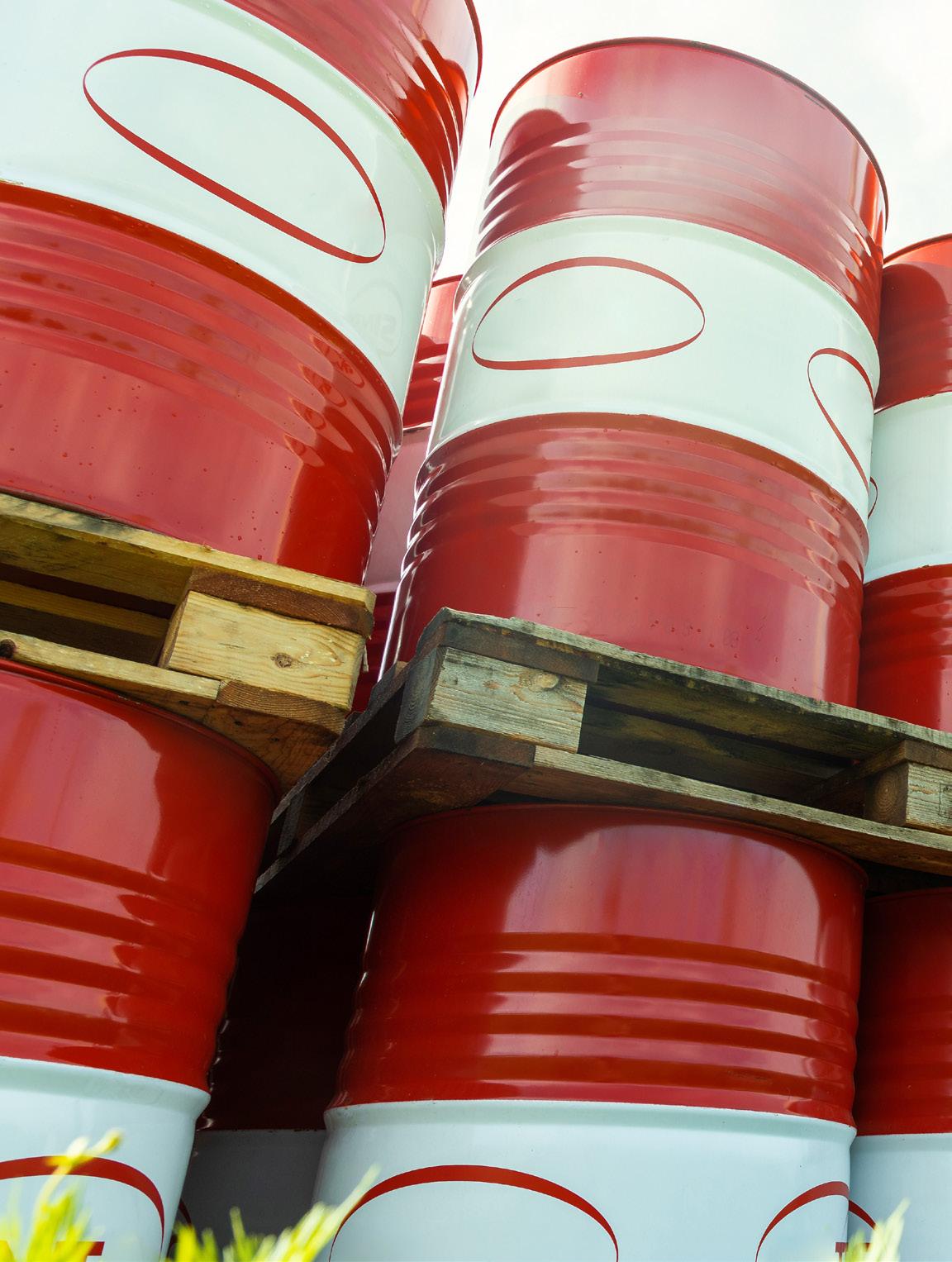
If it happens, then, as per the IMF predictions, the GDP of Hungary, Slovakia, and the Czech Republic could go down up to 6%. Global economic growth will see a 2.6% slump by the 2022 end, followed by another 2% in 2023. European countries have already gone for new renewable energy projects, including the construction of the new Liquefied Natural Gas (LNG) terminal for more imports from the US and Azerbaijan. They are even mulling new nuclear power plants. As per the experts, these initiatives will take some six to ten years to get completed. Still, the road looks long. Despite its anti-Russian stance, Europe has increased Russian diesel import by 22% since 2022 July and paid €85 billion for this, an increase of €6.6 billion since 2021. The European Commission has started implementing measures to cut short Russian gas imports by 100 bcm by the 2022 end and further aiming for a 15% reduction by March 2023.
In a research paper titled 'How higher oil prices could affect euro area potential output', backed by the European Central Bank, the increase in energy prices has been termed as a 'significant supply shock' which will affect the region's economy. It also said that the oil prices (from 2022 to 2024) in US dollars would remain around 40% higher than the 2017-19 range. The study also cited the Ukraine war and the subsequent supply chain bottleneck behind the oil price rise.
The Organization of the Petroleum Exporting Countries (OPEC) in May cut its forecast for growth in world oil demand in 2022 for a second straight month, citing the Ukraine war, inflation, and COVID. Its monthly report said that the world demand would rise by 3.36 million barrels per day (BPD) in 2022, down 310,000 BPD from its previous forecast. In the initial days of the Ukraine crisis, oil prices reached above $139 per barrel,
the highest since the year 2008. It batted for global consumption to surpass the 100 million BPD mark by 2022-end. If the forecast comes true, then this year's annual average will just exceed the 2019 price tag as well. The report also lowered 2022's economic growth forecast to 3.5% from 3.9%, giving a hint about another recession. OPEC+ (OPEC plus Russia) has also seen a dip in its oil output due to western sanctions on Russia. Its April output rose by 153,000 BPD to 28.65 million BPD, lagging behind the 254,000 BPD rise mandated under the OPEC+ deal. It cut its growth forecast for 2022's nonOPEC supply by 300,000 BPD. The forecast for Russian output has been reduced by 360,000 BPD, whereas US supply rose by 880,000 BPD. The whole chain of events suggests another 2008-09 like crisis situation for the oil and energy sector.
In 2008 June, oil prices came down from $133.88 to $39.09 in February 2009, while natural gas prices tanked from $12.69 to $4.52. While from the mid-1980s to 2003, the crude oil price was under $25, as per the New York Mercantile Exchange (NYMEX), it rose above $30 by the
The world demand would rise by 3.36 million barrels per day (BPD) in 2022, down 310,000 BPD from its previous forecast
2003 end, touched the $60 mark by 2005, and peaked at $147.30 in early months of 2008. While geopolitical tensions such as Israel-Lebanon 2006 conflicts, North Korean missile tests, row around the Iranian nuclear program, along with the falling dollar, were cited behind the rise, reports
pointed towards petroleum reserves decline and subsequent financial speculations. When the global recession arrived in 2008, energy demand shrunk and oil prices collapsed to a record low of $32. It got steady by August 2009 and remained in a broad trading range between $70 and $120 till 2014 and reached the 2003 levels by 2016. In 2018, with a record increase in oil production, the US became the leader in the field as 2018 arrived.
In the US, gasoline consumption saw a declining trend. From 0.4% in 2007, it tanked by 0.5% in 2008. The oil prices reached a record-setting high and then crashed down, all in the same year of 2008, resulting in a 1.2 Mbbl (190,000 m3)/day contraction. It was the largest annual decline since 1980 in US history. Countries such as China and India used the fuel subsidy option to protect their domestic population from higher market prices. However, Beijing removed the measure in 2008 as its governmental cost rose. In June of that year, the country hiked its retail fuel prices by as much as 18%. Most Asian countries, including Malaysia, Indonesia, Taiwan, and India followed the suit. A Reuters report on the 2008 crisis, stated that other than Japan, Hong Kong, Singapore, and South Korea, other Asian countries opted for the subsidy route. However, it also pointed out a drawback of the measure by saying that subsidies are not enough to battle the oil price hike and countries with weaker financial set-ups won't gain from this. It cited the examples of Indonesia, Taiwan, Sri Lanka, Bangladesh, India, and Malaysia either raising fuel prices in their domestic markets or working towards it.
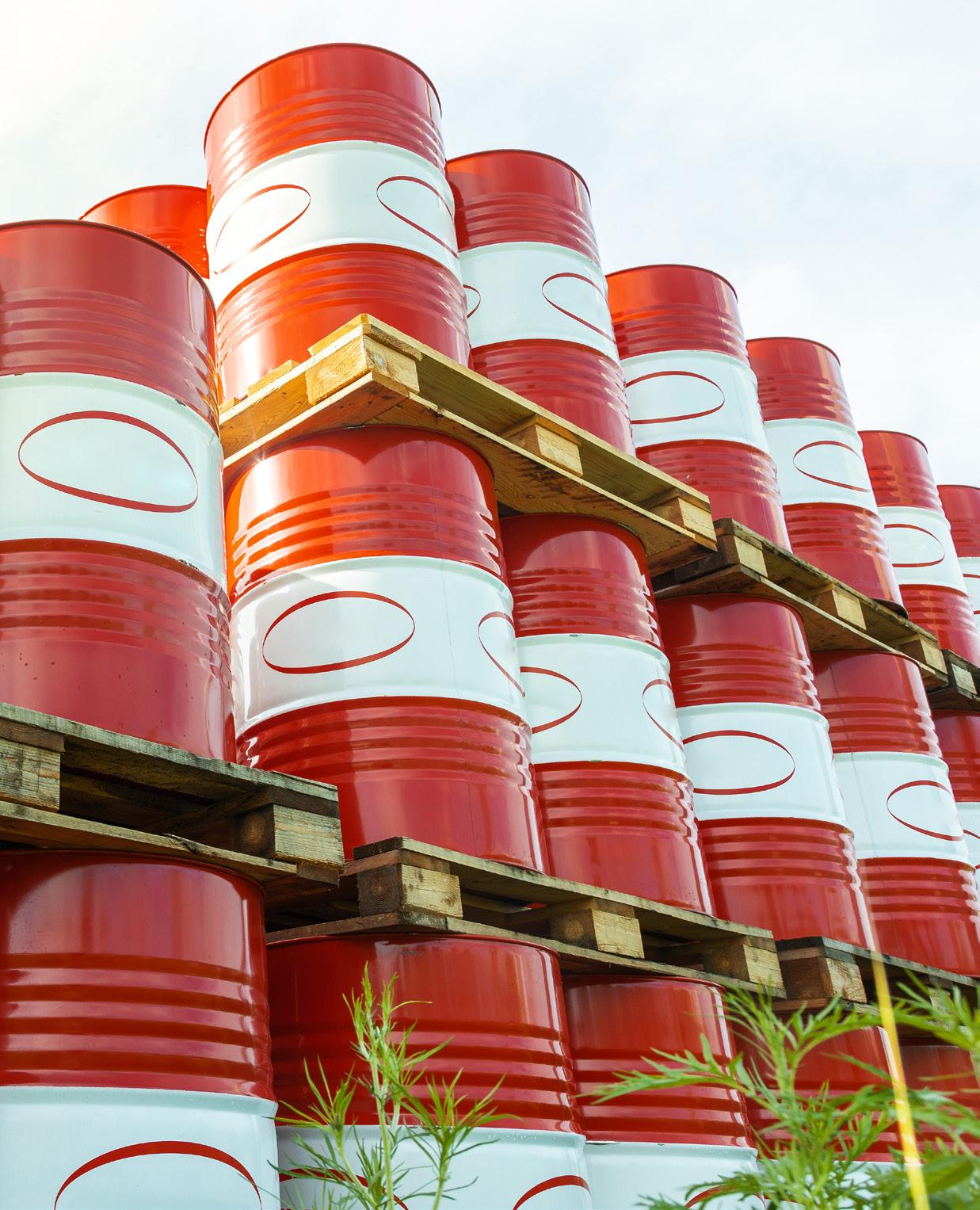
After 2000, volatility in global prices became a new phenomenon and it emerged as one of the key factors during the 2008 crisis. An increase in oil prices as per currencies' fluctuations became a driving force in the global economy. A classic case study was the dollar. From 2002 to 2008, in the US, the oil price reached from $20.37 to nearly $100 and became expensive by 4.91 times. In the same period, the Taiwanese dollar gained value over its US counterparts and the fuel there became
costly by 4.53 times. The same price tag rose by 4.10 and 2.94 times respectively in Japan and Eurozone as Yen and Euro gained their values as well. The message was clear, 'if the dollar index rises, so will the price tag of crude oil '. The US also saw high oil prices contributing to inflation averaging 3.3% during the 2005–2006 calendar, which was way above the 2.5% mark since 1995.
For the developing and less-affluent economies, crude oil price rise witnessed a fall in GDP and employment rates, affecting the poor. For example, reports back in 2007-08 suggested that in South Africa, with a 125% hike in the crude oil price, employment and GDP rates went down by 2%. Household consumption was also reduced by 7%. The country had to reduce its gold production as well.
The larger impact was felt globally in the form of a recession and pressure on the banking system amid sliding oil prices. November and December of the year 2008 saw a falling global demand growth. Talking about the unstable crude oil price, in 2009, it fell below $35 in February, then rose back to the November 2008 mark of $55 by May. In 2011, it rebounded above the $100 per barrel mark due to the political protests and civil wars in the Middle East and North Africa, along with the Iran sanctions. Till 2014, the rate fluctuated around $100. During 2014-15, the global oil sector saw the oversupply phenomena again, as the US registered a significant increase in oil production from its 2008 levels. In 2016, OPEC Reference Basket fell to $22.48 per barrel.
The European Commission is determined to go ahead with the energy price cap on Russian supplies to the continent. The US is also pressuring the EU to get the cap in place by December 5, in an effort to choke the oceanic trade paths for Moscow. But a lack of consensus among the EU members on the price cap move, with Hungary and Cyprus expressing their reservations.
But implementing the price cap and shipping ban moves, also backed by the G7, looks difficult to implement. Greece owns the majority of the oil tankers in the region and the UK contributes to the oil trade with its insurance industry. Also, India and China haven’t joined the ‘price cap’ bandwagon either, indicating that Russia has an alternative
market still open, after the measures kick in December. The biggest sufferer of this whole economic warfare will be Europe again.
Global Business Outlook caught up with eminent geologist Grant Wach, who shared his insights about the ongoing energy crisis in Europe, soaring energy bills, the 2008 oil crisis, and much more.
Professor Grant Wach began his career advising worldwide for multinational companies in the energy sector and is now Professor of Geoscience at Dalhousie University. His research includes energy sustainability, geothermal energy, and carbon storage; his research goal is to understand the reservoir component of petroleum, CCUS and geothermal systems; part of the path to carbon neutrality, and the steps towards the energy transition/ diversification the world is now undergoing.
He is an expert advisor to the Energy Sustainability Committee of the UNECE and the team released their technology brief on CCUS. He has advised the Nova Scotia government on Carbon Storage and Sequestration. Professor Grant Wach co-led the EAGE Workshop on Geothermal in Latin America, with follow-on courses to the EAGE worldwide on Geothermal and CCS in 2022.
Having completed his D.Phil. (Geology) from the University of Oxford, he was the first recipient of the AAPG Foundation Professor of the Year Award, awarded the prestigious Darcy McGee Beacon Fellowship, and was the recipient of the CSPG Stanley Slipper Gold Medal for outstanding contributions to exploration and development, teaching, and mentorship.
GBO: Despite its huge dependence on Russian natural gas, Europe decided to cut down its supply. Europe is now scrambling for alternative sources to fill the energy void. What is your take on it?
Professor Grant Wach: A year ago, I lectured on the
The world demand would rise by 3.36 million barrels per day (BPD) in 2022, down 310,000 BPD from its previous forecast
“Energy Transition and Our Winter of Discontent”. This year it will be another winter of discontent, and even more extreme. Hopefully not with the escalation of Russia’s invasion of Ukraine. The winter of discontent will cross the borders of Eastern Europe and continue not only in Western Europe but throughout Africa and the Middle East where energy security and allied foodstuffs will continue to put pressure on the populace and likely lead to civil unrest.
We will see rising prices for energy at all levels for industry and particularly for the people of all nations in Europe and this will cause real hardships and increase costs beyond energy for example food supplies. As an example, Germany decommissioned their nuclear plants and are now scrambling to bring in coal and reactivate its thermal electric plants and are scrambling to replace the gas supplies that
were coming from Russia with alternative energy sources and LNG products from other nations including the United States. The war in Ukraine by Russia is forcing Europe to move far more rapidly to develop alternative energy sources but this does take time and there are complexities in supply. For example, Poland is part of the EEC and as such are bound by the agreements which include the reduction of CO2 emissions. Whereas Russia is not bound by limits on coal production.
When the EU announced the partial oil import ban from Russia, we saw Hungary and Italy protesting the move. Now reports are emerging on the lack of unity among European energy

Ministers on imposing a price cap on the gas supply. What do you think about these developments?
Hungary and Italy are responding to the price cap based on their understanding and projections of what will happen this winter. They want to ensure that they have energy supplies for their populations and industries. As we have seen with OPEC it's always difficult to put in place energy pricing standards. We see embargoes being circumvented and sometimes broken. I believe we will see some standardization of pricing but I do not think it will solve the issue of high energy costs for Europe. My understanding is the price gap is to help penalize Russia for the war in Ukraine but I expect there will still be some increasing markets for example Asia and India for gas resources from Russia.
Reports of commoners suffering due to the living cost crisis, and high energy bills capture the front page of news dailies. Do you believe that the EU bloc unintentionally ended up troubling its domestic population, while maintaining the ‘AntiRussia’ stance?
It was a risk the European Union took. They decided to rightly take an anti-Russian stance for the invasion of Ukraine. Yes, the ramifications are taking hold and there is a scramble to find alternative energy sources including natural gas supplies, particularly LNG. We are a long way from a hydrogen economy so it's not practical to think about hydrogen now. Wind and other renewables are not going to replace the flexibility that natural gas supplies and thermal coal generation and of course Nuclear which is promoted as carbon neutral. Of course, these large-scale plants take several years to be designed, built and commissioned. So yes there will be backlash from the people of the European Union nations.
Russia has diverted a majority of its energy supplies to the Asian markets, whereas Gazprom has cut down Europe’s share of natural gas. With the Nord Stream pipeline not even working on its 30% capacity due to ‘maintenance issues’, is Russia benefitting from the whole episode as they have backup markets to compensate for the revenue loss in the EU region?

Yes, Russia has been scrambling to develop alternative markets, particularly in Asia but remember unless gas is LNG (liquid natural gas) it is going to be difficult to transport unless there are pipelines in place. I am not sure of the LNG capacity and tanker availability in Russia, to transport to these alternative markets. Remember how long it took to put the Nordstream pipelines in place and now they will not be used. It is also very perplexing how the pipeline was damaged by subsea explosions.
If we have to draw the parallels between the oil crisis in 2008 and the one unfolding right now, how would you analyse the present energy shortage in Europe?
It is understood that the energy shortages in 2008 really came at the end of a long energy crisis with developing economies increasing demand and financial speculation that led to the crash. Also with tension in the Middle East, we saw very high oil prices but I don't think we can draw a clear parallel to what we see now in Europe with the invasion of Ukraine by Russia.
During the 2008 crisis, some Asian countries offered oil subsidies on a short-term basis to their domestic populations to protect them from the global price hike. Do you believe a crisis-ridden economy like the UK can afford a similar option this winter?

Yes, there have been talks in the UK about offering energy subsidies to the population and I see other nations in Europe also taking this approach. Of course, there needs to be some sort of help with home heating costs and some relief to businesses and industry, and we could see closures of businesses and unemployment that can lead to further unrest.
Keep in mind that there are often significant taxes associated with petrol prices. We have all seen the little stickers at the gas pumps when you fill your vehicle with petrol. This is one of the things that the government could
do very quickly, is reduce the amount of taxes that are taken at the pumps. Alberta, in Canada, took this initiative and the reduced price of the pump in Canada.
Vladimir Putin has the option of completely stopping the energy supplies to the European bloc this winter. But doing this will cost the Russian economy as the pipelines toward the West have fetched some $120 billion to Moscow since 2012. Will Russia opt for this move that might put a dent in its economy?
Vladimir Putin may wish to continue to penalize the European bloc for their support of Ukraine, and may wish to continue to interrupt energy supplies to Europe, but I believe this will increase the domestic pressure on him to resolve the Ukrainian crisis, once people see that there will be a further impact to the Russian economy, by not having these sales to Europe.
Although European countries have announced new energy projects, including nuclear plants, to cut down dependence on Russia, those look like long-term plans. What do they need to do to solve the immediate power shortage crisis?
Yes, these are long-term solutions including for example developing thermal power generation from coal, with reduced emissions of sulfur and nitrous oxide. But we have to find alternatives, and develop new alternative energy sources, as example, one thing that would work relatively quickly would be installing more geothermal energy that could be done on a smaller scale.
SedHeat is what we call it, allowing buildings to be heated and cooled by heat pumps in the ground. All that is required is a temperature differential. Geostorage is also very important to smooth out the fluctuations from renewable energy sources. Also, we need to have much more development of central heating and cooling in a large city block and building energy efficiency in our building constructions. We need to improve the electric power grid distribution, and ensure that pipeline networks can be more interchangeable between nations for the distribution of petroleum products, and eventual conversion to hydrogen. And of course more emphasis on public transport.
Russia has been scrambling to develop alternative markets, particularly in Asia but remember unless gas is LNG (liquid natural gas) it is going to be difficult to transport unless there are pipelines in place
 GBO Correspondent
GBO Correspondent
A consultancy's analysts, Capital Economics, predict slight declines of 5–10% in the United States and Great Britain
The southernmost city in Canada, Windsor, was the location of Diana Mousaly's months-long property hunt. The peak of COVID-19 coincided with an increase in prices throughout the nation. Before ultimately settling on a home last September, Ms. Mousaly, a 27-year-old clerk at the neighborhood police department, inspected close to 100 properties and submitted around 60 offers, many of which were hundreds of thousands of Canadian dollars above the asking price. Her parents bought a house for half the price ten years ago. But, she sighs, "It's four times bigger than mine."
It's possible that Ms. Mousaly made a poor purchase. Canada's real estate market has been scorching hot for the past 20 years and has only gotten hotter. Things have calmed down now as prices have decreased for three straight months. In other irrational markets, the same is valid. The cost of property has fallen for three months in a row in New Zealand, where valuations at the end of 2021 were up by 45 percent since the start of the pandemic. The most considerable monthly price reduction during the global financial crisis of 2007–2009 occurred in Sweden in June when prices dropped by about 4%. Every two of five houses in Australia were worth less than three months ago.
Higher borrowing rates decrease buyer enthusiasm even in areas where values are still rising. Loan applications are down by more than a quarter from their peak in January, although monthly payments on a typical new mortgage in America are now three-quarters higher than they were three years ago. As a result, a 13-year low in first-time purchasers has been reached.
In Britain, some of the foam is also being blown away. In April, mortgage approvals returned to levels from before the outbreak. However, home sales in May decreased by 10% from last year's month.
How far will prices drop if the global real estate boom finally stalls? A consultancy's analysts, Capital Economics, predict slight declines of 5–10% in the United States and Great Britain. Due to the prevalence of fixed-rate loans in these nations, homeowners are less likely to be forced to sell due to increasing mortgage expenses. However, economists predict a 15% price decline in Australia and Sweden. Canada and New Zealand are especially exposed to rate increases because of their more significant levels of household debt; prices in these nations could decrease by 20%.
Two considerations should prevent house price
declines. One is the lack of housing in most wealthy nations. According to estimates, America will need between 3.8 million and 5.8 million new homes by 2030; England will need 345,000 new homes a year and is now creating half that amount, and Canada will need an additional 3.5 million homes by 2030 if development continues at its current rate. Tight labor markets are the other cause. People are less likely to fall behind on their payments because of the low unemployment rate in many wealthy nations. This should prevent a decline on the scale of the financial crisis in all but the shakiest markets when combined with improved household finances.
Yet we will feel the hurt differently everywhere. Hotspots for pandemics are particularly at risk. The hunt for expansive gardens or green space during lockdowns

put housing markets into a frenzy. Parisians immigrated to rural France. Istanbul's Turkish population relocated to resort areas. Londoners who wanted to take advantage of remote work migrated to green communities like Richmond and Dulwich or left the city, searching for less expensive housing.
These markets are beginning to show cracks. Fewer bidding wars are occurring in American mountain towns and sunbelt areas that draw wealthy Californians and New Yorkers. For example, three-fifths of the properties for sale in Boise, Idaho, had their price reduced in June, compared to more than half in Salt Lake City, Utah. What remains to be seen is how low prices will go.
The Royal Bank of Canada predicts that domestic sales will decline by more than 40% from their peak in 2021, which would be worse than the financial crisis's 38% decline. There might not be as much drama elsewhere. Any reduction, though, may surprise owners used to prices moving in only one direction.
A housing bubble, often known as a "real estate bubble," is when the price of housing rises quickly due to a growth in demand, a housing shortage, and emotional buying.
A sustained period of below-average interest rates is another important factor that may be to blame. More individuals can purchase thanks to lower rates, which increases demand. In addition, when investors see that house prices are rising, they also enter the market, which increases demand even more.
The phenomenon is a bubble that will unavoidably burst at some point. It often explodes when interest rates increase once more, eradicating demand. Between 2007 and 2010, this is what took place.
A housing bubble is a market circumstance when prices increase above what most people consider acceptable or sustainable. Looking at home prices with household income is one practical approach to spot this condition: The
median home price is roughly four times the median household income in a housing market that is in balance. A bubble forms when it begins to exceed five times.
When the demand for housing exceeds the supply, a bubble can also develop; in this case, housing prices must often rise quickly and unreasonably quickly. Homebuyers may feel they must overpay to enter the market as a result, while sellers may believe they can demand top money to exit. The bubble eventually bursts, causing a decline in property values.
The distinction between a true housing bubble and a simply scorching real estate market is crucial. Hot markets are regionalized and influenced by regional factors. Although hot markets frequently occur—a hot market has been prevalent over most of the United States for some years—bubbles are uncommon. The effects of a burst housing bubble, which may include falling property values and an increase in foreclosures, may spread throughout the greater economy.
What results in a housing bubble, and how can you recognize one?
A housing bubble is frequently a sign of inflating prices artificially. That condition can be caused by various variables, including a quickly rising demand and a shortage of resources to meet it. Low mortgage rates, lax credit criteria, and broad investor speculation are further potential contributing causes.
Low rates cause more people to buy, which decreases supply, which causes more people to buy, and so on. Real estate supply can take some time to adjust and add inventory; in some markets, it may not even be possible to do so promptly. The average homebuyer may be priced entirely out of the market when professional house flippers and real estate investment companies are factored in.
If a housing bubble were a balloon, all it would take to deflate it would be one puncture. Of course, many factors might cause a housing bubble to burst, but an abrupt increase in interest rates is typically to blame.
When a bubble bursts, the effects on investors, homeowners, and the economy as a whole may be disastrous. Banks and other lending institutions may be left with mortgages for homes no longer worth the amount borrowed or the price paid when property prices fall. This might lead to banks restricting credit to consumers and businesses, decreasing overall credit and dampening overall economic activity.
Additionally, homeowners may struggle if values drop significantly. Buyers run the danger of ending up "underwater" if they overpay during a bubble's inflated prices and later prices decline. When the house's value has decreased below the loan balance, a mortgage is said to be underwater; in other words, the homeowner now owes more on the mortgage than the house is worth. One of the most common effects of a housing bubble is for homeowners to be in a negative equity position, commonly known as being underwater in their homes.
Given that the housing sector is a critical economic driver, the economy is frequently severely damaged when a housing bubble bursts. As a result, a recession or, in extreme situations, even a crash could occur.
The implosion of a real estate bubble that started in the 2000s was a factor in the financial crisis of 2007–2008. Early in 2006, housing prices reached their peak. When the Fed began raising rates in 2006 and 2007, housing prices began to fall. The Case-Shiller Home Price Index announced its most significant price decline on December 30, 2008. Millions
of homes were foreclosed upon because many homeowners could not repay their debts, resulting in mortgage defaults. The Great Recession is the name given to the economic disaster that followed this bubble's deflation.
Low-interest rates on mortgages and a high number of first-time homebuyers are sometimes linked to housing bubbles. Sounds recognizable? It makes sense that many people are wondering if there will be a housing bubble in 2022.
The majority of specialists and economists concur that the market is not about to experience a bubble burst like it did in the early 2000s. There are several reasons why analysts do not predict a coming crisis, although the housing market is still quite hot. These include persistently high demand, limited inventory levels (although housing inventory is gradually increasing), and significantly stricter financing rules.
The number of foreclosures may decline due to these tougher credit conditions. However, if a recession occurs, many individuals would probably lose their jobs and be unable to pay their mortgages. Therefore, the impact of stricter borrowing rules may be minimal if this occurs.
A bubble might not be the ideal moment to shop if you're among the many individuals seeking to purchase a home. Staying put and waiting it out might be a good option if you have the luxury of doing so, and your perseverance will probably be rewarded. However, if you can't wait, complete your homework before making an offer on a house whose price might be exorbitant. A knowledgeable local real estate agent can assist you in deciding what's best for you and perhaps even help you uncover a hidden gem in a competitive market.
Bedik people say that despite the process of cultivating fonio being a laborious one it is easy and reliable
GBO CorrespondentJean-Pierre Kamara took a handful of small seeds and showered them over the freshly ploughed land near his village located in Senegal’s southern foothills.
More clay dirt is being loosened for sowing by a group of young guys in front of him, while aged villagers follow behind and rake the soil back over the seeds.
The village works conscientiously as a unit to grow fonio (one of the oldest cultivated grains in Africa), an invaluable grain that is essential to their nutrition and may be harvested in as short as six weeks. They break only at midday to replenish peanuts and palm wine.

Bedik people say that despite the process of cultivating fonio being a laborious one it is easy and reliable.
They pointed out that it is grown naturally, unlike mainstream crops such as rice and wheat, which is much harder to grow.

Harvest time
6 Weeks
Consumed in Burkina Faso, Guinea, Senegal, Mali, Nigeria
Other names
Acha, Iburura, Hungry rice
chemicals used; it just grows naturally and then we harvest it. We don’t add anything."
Academics and policymakers are now advocating for fonio to be adopted more extensively in Africa in order to increase food security, along with other native foods like Ethiopia's teff, as well as cassava and various millets and legumes.
Following the UN's stern warning that the countries located in the Horn of Africa are facing extreme hunger, this move comes into play.
Many others have been hugely impacted by increasing wheat prices caused due to Russia’s invasion of Ukraine.
Recently, International Finance Corporation MD Makhtar Diop stated that these crops were underutilized and need research, marketing, and massive investment.
These indigenous foods could lessen the dependence of the continent on imported wheat, rice, and maize, which are currently the main mainstays of most people's diets but typically do not grow well in Africa. These traditional foods have greater nutritional values and are drought resistant.
Because of the fact that so little of the continent is suitable for cultivating the crop, the African Development Bank's proposal to increase food security by investing $1 billion in growing wheat in Africa has been met with skepticism.
The main ingredient of Senegal's current diet is its ability to import around 70% of its rice. Four regions alone contribute 436,000 tonnes of domestically cultivated rice.

Senegal, which does not grow wheat, in 2020, contributed only 2% of its imports. Wheat made up 2% of Senegal's imports in 2020 as it is not grown there.
According to the UN’s Food and Agriculture Organization, in 2019, Senegal produced just around 5,100 tonnes of fonio with most of the contribution coming from around the south-eastern Kédougou region. However, there are initiatives taken to increase production. Senegal's neighbours Guinea produces 530,000 tonnes of grain.
Forgotten Crops Society co-founder and agronomist Michel Ghanem feels that more investment needs to come in for these foods that have been neglected.
Ghanem said, "In sub-Saharan Africa, the diets were not wheat-based. They’re shifting; they’re becoming wheat-based, unfortunately, which is leading to non-communicable diseases, obesity, and all sorts."
“You have lots of indigenous crops – like teff, fonio, sorghum – that people still eat today but have been neglected by funding agencies, the international research organisations, but definitely not by consumers. And it’s now that we should invest in these because they could close that [food] gap," he added.

Researchers believe that these foods that have been neglected for ages have several nutritional benefits and possess important micronutrients as well.
The US National Research Council conducted a study on neglected African crops in the 1990s and discovered that while teff was high in protein, amino acids, and iron, fonio and finger millet were rich in the critical amino acid methionine, which is frequently missing in western diets.

Western researchers for long had misunderstood Fonio and labelled it as 'hungry rice' as it was consumed more during the food scarcity periods because of its reliable and quick growth.
In addition to providing far greater hunger satisfaction than the predominant grains, fonio, according to Kamara, also has a nuttier flavour and texture that people enjoy.


Kamara said, “During festivals, when we have lots of guests and want to honour someone, we give them fonio – it’s a privilege."
Slow Food International vice-president Edie Mukiibi pointed out that the destruction of biodiversity in agriculture was because colonialism forced "monoculture" farming on Africa and other colonised areas.
According to Mukiibi, during colonialism, significant areas of land were taken over for plantations that produced cash crops like
sugar, tea, and cocoa for export, while during the "green revolution" of the 20th century, the notion of growing high-yield grains to fight starvation was supported.
Mukiibi said, “The plantations kept on growing, supported by the colonial governments in the global south, and they did not contribute to biodiversity. They cleared large areas of diverse land, which initially was covered by the traditional intercropped African farming systems or the ‘milpa’ systems in Latin America, like in Mexico."
As people could no longer feed on the area cleared for the crops, Mukiibi continues, they changed their diets.
According to Mukiibi, indigenous grains are much better suited to surviving when planted alongside other crops than popular imports, which necessitate ecosystem adaptation to maintain the proper conditions.
The doctors have recommended indigenous food to diabetic patients, while health food brands and aid organisations have also been promoting them.
Fonio has recently gained in popularity and may now be found on restaurant menus in the more affluent areas of Senegal's capital Dakar.
Export supporters believe that by increasing the crop's profitability, farmers will be motivated to cultivate more fonio.
New York-based Senegalese chef Pierre Thiam, who co-founded Yolélé to buy the grain from smallholder farmers and market it as a "superfood" in the west, has been one of the most vocal proponents of fonio.
Yolélé works with SOS Sahel, an aid organisation that assists farmers in enhancing their lands and raising fonio output in an effort to fight unemployment in the area. By 2024, the NGO hopes to have increased production by 900 tonnes.
Aissatou Ndiaye, 75, who cultivates fonio on 50 hectares of land close to Kédougou and imports it from Mali and Guinea for sale, claims that she has benefited from NGO assistance and funding, but she is worried that some of the new interest is displacing locals from their source of income.
Ndiaye said, “There is a European buyer who comes here with big containers, fills it with the harvest from their local partners, and sells it all abroad. It should be feeding the population here. I can’t support them taking everything and selling it outside. That’s not fair. It’s not helping the farmers."
“There is big potential for fonio growing, you can grow as much as you want, the yield is much better than rice or maize – the only problem is that we need help improving the processing for harvest. I would like to grow more than I do, but I don’t have the machinery to harvest anymore,” she added.
Ndiaye is aware that more research will be needed to ascertain whether technology can make the labor-intensive process of cutting fonio grass and removing the husks less onerous. However, she is concerned that scientists would focus on genetically modifying the grain to ensure higher yields.
“We need more research, but they shouldn’t spoil it or damage it; they shouldn’t add anything to it. It might seem good to increase the yield but it’s not good for the nutrition. Fonio is natural – I want it to be protected and not to be spoiled so it becomes like other foods," she concluded.
The earliest cereal in Africa was developed using a heritage grain called fonio. It is a staple food that originated in West Africa and is primarily consumed in the hilly regions of nations like Burkina Faso, Guinea, Senegal, Mali, and Nigeria. Fonio is also known as acha, iburura, and hungry rice.
Fonio can be used in the same ways as other grains, such as in salads, stews, soups, porridge, and baked goods when ground into flour. It has the earthy and nutty flavour of couscous and the creamy yet crunchy texture of quinoa.
Fonio is one of the most nutrient-dense grains in the world and is naturally glutenfree. It is also rich in essential minerals and amino acids.
“There is big potential for fonio growing, you can grow as much as you want, the yield is much better than rice or maize – the only problem is that we need help improving the processing for harvest. I would like to grow more than I do, but I don’t have the machinery to harvest anymore”
— Aissatou Ndiaye
According to a warning from the industry's trade body, nearly half of the UK's automakers and component suppliers have cut back on or delayed investment because of growing energy costs. The group also sought "longterm motion" from the government on business expenses.

The Society of Motor Producers and Merchants reported that producers had seen an increase in energy costs of £100 million and that the industry could be in jeopardy without extra state assistance.
As part of a $150 billion package to help businesses and people with high fuel and electricity expenses, the federal government will begin freezing enterprises' energy bills. In an SMMT study, more than two-thirds of the 800 automotive or component manufacturers operating in the UK expressed concern about
the future viability of their businesses in the spring when energy costs are predicted to treble after the current restriction is lifted.
According to SMMT projections, the industry has experienced an increase in energy expenses this year of £100 million, bringing its total bill to £300 million. SMMT Chief Government Mike Hawes hailed the federal government's decision to limit energy costs.
The US plastics business rose from eighth to sixth largest industry in the nation in 2022, accounting for about one million employees and $468 billion in shipments, according to the Plastics Industry Association (PLASTICS). The industry's size increases to little over

$600 billion when you factor in captive plastic goods and the related supply chain, such as automotive assembly or milk bottling factories.
The 2022 Size and Impact report from PLASTICS has just been released, and it contains these and a tonne more
other facts and data. Chief Executive Officer Matt Seaholm of the Association and Chief Economist Perc Pineda held an online news briefing to highlight some key findings from the report.
Seaholm noted that he was “immensely proud” of the plastics sector moving up from the eighth to sixth largest industry in the United States. In many categories, the plastics industry performed better than the entire manufacturing sector. For instance, from 2020 to 2021, employment in the plastics business increased by 3.2% compared to 1.5% in manufacturing. According to PLASTICS, employment, shipments, and added value have performed better in the plastics business.
According to SMMT projections, the industry has experienced an increase in energy expenses
In view of the flourishing diagnostic and device business, which is believed to be worth $600 billion and is rapidly expanding, one of the most significant medical technology consultancy firms in the world is aiming to broaden its presence in the Middle East.
According to CEO Scott Pantel, Life Science Intelligence (LSI) brings together investors, entrepreneurs, and business executives in the MedTech sector, which is growing at a rate of about 5% annually.

“We have a sincere interest in partnering with investors in the Middle East who see the value of health care and MedTech. We are thinking seriously about bringing
an event to the Middle East in the next year or so. The Middle East and the UAE is a very cutting-edgetechnology-driven part of the world and we are finally seeing the convergence of traditional medical devices and diagnostics with data software and tele-health”, Pantel said.
"We are very bullish about space. We think this industry is set up for double-digit growth over the next five years. So, we are very much looking forward to aligning ourselves with groups in the Middle East who would like us to bring this type of innovation to the region”, he added.
China's industrial companies saw faster declines in profits as the country's economy continued to deteriorate under the weight of COVID restrictions and a worsening real estate crisis. According to data from the National Bureau of Statistics (NBS), industrial earnings decreased by 2.1% in the first eight months of 2022 compared to the same period in the previous year, following a 1.1% decline recorded in January-July. For August and July, the bureau omitted solo numbers.

A property crisis and COVID lockdowns clouded the picture, but China's economy surprised observers with its remarkable resilience in August, with faster-than-expected increase in factory output and retail sales.
Bruce Pang, a chief economist at Jones Lang Lasalle said: "The economic recovery is facing more uncertainties, as the momentum was disturbed by a variety of unexpected and external factors such as extreme hot weather, regional power restrictions and COVID flare-ups".
Due to lower commodity prices, profit growth in the mining industry fell to 88.1% on year in January–August from a 105.3% rise in the first seven months. In the first eight months, the manufacturing sector's profits fell 13.4%, accelerating from a 12.6% decline from January to July.
The Village of “Al Gusman” in Riyadh was the beginning of the journey of prosperity and expansion of Abdullah AlOthaim Markets. In 1956, the late Sheikh Saleh Al-Othaim opened the first branch in the heart of the commercial business area under the name Saleh AlOthaim Trading Establishment. In 1980, Abdullah Al-Othaim founded Abdullah AlOthaim Markets Trading Company, continuing his father's path by widening the business and opening wholesale and retail stores in grocery food. Abdullah Al-Othaim was influenced by his father, Saleh Al-Othaim, who provided him with the necessary knowledge in the commercial field while following his advice: "Selling a lot with a little profit." His father's friends influenced him too through their advice and practical training, which positively impacted his personality in dealing with the market in any circumstances. Abdullah AlOthaim pointed out, "Success goes through many obstacles and difficulties that require patience,
wisdom, and self-confidence to overcome them. Before anything else, the love of God, honesty, and perseverance. In addition, to the importance of careful attention to details before embarking on any project."
In 1990, AlOthaim had the most significant turning point when the number of stores reached 14. Later in the year 1992, big warehouses with international standards were opened to support growth and development of the AlOthaim with its numerous centers. These warehouses were equipped with the most modern dry and cold storages. In addition to the increase of distribution vehicle fleet to promote service levels provided to clients in collaboration with suppliers.
In 2000, AlOthaim Markets turned into a limited liability company. It continued to achieve growth rates confirming the remarkable development in the company's activity, in which growth rates recorded were high. In 2006, it was transformed into a holding Company under which Abdullah AlOthaim Markets Company falls. In 2016, Forbes magazine ranked it 109th in the list of the 200 most powerful companies in the Arab world and 50th in the list

The business philosophy of Abdullah Al-Othaim was selling a lot with a little profit
of the 100 most powerful companies in the Kingdom of Saudi Arabia. It was also ranked 3rd in the list of the most powerful retail companies in the Arab world.
Urban cities are expanding, the population is increasing, and the young generation is more and more shopping from modern trade, making it an additional factor for retailers to expand further. Especially since 70% of the people are under their 30s. In addition, Saudi Arabia's 2030 vision is to strengthen its image as a tourist destination and one of the world's top livable countries.
As of today, AlOthaim Markets operates across KSA and Egypt with more than 300 outlets. It is among the largest Saudi joint-stock companies and the second leading retailer in grocery retailing. In 2022, Abdullah AlOthaim Markets was ranked 3rd within the top 10 most valuable Retail brands in the Middle East, with its brand value increasing +24% to $587M over the course of 2021. This impressive growth has consolidated the brand’s position as one of the most valuable grocery retail brands in KSA. The company is also continuing its massive expansion plans to increase the number of stores all over the Kingdom, cementing its leadership in terms of footprint to increase its value and profit.
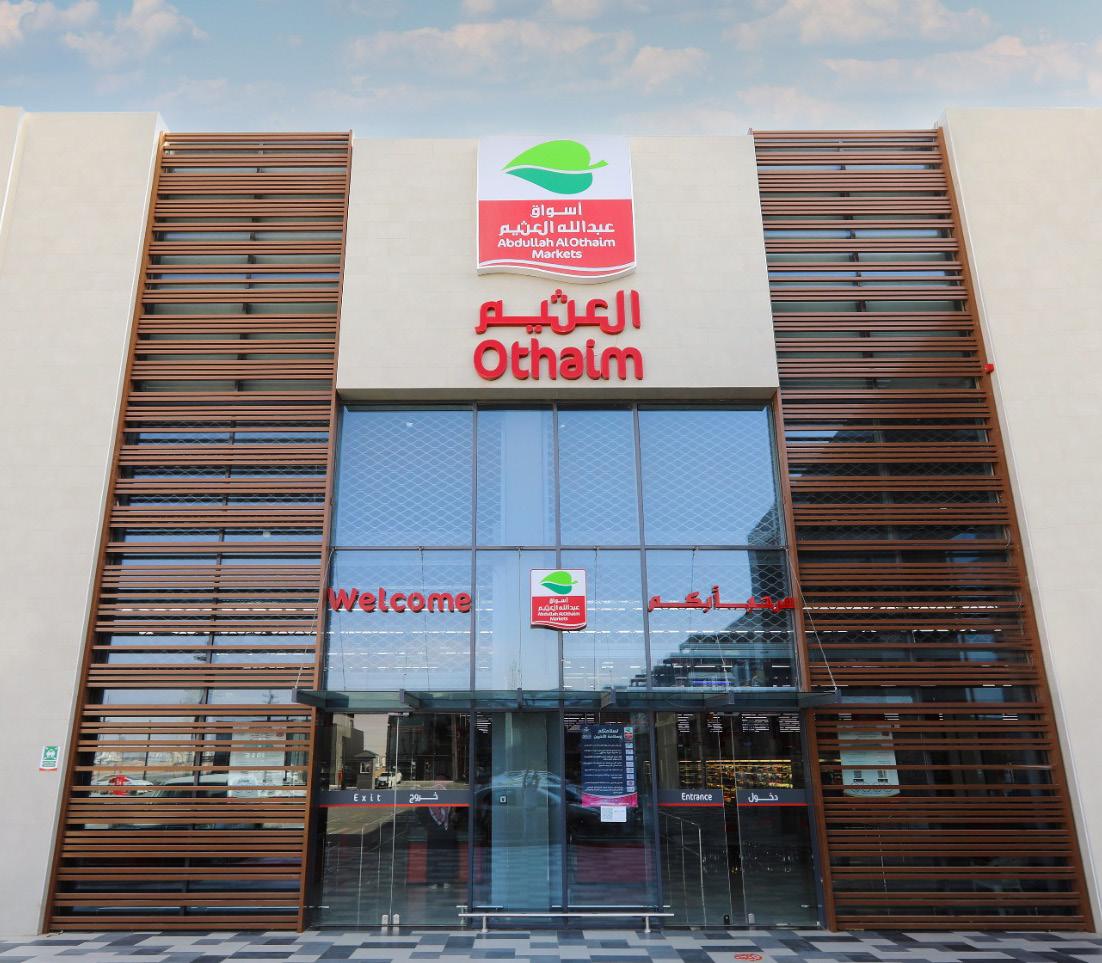
It has continuously participated in reducing the unemployment rate ever since. In 2000, AlOthaim Training Center was founded, providing a selection of functional and soft skills training. Preparing the youth for the labor market in various jobs by providing them with the necessary skills and tools to start their professional career. Moreover, to keep up with the rapid development and growth in Saudi Arabia, in 2005, the training center was transformed into an academy, as the first academy to provide free training across the retail sector. In line with Saudi Vision 2030, AlOthaim Markets is leading the way in recruiting Saudi nationals for all positions and increasing hires of women in the workforce. In 2020, female employment witnessed a growth of 220%, making it among the leading grocery retailer in KSA to empower women.
It also takes pride in its well-known loyalty Iktissab Program; a way in which it shows its appreciation for its customers. With Iktissab, customers earn cash added to their account balances that can be used in the future for every purchase from all AlOthaim points of sales. Recently, the company was announced as the “winner of the Marketing Initiative of the Year” award. It was in recognition of the “Massive campaign Celebration of its 65th anniversary with its customers.” The core objective was to reward its esteemed customers and to create a stronger bonding with them.
Despite the challenges behind every transformation
strategy, it has a very ambitious vision, planning to increase its footprint with five-year expansion plans, improve customer experience across all its formats, and improve offering with the Private Label and Fresh Food portfolio. To date, it is already witnessing growth across almost all the critical KPIs compared to previous years. The vision will not be limited to increasing stores but will be more around offering its customers an outstanding experience across all touchpoints and promoting sustainability practices across all its activities.
2022, Abdullah AlOthaim Markets was ranked 3rd within the top 10 most valuable Retail brands in the Middle East, with its brand value increasing +24% to $587M over the course of 2021
Analysts are skeptical about the tech billionaire's behavior, and legal experts believe Musk is bound to lose in court
Following the cancellation of his $44 billion (£37 billion) purchase of Twitter, Elon Musk took to the platform he no longer wishes to acquire and mocked its anticipated legal response.
"They want to compel me to acquire Twitter in court," Musk tweeted to his 100 million followers. Despite Musk's withdrawal in a dispute over the amount of spam or bot accounts on the site, Twitter has grounds to compel Musk to buy the company.
But, as usual, the case with the transaction, the world's richest man appears to dismiss the threat. "Now they have to divulge bot info in court," one caption in the tweet says, accompanied by a sequence of photographs of Musk laughing out loud. It was followed by a photo of Chuck Norris at a chessboard, with Musk tweeting beneath it, "Chuckmate."
Constantly surrounded by the best advisers money can buy, Musk's relationship with the legal details of his now-abandoned $44 billion Twitter takeover has been inconsistent. On the one end, his legal team has made vehement filings opposing the sale, citing numerous provisions in the agreement. On the other side, he sends poo emojis to the folks with whom he is negotiating.
Indeed, the scatological caricature aimed at Twitter CEO Parag Agrawal likely violated a merger deal that Musk has already broken. Musk struck a deal to buy the social networking site more than 2 months ago, which included a condition in which he promised not to "disparage" the firm or its employees.
A day later, Musk was criticizing Twitter employees, including Twitter's legal chief, Vijaya Gadde. Dick Costolo, the former CEO of Twitter, blamed Musk for bullying Gadde.
It was the first indication that Musk was not taking the pact seriously, or was unwilling to limit his behavior as per the terms of the agreement. Given the condition in the contract and Musk's recent activity on Twitter, it's unlikely that Twitter was surprised. Musk agreed with the US Securities and Exchange Commission in 2018 over a tweet saying he had "financing secured" for a proposal to delist Tesla from the stock market.

Twitter stated in a letter recently that Musk's cancellation of the deal was "invalid and unjust." It pointed to the disparagement clause as one of the instances where Musk had broken the agreement.
Twitter has stated that it will seek legal action in Delaware, the US state with authority over the transaction, to
"enforce the merger agreement." It can seek a $1 billion break free from Elon or petition a judge for "specific performance," which implies compelling Musk to proceed with the agreedupon deal at $54.20 per share. Musk believes Twitter will go with the latter.
Musk looked sincere about purchasing the company when word of his bid leaked on the 14th of April, even though the $54.20 price tag suggested a cannabis joke, considering that "420" is slang for marijuana. The billionaire said he wished to unleash the platform's "amazing potential" to promote free expression and democracy worldwide. "Having a tremendously trusted and broadly inclusive public forum is extremely important to the continuation of civilization," he said at a TED conference.
In Nov 2021
Musk Surpassed Jeff Benzos of Amazon and became the richest person in the world with a net worth of over $300 billion
22,050 Cr USD (2022)
Born on 28 June 1971 (age 50 years), Pretoria, South Africa
Bachelor of Science
Degree in Physics as well as a Bachelor of Arts in Economics
Passion to read books, computing, and video games
Even when it became evident that Musk was leaving, he met with Twitter employees in a Q&A, saying he wanted the platform to build a "better, long-lasting civilization." He was also interested in the firm enough to put together a funding package that comprised $13 billion from banks and a promise of more than $30 billion from his pocket, albeit with donations from the Binance cryptocurrency trading site and computer magnate Larry Ellison.
Nonetheless, his erratic behavior has some onlookers wondering how serious he was about purchasing the company. If he intended to buy the company from the start, a recent drop in tech stocks has influenced his decision, according to Drew Pascarella, a senior lecturer in finance at Cornell University.
"Elon is a daring and divisive public figure." Twitter is a goldstandard social media channel that Elon has exploited controversially for years. "The ultimate boss move is the acquisition of the asset and the capacity to dominate it," Drew says. "I believe Elon was serious, and the banks did as well." Given what happened to share values after the deal signing, he risks looking quite foolish by paying what is now an absurd amount."
Twitter shares slumped 11.3 percent in New York on Monday to $32.65, bringing their year-to-date decline to almost 23 percent. The tech-heavy Nasdaq index, which has plummeted 25 percent this year, indicates the whole market.
Musk's attorneys are among the few legal experts who believe he has a shot in Delaware. His claim is
based on Twitter's quarterly filings, which state that spam accounts account for fewer than 5% of its daily active user base, which now stands at 229 million individuals. Twitter has regularly stated this since 2014 and has provided Musk with public tweet data to persuade him that their estimate is reliable.
Musk's reasons for terminating the agreement are threefold: Twitter broke the deal by neglecting the request for information info on spam accounts; Twitter falsified the number of bots in its disclosure requirements to the US financial watchdog, and the company violated the agreement by failing to discuss with Musk when recently firing senior employees.
Quinn and others believe Musk will fail. "Does Musk have compelling legal arguments?" "In a nutshell, no," Quinn responds. Uncomfortable with Musk's argument, lawyers claim his information requests were unreasonable, that proving the spam estimate is fake is exceedingly unlikely, and that letting go of senior executives is part of the day-to-day operation of the company.
Nevertheless, some legal and corporate analysts predict both parties will strike an agreement to prevent a situation in which Musk is obliged to buy a firm he does not want while the company's morale and share price suffer additional damage.
Whatever occurs now, anybody selling a business to Musk hereafter should tread carefully, according to Anat Alon-Beck, a Case Western Reserve University professor and commercial law expert. "I believe that his behavior will make it extremely hard to acquire additional companies," she remarked.
However, Pascarella believes that when an entrepreneur with a $220 billion fortune comes calling, businesses will take note. "No board would ignore proposals from the world's richest person just because of
his bizarre behavior," he said, adding that companies would need to "negotiate for explicit and powerful deal safeguards."
Twitter is going to find out how strong its safeguards are. Meanwhile, Musk will undoubtedly continue to tweet on a platform he would rather use than own.
Twitter wants a lightning-speed trial, Musk is stalling till February.
Elon Musk's legal team has requested the Delaware chancery court to deny Twitter's "unjustifiable request" to expedite the trial of its lawsuit against the Tesla CEO to September.
In a 16-page response to Musk's complaint about terminating his $44 billion acquisition of Twitter, the billionaire's team of lawyers claims the case will go to trial in February of next year.
According to Musk's lawyers, the bot account issue is evidence and expertintensive and takes "considerable time" for inquiry and discovery.
"Twitter's sudden call for breakneck speeds after two months of foot-dragging and disinformation is its latest ploy to cover up the truth about bots long enough to force defendants into closure," according to the complaint.
Last year, Kathaleen McCormick became the first woman to serve as chancellor or head judge of the Court of Chancery. On Wednesday, she was handed the Twitter lawsuit, which aims to compel Musk to finish his acquisition of the social media site, and which threatens to be one of the most contentious court battles in years.
"She already has a proven record of not putting up with some of the worst behavior that we see in these sectors when individuals want to get out of contracts," said Adam Badawi, a law professor at the University of California Berkeley who
specializes in corporate governance. "She is a no-nonsense, serious judge." In comparison to Musk's abrasive and turbulent personality, she is recognized for being softspoken, personable, and friendly – but also for standing her ground. She pushes for litigants' honesty and dignity at legal conferences.
"We've all had one another's backs, we've always gone out for drinks after debates and preserved this level of politeness," she said earlier this year at a gathering at the University of Delaware.
After weeks of combative tweets implying that Twitter was concealing the true number of false accounts, Musk announced on July 8 that he was canceling the $44 billion acquisition for $54.20 per Twitter share. The social media platform filed a lawsuit on Tuesday.
McCormick scheduled the first hearing in Wilmington for July 19, when she will evaluate Twitter's petition to accelerate the case and hold a four-day trial in September.
According to legal experts and court records, judges have only ordered reluctant buyers to finalize corporate acquisitions a few times. McCormick was one of them.
Last year, McCormick drew the attention of Wall Street dealmakers when he directed an affiliate of private equity firm Kohlberg & Co LLC to complete its $550 million acquisition of cake decorating supplies company DecoPac Holding Inc.She described her decision as "a triumph for deal certainty," and she rejected Kohlberg's claims that the company would back out due to a lack of financing.
At age 12, he created and sold the video game called Blastar to PC and Office Technology Magazine for $500
Zip2 in 1995, which partnered with newspapers to provide an online city guide service. He sold this company to Compaq in 1999 for $307 million
Founder and Co-founder: Founder, CEO, and Chief Engineer at SpaceX; early-stage investor, CEO, and Product Architect of Tesla, Inc.; founder of The Boring Company; and CoFounder of Neuralink and OpenAI. He co-founded the online bank X.com, which merged with Confinity in 2000 to form PayPal
 Correspondent
Correspondent
Accordingto Gabriel Viera, Chief Compliance Officer at Zenus Bank, anti-money laundering (AML) policies are put in place to deter criminals from integrating illicit funds into the financial system. Money laundering schemes are used to conceal the source and possession of money obtained through illegal activities, such as drug trafficking and terrorism. Banks and other financial institutions are legally obligated to follow AML regulations to ensure that they do not support money laundering activities.
AML is a set of regulations, laws and procedures that detect and prevent criminals from disguising illegal funds as legitimate income. AML policies help banks and financial institutions combat financial crimes. AML regulations require banks to collect customer information, monitor and screen
their transactions and report suspicious activity to financial regulatory authorities. Additionally, the AML holding period requires deposits to remain in an account for a specified amount of time (at least five trading days in the US). Banks can use this holding period to help in anti-money laundering and risk management.
Money laundering is the process of making illegally obtained funds (“dirty money”) appear legal. The illegal funds are first introduced into the legitimate financial

In 2018, a total of $4.27 billion in penalties were imposed on organizations that failed to comply with AML regulations
FeatureFeature \ Know Your Customer
to hide their real source. The dirty
is often moved around through financial services organizations like banks, insurance firms, real estate and investment brokers to further legitimize the money.
launderers also deposit cash in small increments or sneak money into foreign countries to avoid suspicion. Through these multiple transactions, the dirty money appears clean and is integrated into the financial system. Criminals can withdraw the laundered money from legitimate accounts and put it toward the financing of terrorism, organized crime, drug trafficking, human trafficking or terrorism.
Banks are among the largest institutions in the field of finance. Since banks worldwide mediate millions of transactions throughout the day, these institutions are at a higher risk of financial crimes. And in fact, criminal organizations often carry out their money laundering activities through banks and other financial institutions. Banks must identify the risks by fulfilling their AML obligations and taking necessary precautions. The AML process is critical for the financial and reputational standing of banks. Auditors and regulators legally require this process.
addition, the technological shift in financial infrastructure and the rise of online payments has increased the demand for more rigorous customer identity protection. In response to new and more stringent directives, banks and financial institutions adopt emerging trends in AI-based AML solutions to handle AML compliance with greater efficiency.
are four key areas banks must address with their anti-money laundering compliance program. These are Know Your Customer (KYC), Customer Due Diligence (CDD), Customer and Transaction Screening,
Suspicious Activity Reporting.
Know Your Customer: Know Your Customer (KYC) involves identifying and verifying a customer’s identity when they open a bank account. Mandatory for banks, KYC is the first critical step in an AML program. In the KYC procedure, banks collect customer identification and check its accuracy. Banks make sure that a customer’s digital identity matches their real-world identity, proving they are who they say they are. This process can be done using ID document verification, face verification and proof of address (bills or bank statements). An identity verification solution can help you meet your KYC obligations while delivering protection for your business and convenience to your customers.
Banks implement a control process called customer due diligence (CDD), through which relevant information of a customer’s profile is collected and assessed for potential money laundering or terrorist financing risk. Although CDD procedures vary from country to country, there is only one goal: to detect risks. After the KYC control process, banks apply risk assessment to their new customers. Customer information is checked and screened against several online databases, including politically exposed persons (PEPs), government records, watch lists and sanctions screening. The people included in these lists carry high risks for money laundering and terrorist financing. In banks that provide global services, a customer’s nationality and record of financial transactions can also affect a customer’s risk rating.
and financial institutions generally have a broad customer portfolio. The transactions mediated by these banks are not limited to their own customers. For
instance, one customer of a bank can transfer money or make payments to another bank’s customer. Throughout the day, an averagesized bank mediates thousands of money transfers. Banks are obligated to monitor and control the people involved in money transfer transactions. It is a major crime for a bank to mediate payments sent to a sanctioned or banned person.
The consequences of the crimes brought about by the uncontrolled transaction between the sender and the receiver include severe administrative fines. The banks could also lose their credibility and good reputation. Banks and financial institutions must monitor all customer deposits and other transactions to ensure they are not part of a money laundering scheme. This includes verifying the origin of large sums of money and reporting cash transactions exceeding $10,000. With today’s technology, manual money laundering controls are outdated and inefficient. Banks need an automated transaction screening process to carry out customer transactions per AML policies.
Suspicious Activity Reporting: Money laundering investigations by law enforcement agencies often involve scrutinizing financial records for suspicious activity or inconsistency. In the current regulatory environment, extensive records are kept on every significant financial transaction to help law enforcement trace a crime to its perpetrators. It’s critical for banks to have an immutable audit trail that regulators can trust. But it’s also important that compliance analysts at financial institutions can easily investigate and close cases quickly and efficiently.
Financial institutions are held to high standards when it comes to following procedures that identify money laundering. Employees are trained to detect and monitor suspicious customer transactions.
Transactions and processes are recorded extensively to help law enforcement agencies trace the financial crimes back to the source.
Although financial institutions are legally obligated to follow anti-money laundering regulations, not all institutions agree with them. Many institutions believe that implementing policies is costly, timeconsuming, ineffective and not worth the money. But in recent years, audits made by regulators to organizations have increased. Organizations that did not comply with their AML obligations paid hefty administrative fines.
In 2018, a total of $4.27 billion in penalties were imposed on organizations that failed to comply with AML regulations. The penalty amount nearly doubled in 2019 to $8.14 billion. And the AML penalties paid in 2020 were over $10 billion. Aside from facing steep administrative penalties, organizations that do not meet AML compliance can damage their reputation and lose customers. The financial institution’s image is affected once it has been associated with corrupt individuals or businesses.
AML regulations are constantly changing to keep up with money laundering trends.
Over the last 50 years the Bank Secrecy Act (BSA) has continually evolved in the United States. And with the recent surge in crypto, new AML laws are being written to prevent virtual currency from being used for financial crime. Here are some of the latest changes in regulations around the world:
The European Union’s Sixth Anti-Money Laundering Directive (6AMLD) broadens the definition of money laundering, allows criminal prosecution of any legal person including businesses, increases prison time and penalties and more. The AML 2020 Act is the most extensive reform to the US AML regulations since the USA Patriot Act almost two decades ago.
In 2018, a total of $4.27 billion in penalties were imposed on organizations that failed to comply with AML regulations. The penalty amount nearly doubled in 2019 to $8.14 billion
And the AML penalties paid in 2020 were over $10 billion
Digital banking consumers are looking for more personalized experiences when they bank online.
A recent study found that 50% of digital banking consumers expect their bank to provide a highly personalized experience. And here's how hyper-personalization helps banks to provide this experience.
What is hyper-personalization in banking?
Hyper personalization in banking is the process of tailoring banking products and services to meet each customer's specific needs. It involves understanding the customer's
unique circumstances and preferences and then configuring products and services accordingly. This can be done by using data analytics to identify customer trends or providing a dedicated relationship manager who understands the customer's specific needs. Banks can better serve their customers and improve loyalty and satisfaction levels by taking this personalized approach.
How are banks using customer data for personalized experiences? Banks use customer data to personalize
Hyper-Personalization in banking is the process of tailoring banking products and services to meet each customer's specific needs
the user experience by understanding their needs and wants. Banks can collect a lot of data on their customers, including what products they use, how much money they have deposited, and what transactions they make.







By analyzing this data, banks can better understand what products and services their customers might be interested in. They can then use this information to provide targeted recommendations and offers tailored specifically for them. This helps to create a more personalized experience for the customer, which is likely to be more appealing than generic offers. It also allows the bank to understand better what products
and services its customers are likely to be interested in, which can help inform future product development.


















































































































































Banks may use several different types of customer data to personalize their experience: Including basic information you provide when you open an account (e.g., name, address, date of birth), Account activity data (e.g., deposits, withdrawals, payments), Contact information (e.g., email address, phone number), Marketing preferences (e.g., whether you want to receive promotional emails or text messages from the bank). Some banks may also use

third-party data sources to supplement the information they have about their customers. For example, they may purchase data about your demographics (e.g., age, gender) or web browsing history from companies that collect and sell this type of information.
Banks cannot just get away with one-sizefits-all experiences in this digital age. As customers increasingly turn their attention away from face-to-face interactions and toward technology as an app or through social media platforms where they can customize what information is given out when chatting with someone new. This way, hyper-personalized customer service becomes necessary and even more apparent. Increased competition in the banking sector has made it difficult for banks to differentiate themselves from one another. Banks need to find ways to distinguish themselves and provide a unique customer experience to attract and retain customers.
Customer behavior has changed in recent years, with customers increasingly expecting a personalized experience when interacting with businesses. Advances in technology have made it possible for banks to collect and analyze customer data more efficiently and effectively than ever before, enabling them to provide
a more personalized experience. There is a growing demand among customers for personalized banking products and services. Personalization can help banks improve their customer retention rates, increase revenue, and reduce costs.
Six best examples of hyper-personalization in digital banking
1. Product recommendations
Banks are using data to understand their customers' needs better and recommend products that they may be interested in. For example, a bank might recommend a higheryield savings account to a customer who frequently saves money or a credit card with cashback rewards to a customer who often shops online.
2. Customized dashboards
Banks are providing customized dashboards that show customers their account balances, recent transactions, and other important information at a glance. This allows customers to quickly and easily see the most relevant information to them.
3. Predict customer needs One of the best examples of hyperpersonalization in digital banking is how banks predict customer needs. For example, if you have a checking account with a given bank, they may recommend a savings account or a credit card tailored to
By mapping a customer's spending patterns and understanding their financial goals, banks can offer loans that are specifically tailored to each individual. This makes the process of taking out a loan much simpler
your specific needs. By analyzing your past transactions and using machine learning algorithms to predict your future behavior, banks can provide you with products and services that are more likely to meet your needs. This saves you time and hassle, but it also helps you make better financial decisions.
By mapping a customer's spending patterns and understanding their financial goals, banks can offer loans that are specifically tailored to each individual. This makes the process of taking out a loan much simpler and more efficient, but it also helps ensure that customers get the best possible terms and rates.
Another great example of hyperpersonalization in digital banking is how some institutions now send out targeted marketing campaigns based on customers' spending habits. For example, if a customer typically spends a lot of money on dining out, the bank might send them a restaurant gift card as a special offer.
This type of personalization goes beyond just generic offers and instead provides customers with specially tailored deals that are more likely to appeal to them.
In providing financial management services, bankers can use data collected on customers' spending habits, repayment behavior, and other interactions to develop unique profiles. This information can then be used to deliver targeted content and products that better suit the needs of each customer.
Banks are starting to see the importance of personalization, but it's not enough. To keep up with consumer demand for hyperpersonalized experiences, banks need to embrace new technologies and strategies that will allow them to provide more customized services.
The success that neobanks – banks that exist purely online – have achieved since
their inception can be distilled down to one core principle: establishing an emotional connection with their customers. The competition for wallet share is getting tougher, and Chief Marketing Officers are playing a more integral role in the development of the bank’s consumer strategy.
Much like consumer brands, neobanks have placed significant emphasis on gamification of their customer service offerings. Through sociology, psychology and cognitive sciences, FinTechs are able to drive behavioral changes and can evoke feelings of accomplishment. Today’s customers are seeking services that are always available and easy to navigate, and that is drawing them to the neobanks. Three in four customers have indicated that they are drawn to FinTech competitors that provide these services.
What’s needed is a service that is customizable, omnichannel-based and tailored at its core. Consumer insights will be the key to unlock this level of adaptability and can be delivered through a cloud-andplatform-based contact center. Through these, banks can work to break down silos, remove legacy systems and become truly frictionless enterprises.
To challenge FinTechs and bridge the customer experience gap, incumbents need to truly harness data. They will need to allocate resources effectively and leverage artificial intelligence (AI) and cloud elasticity as part of a wider data and analytics strategy. Fortunately, incumbents have all the necessary ingredients to implement this change. Owing to years of customer service, they possess swathes of consumer financial, social, media, lifestyle and behavioral data.
However, having all the necessary components is only half of the battle. For many incumbents, there are institutional bottlenecks that stand in the way of their data informing a wider customer experience strategy.
It'scommon to feel as though you've heard it all before when it comes to some of the time-tested financial advice, such as the significance of saving, creating a budget, and borrowing prudently. But given how many of us are being tested by the present financial crisis, it is helpful to return to the fundamentals. Thankfully, some strategies can be helpful, including regular Zoom money discussions with friends and financial applications that use the "Couch to 5K" concept of saving. Here are some alternative strategies to help you develop financial resilience instead of relying on high street bank products.
Find an accountability partner If we have someone beside us, staying motivated to complete tasks that we find unpleasant since we don't want to disappoint them or break a promise is simpler.
Use this strategy for budgeting and financial administration, suggests Stacey Lowman, a money coach for Claro, a digital coaching app. She started free Friday finance sessions on Zoom during the lockdown. A group would show up and introduce what they needed to concentrate on, occasionally after Lowman had asked them about their largest financial concern. After that, they would each utilize the Pomodoro approach to focus on administrative tasks they needed to complete—paying bills, filling up spending spreadsheets, moving banks—for 25 minutes at a time.
According to Lowman, she often found that folks tend to put off those minor practical money problems. A designated location can make a difference, especially for the financially pressured. She added
that you could decide to deal with it in Friday's session if you wake up and realize that you neglected to do something.
With a friend or group of pals, you might organize something similar, like a money management version of a reading group. Use a website like Focusmate, which connects you with someone online who is motivated to focus and get things done without interruption.
In-person accountability sessions have been developed by Emilie Bellet, the founder of the women's financial network Vestpod, in London, Hove, and Manchester. Her money "pods" provide a forum for knowledge exchange and a way to connect with an interested listener to discuss anything in greater detail.
Debt management, budgeting, pensions, commencing the investing process, finances if you are a freelancer, bargaining, and feelings related to money are among the subjects discussed.
Bellet believes that it might be challenging to maintain motivation when it comes to our finances. There are moments when we are completely clueless and afraid of where to begin. Having each other as role models and sharing responsibility makes managing money so much simpler.
Jess Rad, the founder of the WomenHood and a resident of Brighton, attended a Vestpod meeting where about 35 women gathered to
From workplace saving schemes to money circles, here are some tips & tricks to help you keep going through difficult times
discuss personal finance. It opened my eyes to how infrequently we do that, adds Rad.
"This isn't your typical chat. Even though you have tight relationships with your family and friends, this does not guarantee that you can be honest with them. We occasionally require others outside our networks to create that," she added.
Unaffordability prevents us from creating a safety net of monetary savings, too.
We frequently put things off because we procrastinate or lack the knowledge of where to begin. The success of auto-enrolment as a means of retirement savings served as a demonstration of this. People are more likely to continue with a workplace pension when they don't have to think about it too much.
The National Employment Savings Trust Insight team uses the same "nudge" approach when it comes to savings because
a sizeable fraction of employees who are contributing sizable sums to their pensions have little to no money left aside for unexpected expenses.
The recycling and waste management company Suez has been testing automated payroll savings with its employees. Before a worker is paid, £40 of their salary is sent each month into a readily available cash savings account. They can increase or decrease the preset sum.
Only 6% of employees signed up for the previous opt-in workplace savings program. That has increased to more than 40% since it became an opt-out system.
According to Jo Phillips, director of research and innovation at Nest Insight, "our research reveals that inertia, people's tendency to keep doing what they're already doing, is a big obstacle to involvement."
Although the opt-out payroll savings model has not yet gained much traction, you might ask your HR department to consider the idea.
Additionally, Phillips advises workers to inquire about any payroll savings options offered by their employer. Even in places where programs are in existence, she continues, "knowledge of what is available can be minimal."
Start your nudges by accepting a savings challenge. These usually entail routinely setting aside tiny sums with the intention of not feeling the brunt of saving at one go.
The 1p challenge will net you £650 over a year if you save 1p on day one and increase that amount daily to £3.65 on day 365.
Users of the MoneySavingExpert website frequently go online and announce that they are signing up, demonstrating its popularity.
By the end of the 365-day challenge, which begins with weekly resets of £1 on Monday, £2 on Tuesday, £7 on Sunday, and so forth, you will have invested a total of almost £1,500.
Performing this can take a lot of time,
A sizeable fraction of employees who are contributing sizable sums to their pensions have little to no money left aside for unexpected expenses
but if you're a Monzo customer, you can automate the procedure with the IFTTT app.
According to Monzo, 28,000 customers saved £17.7 million in 2021 (an average of £630 per client), and many used IFTTT to become debt-free for the first time.
You may create "applets"—instructions that send money to savings accounts—by connecting your Monzo current account to more than 500 different internet services, like your calendar, Twitter, Strava, and the weather app. Every time your weather app forecasts rainfall, for instance, you might decide to transfer £10 from your current account to a rainy day fund. You could also transfer £1 for every 1km you cycle or run and log on to Strava. After putting it in place, nothing else needs to be done.
The AI-powered app Chip analyses your bank account to determine how much you can save. The average Chip customer theoretically automatically saves £3,000 every year, never quite enough to noticeably deplete your bank account but just enough to mount up. When you are paid, its paycheck put away feature automatically transfers money into a savings account.
To test out new banks, use an online marketplace.
The best interest rates are frequently offered by challenger banks or other financial institutions that you might not be familiar with.
You may find them via savings sites like Raisin UK, Active Savings from Hargreaves Lansdown, and Cash Savings Hub from AJ Bell. With sign-up incentives and exclusive deals, they enable you to open many savings accounts with non-mainstream banks without having to complete different paperwork for each one and manage them all through a single online site.
The Financial Services Compensation Scheme covers all cash savings so that up to £85,000 is shielded against a bank's financial collapse. The platforms often provide a combination of notification accounts, easy access accounts, and fixed-
rate savings bonds. The drawbacks include the omission of cash Isas and the incomplete display of all available accounts.
In contrast, the budgeting software HyperJar has a function that would give you a 4.8 percent return on your savings if you agree to spend every penny at a partner store like Welsh Water, Tui, Dyson, or ATG Tickets.
For millennia, friends and relatives have formed lending groups outside of the banking system, from a menage in Scotland to a stokvel in South Africa, committees in Pakistan to partners in the Caribbean.
All of them have a similar structure: one organizer gathers a group, each participant contributes a predetermined amount regularly, such as £100 per month, and then everyone alternates in taking out the saved money. If ten people each saved £100 per month for ten months, one person would have a lump sum of £1,000 each month. It's a strategy to make you save regularly while helping the people you care about, even if you finish last.
Young people who have seen their parents use money circles are now aware of the advantages of banding together to raise funds for things like down payments on homes.
The rotating savings and credit associations, a type of community scheme, are something Nina Mohanty, a co-founder of Bloom Money, wants to digitize more. "My mother is a Taiwanese immigrant, and my father is an Indian immigrant, so we all grew up in these circles," says Mohanty. To keep track of who has contributed and whose turn it is to draw from the pot, the circles are still commonly run with cash and a notepad.
Central banks in America and Europe just recently shifted their focus from boosting economic recovery to combating relentless inflation
Central banks in America and Europe just recently shifted their focus from boosting economic recovery to combating relentless inflation. This change started extensively earlier in several developing markets. Fifteen months before the Federal Reserve did the same thing, in March 2021, Brazil's central bank increased interest rates by three-quarters of a percentage point. It anticipated that fiscal stimulus in the developed world would increase the danger of inflation, concerning financial markets and making life hard for emerging economies.
Russia's Central bank Governor Elvira Nabiullina issued a warning more than a year ago, stating that the likelihood of sustained inflation was greater than initially thought. She pointed out that the coronavirus pandemic had altered consumer spending habits. No one knew if the shift would last. However, businesses were reluctant to invest because of this uncertainty in order to meet demand.
The statements of this nature appear prudent and foresighted. With a few notable exceptions, emerging market central banks have gained more credibility in recent years. They now have better monetary policy frameworks, according to a new index designed by the IMF. Their conceptual frameworks are more transparent, consistent, and coherent.
According to the World Bank calculations, in 2005–18, inflation expectations in emerging markets were about as wellanchored as they had been in wealthy nations in 1990–2004.
The sensitivity of inflation to changes in the currency rate also decreased. A sign in front of a café in the Malaysian state of Penang
in 2015 is what your columnist recalls. “Don’t worry! As our ringgit falls, the coffee price remains the same,” it said.
Many expected emerging markets to succeed in their battle against inflation, which in turn made success more likely. This increased credibility opened up appealing opportunities. Perhaps their central banks wouldn't have to worry about every depreciation and every jump in inflation like those in the rich world. If so, they might be able to pay less slavish attention to two variables that have plagued them in the past: the Fed-determined global price of capital and the price of commodities.
For emerging markets, trouble has frequently followed when the Fed tightens monetary policy. For instance, in 2013, Ben Bernanke's comments about slowing down (or tapering)
the rate at which the Fed was purchasing bonds provoked a "taper tantrum" that resulted in a significant sell-off in Brazil, India, Indonesia, South Africa, and Turkey. In a rich world, things are different. British, Euro area and Japanese central banks do not feel compelled to hike interest rates when the Fed tightens. Their currencies might decline. However, they are overlooked unless these depreciations appear likely to raise inflation constantly above their targets.
The expense of living also rises when the price of oil increases. However, unless individuals demand higher wages in return, pushing prices even higher in a selfreinforcing spiral, consumer prices need not continue to rise. Central banks are free to disregard a one-time price hike in both scenarios. The more firmly ingrained inflation
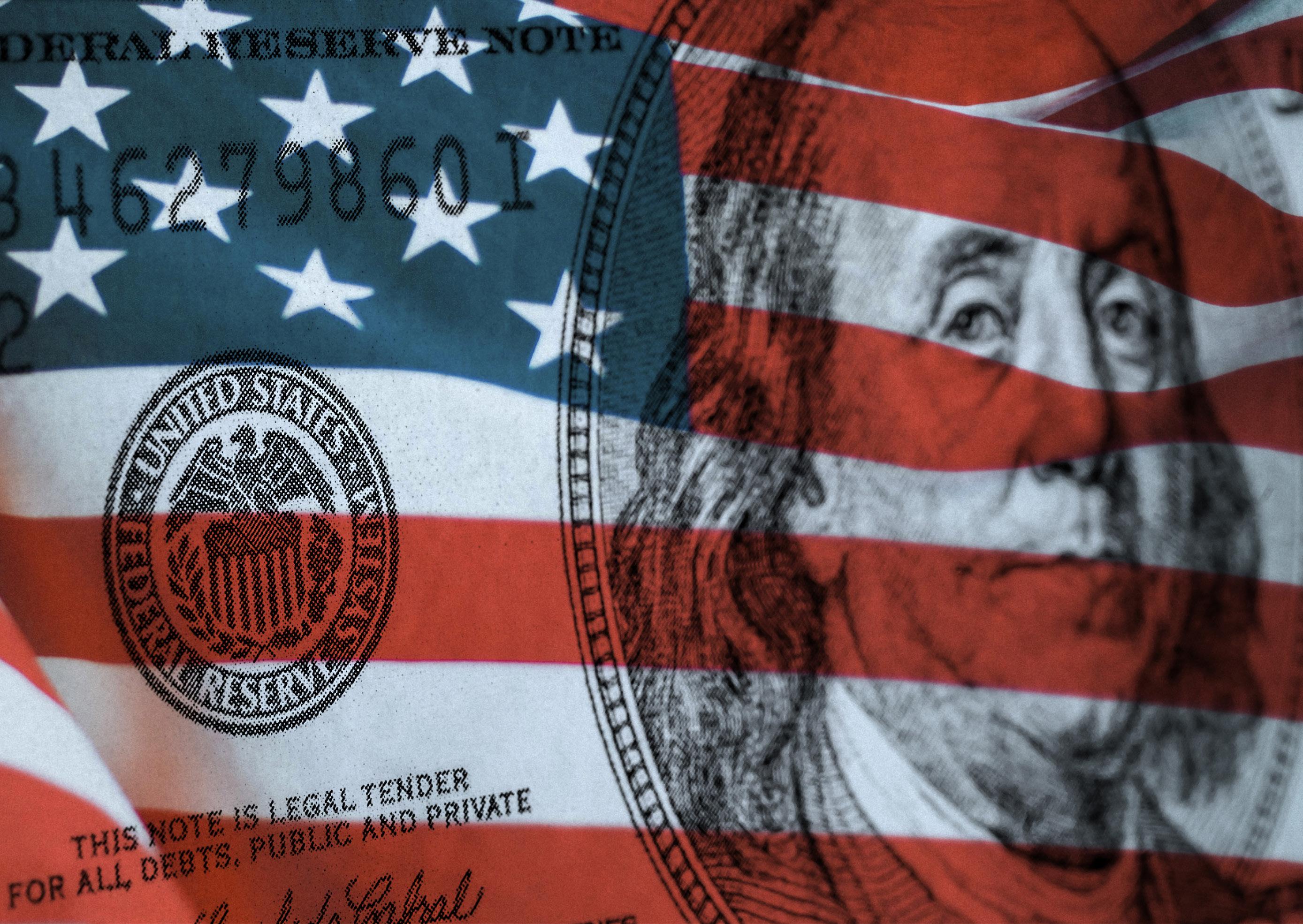
expectations are, the more freedom central banks have.
Anchors in emerging markets have been put under a lot of stress during the past year. As the Fed struggles to pass its own credibility test, interest rates throughout the world have increased in anticipation of a stronger pace of tightening in the United States. In addition, food and fuel prices in emerging countries have increased rampantly, accounting for a larger portion of consumer spending there than in the developed world. Food and energy make up more than 60% of South Asia's consumer price index, according to the World Bank.
The rise in the cost of food and fuel has been seen through certain central banks. As an example, consider the central bank of Thailand, which has done nothing as inflation has skyrocketed. It aims to ensure that the economic recovery picks up steam and maintains anchored medium-term inflation expectations. However, before their economies completely recovered, other emerging markets, such as Mexico and Brazil, felt driven to increase interest rates forcefully.
According to Lucila Bonilla and Gabriel Sterne of Oxford Economics, they responded more quickly than their counterparts in mature economies.
However, that’s partly because they had to be. They had to tighten to keep up with the unsettling increase in inflation expectations. They have remained ahead of the curve. But the curve has been incredibly steep.
Andrew Tilton and his Goldman Sachs colleagues noted that the Fed has been a “somewhat less
dominant” force in this emerging-market tightening cycle than in the past. There has not been a second taper tantrum as expected.
Ms. Bonilla and Mr. Sterne point out that several countries that might normally be vulnerable to Fed tightening, like those in Latin America, are also significant commodity exporters who have benefited from increasing prices for their goods.
However, the Fed is far from done. Also, as inflation in emerging countries continues to rise, it could become more susceptible to any declines in local currencies.
According to banker David Lubin of Citigroup, "it's like adding fuel to a fire."
It might need more than just a depreciation to start inflation. A weaker exchange rate, however, might increase the heat once it has already started to burn. A Malaysian café that has already changed its rates to keep up with more expensive commodities may be more likely to do so.
Therefore, a lot relies on how far the Fed needs to go in order to restore its reputation as an anti-inflation credential and control pricing pressures in America. The more difficult it is for the Fed to uphold its own credibility, the more difficulties developing markets will face.
Compared to America, they started their hawkish pivot considerably earlier, but it is unlikely to end much sooner. The emerging markets have been reminded this year that despite their gains, they still lack fully credible central banks. America has learned the same lesson from it.

The United States previously experienced extreme inflation in the 1980s, when the situation was deemed to be so serious that the Federal Reserve, which was headed by Paul Volcker, raised interest rates by as much as 3 percentage points.
That pace is roughly six times that of a rate-hiking cycle where the Fed increases
rates in steps of 0.25 percentage points.
Former Federal Reserve Board senior official Donald Winn told Paul Volcker at the Fed meeting in March 1980 that "unless we respond to the increase, which could be quite large in this period, we're going to have a real credibility problem."
Ultimately, the main interest rate set by the US Central Bank was about five percentage points higher than the inflation rate. The rise caused a severe recession, but eventually, the goal was achieved because inflation shortly started to decline.
The gap between inflation and the federal funds rate today is similar, but the relationship is reversed.
Although several governors of the US Central Bank have talked down the chance of a 1 percentage point rate hike, indicating their preference for a 0.75 percentage point hike, Fed officials are concerned as inflation surged to a fresh four-decade high of 9.1 percent last month.
The federal funds rate would increase in response to such a move to a range of 2.25% to 2.5%, which would be at least 6 percentage points lower than the headline inflation rate at the time.
Fed officials issued their fresh quarterly economic forecasts last month and the members of the Federal Open Market Committee (FOMC) desire the federal funds rate to be at 3.4%. And by year-end, inflation is predicted to be at 5.2%.
The key point is that Fed officials aren't responding with quite the same urgency as they did during the Volcker era. Eminent economists say that's a risk.
During an interaction with CoinDesk, Michael Feroli, chief U.S. economist at JPMorgan, said, "We're as close to an inflation emergency as we've been anytime in the past 40 years. The only thing that's keeping it from being a full-blown, noholds-barred emergency is that longer-term inflation expectations still seem reasonably
well anchored.”
The dynamic is being keenly observed in the bitcoin (BTC) market, in part due to the recent correlation between US stocks and the price performance of the largest cryptocurrency by market size. Investors will find bonds more appealing if interest rates rise faster. Higher borrowing costs will reduce business profits and sluggish investment will have an impact on stock prices.
Pantera Capital CEO Dan Morehead recently argued that the gap between inflation and the federal funds rate is the biggest it has ever been. Prior to the COVID pandemic, when inflation was at 2.3%, the rate was where it is today.
The concern of losing credibility could be another danger of the Fed's soft approach.
The Fed's recent innovation of using forward guidance to prepare and manage markets for impending rate hikes only functions as long as investors have faith that officials will follow through.
Former Fed official Vincent Reinhart, who's now chief economist and macro strategist at Dreyfus and Mellon, said, "Powell really, really hates surprising markets. He wants to control the narrative, and he wants to make sure there’s no surprise."
Recently, a higher-than-expected inflation report caused Fed members to abruptly change their minds about the level of increase in the rate at the last minute.
Speaking about the Fed, JPMorgan’s Feroli said, "I think they probably got some blowback from what appeared to be a bit of choppiness in the last meeting. It didn't appear that there was a steady advance, and I think to go from 75 to 100 basis points may appear choppier. More unstable, perhaps.”
"We're as close to an inflation emergency as we've been anytime in the past 40 years. The only thing that's keeping it from being a fullblown, no-holdsbarred emergency is that longerterm inflation expectations still seem reasonably well anchored.”
Michael Feroli, chief US economist at JPMorgan

Global Business Outlook caught up with young entrepreneur
Talal Al Ajmi, who shared his insights about online trading, financial markets, entrepreneurship, VI Markets and much more
Talal Al Ajmi, who carved a niche for himself, has gone on to win multiple global awards over the years. He also made it to the Forbes list of top 100 CEOs in the Middle East.
Young Kuwaiti businessman Talal Al Ajmi has become one of the region's most well-known names in the financial markets and trade due to his passion and hardwork. Having completed his Bachelor’s Degree in Information Technology from the prestigious University of Philadelphia, Talal Al Ajmi always saw himself as an entrepreneur.

When he returned to Kuwait, he wanted to pursue his ambition and work at an investing company to obtain more expertise. He began his journey to success at an early stage during his academic years in university, where he managed couple of small family businesses with his siblings. After he had worked in this industry for a few years, he was motivated to move forward and build his own empire.
He founded Version International Markets in Kuwait in 2010 and is currently the CEO and a board member of One Financial Markets (the main partner). In collaboration with One Financial Markets, a company founded in London in 2007, VI Markets offers investors in Kuwait a customised online trading service.
Talal Al Ajmi, who carved a niche for himself, has gone on to win multiple global awards over the years. He also made it to the Forbes list of top 100 CEOs in the Middle East.
GBO: Take us through your journey to becoming a successful entrepreneur?
Talal Al Ajmi: In 2010, a market gap led to the creation of VI Markets. When I first began VI Markets, my major goal was to dispel misconceptions regarding online trading and brokerage firms among those who were interested in learning more. The essential component the market desired and required was education and awareness-raising among our current and potential clients through workshops and seminars. VI Markets eventually filled this gap.

How did you lead your company to the pinnacle of success and how has your role evolved since you began?
It is a huge responsibility to steer a firm through its ups and downs, and many things tag along with that obligation.
Thinking outside the box, being open to new difficulties, and responding to problems effectively and efficiently are key characteristics of a leader. By paying attention to what people want and need, that can be accomplished. I learned from my research that the majority of clients required and desired the technology behind copy trading. Due to this, we
made the necessary investments in technology to make it available to them at all costs.
The capital for this business was the very first problem we faced. Because this industry was perceived as high-risk, investors were afraid to invest. This resulted from a lack of market awareness.

The COVID-19 pandemic that swept the globe was the second biggest difficulty we encountered, but we overcame it and were successful. We made technological investments at a time when many businesses were closing or cutting costs. And to be really honest, this was one of the company's peak years.
What are the core values, vision and philosophy you and your company focus on?
The goal of VI Market is to innovate in the field of trading. By educating the public and offering the newest technology to the online trading industry, we hope to establish ourselves as one of the leading names on the globe. We all endeavour to operate at Vi Markets according to these core principles, which include accountability, integrity, honesty, and respect. These values also go hand in hand with our vision and mission.
5. Can you share insights into VI Market’s performance and growth over the last few years?
We made significant technology investments over the past few years to reach out to all of our clients at home and offer them the same service. We actually took advantage of this occasion to the maximum. Particularly in the Gulf regions, people had the leisure and money to invest at home. Based on our analysis of market behaviour, we actively invested in technology and continued to provide our services online. Working remotely and online allowed us to see a sharp increase in income and growth rates even though many countries were experiencing a shutdown.
VI Markets is a trading platform specializing in global brokering. Can you provide us with an overview of your offering?
VI Markets provides a wide range of instruments on
both Forex and CFD. In terms of Forex, we provide all the majors in addition to a wide range of exotic currency pairs including USD/SGD and USD/ZAR. We also provide future CFDs for commodities, indices, energy, and gold and silver. VI Markets also provides Crypto Assets.
What are some of the expansion plans you have in your pipeline?
Our intention has always been to go big and international, thus
we have planned to target the MENA region and geographically specialise to serve them. Since we make significant investments to meet the demands and needs of our clients, VI Markets frequently stays one step ahead of the competition. We have expanded our product line and now offer "Crypto Assets." Only very few businesses in the area do this.
Since we are already governed by the FCA in London, we also work to achieve more reliable regulations in the future.
What is your outlook on the trends and market size of Kuwait and the region’s trading and financial industry?
The Gulf region and Kuwait in specific have been eager to invest in the financial sector since – Souq Al Manakah. One of the first nations to investigate cryptocurrencies, forex, and stocks was Kuwait. I think there is a lot of demand in these markets. Due to the considerable liquidity and disposable income in the Middle East and the Gulf, internet brokerage and trading are frequently in high demand there.
Despite the slowdown prevailing in the stock market, what has been your approach to scaling your business and what advice would
you give to entrepreneurs in the current market?
We may always find opportunities in difficult circumstances. For example, if we look back to 2008, many people were able to profit from the severe market decline that year.
Having said that, numerous governments across the world invested a lot of money during the COVID-19 pandemic, creating a lot of liquidity in the market. Additionally, the Fed Banks eased rules governing interest rates and other issues. People have a fantastic opportunity to invest in booming sectors like the ICT sector because of this. Therefore, I think there are opportunities, even in difficult circumstances.
What will be the new parameters on the basis of which business success and efficiency will be governed?
Success can be attained by diligence, commitment, and adaptability. As mentioned earlier, we learned a very valuable lesson from the COVID-19 pandemic. You need to be ready for changes that could last for years, and you need to react swiftly. Having said that, I think that key to efficiency is investing in both people and technology.
What are your predictions for Kuwait and the region's entire investment ecosystem? How will it evolve going forward?
By creating more job possibilities and removing barriers to young people engaging in initiatives, the Gulf region, including Kuwait, is moving toward making significant investments in the private sector. It is a tremendous step for the development of the economy and industry to go in the direction of boosting the private sector.
What do you think is the biggest game changer when it comes to an enhanced trading experience? Where do you see the opportunities and challenges in the financial ecosystem in the region?
The first item on the list will undoubtedly be creating a powerful Supervisory Regulatory Authority to collaborate with and oversee the corporations. A crucial component of improving the trading experience is investing in artificial intelligence. I see a lot of chances, but the most crucial one is educating the public and empowering them to make their own judgments rather than having a negative view about trading.
Tell us more about your early life – family background, education, and career before VI markets?
I was quite interested in learning about the world of stocks during my college days, and I did that as a hobby after class.
"I see a lot of chances, but the most crucial one is educating the public and empowering them to make their own judgments rather than having a negative view about trading"
Most of my family and friends had always expected that I would become an entrepreneur when I was studying IT, and now after all these years, here I am. This is due to the fact that I used to barter little items with my cousins and neighbours.
VI markets were one of the first Kuwaiti companies to get a license from the Financial Conduct Authority (FCA)? Elaborate.
Not one of the first, but very few businesses in the area are subject to FCA regulation. This is so because, at VI Markets, we value and uphold the standards that the FCA upholds.
If you could also share a few other milestones of the company since it started?

In addition to enabling trading with crypto assets, VI Markets is one of the few companies in the Middle East and the Gulf to offer "Copy Trading Technology," which incorporates artificial intelligence into trading.
You have a strong social media presence with almost 92k followers on Instagram where you share information on daily trades. Could you tell us more about it?
Social media outlets are more engaging and powerful than I ever imagined, as you can see with trading. By sharing my trades with everyone, I hoped to raise trading awareness and educate anyone who was interested in learning how to read the markets. Additionally, to alter their view of the markets, which I believe I have done. Considering that I was surprised by the level of interest and the fact that social media is a powerful tool for communication in both my sector and many others.
You have started other initiatives like Yasmeen - a forum exclusively for women and also some humanitarian work in the field of education. Could you shed some light on it?
Formed by VI Markets (representative of the MiddleEast-based One Financial Markets) in 2016, Yasmeen has emerged as a forum exclusively for women, working towards supporting the concept of female empowerment in domains such as business and financial investments.
The initiative, which uses structured training and education on global financial matters to train the upcoming women professionals from the Arab region, was started by Mr. Talal Ajmi. He came up with the idea after noticing a growing interest in global trading patterns from the womenfolk of this region. Mr. Talal then came up with Yasmeen to encourage these women to get trained and participate in commercial activities.

portal can guide them toward the path of becoming business leaders with guidance, and mentorship, along with imparting investment ideas for their own commercial ventures. Also, the number of women new to the finance area and aiming to learn and sharpen their understanding of this field is also growing. Then there are business professionals looking for new options to diversify their finance-related portfolios. Yasmeen can help all these people by providing bespoke educational services and quality personal support.
Consistent with Mr. Talal’s vision of education being the main source of motivation to keep on going, and a good amount of the knowledge to be made up with personal experience sharing, Yasmeen has emerged as a learning forum where knowledge, advice, mentoring and support can be exchanged in formal environments such as 100-delegate seminars on the informality of social media. Yasmeen has also dedicated itself to developing a tailored training and trading solution supporting investment knowledge growth among the womenfolk in the Middle East. It holds weekly seminars and training, either onpremises or online. Their training programmes went on during the COVID-19 pandemic as well.
Due to Yasmeen, the middle-eastern society saw increased financial growth, as over 15,000 women traders now constitute more than 30 % of the total number of active participants registered with VI Markets. Currently, some 30,000 women traders use the company’s platforms and the rate is steadily rising since 2016. Yasmeen did many regional seminars and trading workshops with the help of eminent coaches and entrepreneurs from the Middle East. The main focus of all these sessions was to spread awareness and support upcoming women business leaders.
Yasmeen not only offers education and trading services for Arabian women, but also provides them with structured training and education on global financial markets. It is also providing these upcoming professionals services suited specifically to their individual needs.
Yasmeen is created for women, by women, with a focus on satisfying the financial requirements of the growing community of business heads in the Middle East who run their own operations or manage their own investments. The portal has an array of social networks as well, allowing these women to share their business experiences and empower other females to pursue their career ambitions, with training from those who faced similar huddles before and overcame them with Yasmeen’s guidance.
Yasmeen’s emergence comes at a time when Arabian women are becoming increasingly entrepreneurial. The
Technology is crucial in changing online trading, especially AI. At VI Markets, we make significant investments in technology and provide "Copy Trading" to our clients.
Success is a huge word and comes with a lot of responsibility, but if you enjoy what you do, you will succeed without a doubt. That motto also tends to guide my hiring decisions. Cohesion is essential! If they love their job, they will excel!
procedures to settle these matters. Finance, ultimately, depends on trust, SEC Chair Gary Gensler said in a statement.
The US Securities and Exchange Commission (SEC) fined 16 financial institutions, including Barclays, Bank of America, Citigroup, Credit Suisse, Goldman Sachs, Morgan Stanley, and UBS for failing to retain and preserve electronic communications. They were fined a total of $1.1 billion. According to regulatory experts, the extensive industry investigation, which

was initially reported by Reuters last year and has subsequently been acknowledged by other lenders, is a watershed case for the agency.
“The firms admitted the facts... acknowledged that their conduct violated recordkeeping provisions of the federal securities laws... and have begun implementing improvements to their compliance policies and
The SEC discovered that the banks' employees habitually used personal devices to talk about work-related concerns from January 2018 to September 2021, while the institutions failed to keep the majority of these conversations in accordance with the regulations.
That probably made it more difficult for the SEC to acquire information for unrelated investigations, the agency said. According to the SEC, the failings affected all 16 organizations and implicated individuals at all levels of power, including senior executives and supervisors.
In order to support China's faltering real estate market, China Construction Bank (CCB) is planning to set up a 30-billion-yuan ($4-billion) for rental homes. The government-owned lender, which will fund the fund, intends to engage in real estate projects and convert them into reasonably priced rental homes, according to a statement released by CCB.

Beijing has increased measures to support a real estate sector that has been negatively impacted by debt accumulation, mortgage boycotts, and
slow sales. More than a quarter of China's economy is made up of the real estate industry and related industries like construction. The government has opened up a new source of funding for the industry by allowing low-cost rental homes to be listed as real estate investment trusts.
According to a July report from Reuters, China intended to establish a real estate fund to assist property developers in overcoming a dire
debt situation. According to a source, the fund's initial size would be 80 billion yuan with help from China's central bank, which would contribute 50 billion yuan. As home buyer complaints grow, China's policy banks and local governments have also been setting up funds to assist cashstrapped developers.
The National Bank of Kuwait (NBK) is moving more quickly along its digital path and progressing as seen by the day-to-day release of novel services, goods, and cutting-edge payment solutions that are highly regarded by the most esteemed national and international institutions. In light of this, NBK was recently honored with 13 awards at the Kuwaiti and Middle Eastern levels as part of Global Finance's World's Best Consumer Digital Banks Awards for 2022. This was done in recognition of NBK's efforts in this area as well as the exceptional digital banking products and services provided all year long.
The awards were received on behalf of the bank by Mr. Mohammed Al-Kharafi, GM – Head of Group Operations and Mr. Hisham Al-Nusif, Deputy GM of Consumer Banking Group at National Bank of Kuwait during the annual ceremony held by the magazine in Dubai.
In this regard, Mr. Mohammed AlKharafi, GM – Head of Group Operations at National Bank of Kuwait commented on winning this distinguished set of awards saying: “NBK gives top priority to developing its digital capabilities. NBK injects more investments and attracts high-grade talent to end this practice.
An emergency effort has been launched by the Bank of England (BoE) to save the UK bond market from collapsing. This posed a threat to bankrupt pension funds and to cause a financial system collapse analogous to the "Lehman moment" that sparked the 2008 global financial crisis. The BoE intervened when its Monetary Policy Committee (MPC) declared it would resume purchases of longterm bonds, or gilts, in place of its previously announced policy of selling them starting next month.
The bond market started declining following the Tory government's smash and grab mini-budget, which gave tax breaks worth £45
billion to corporations and the super-rich to be paid for by an increase of £72 billion in public debt.
It stated that in order to ‘establish orderly market conditions,’ the central bank would make ‘temporary purchases’ of long-dated government bonds on ‘whatever size is necessary,’ and the Treasury would be ‘completely compensated’ for the action. Later, the BoE acknowledged that it had anticipated that the bond-buying programme would total £65 billion over the course of the following 13 days, or £5 billion per day. The action was taken after it became apparent that pension funds were in danger of going bankrupt.

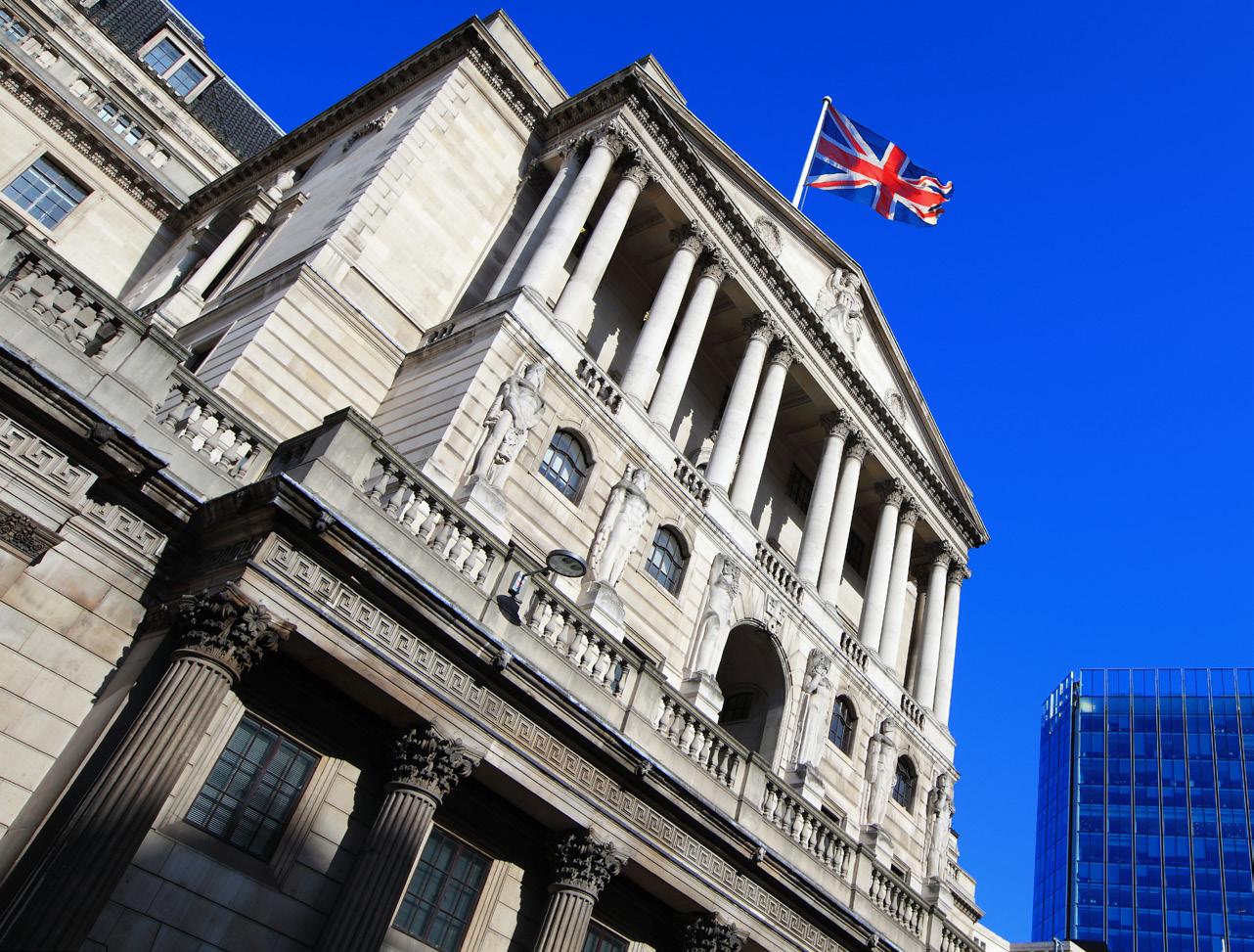
Several countries might share the same fate as Lanka as they are on the verge of economic and political chaos
Sri Lanka is in the grip of a profound and historic economic depression, which has caused massive protests and forced its president to resign after absconding - but other nations may face similar difficulties, according to the chief of the International Monetary Fund (IMF).
"Countries with high levels of debt and limited policy options will confront significant challenges. As a warning sign, look no farther than Sri Lanka "Kristalina Georgieva, Managing Director of the IMF, said.
She also stated that developing countries have been facing significant capital outflows for four months in a row, putting their hopes of catching up with industrialized economies in jeopardy.
Due to a currency crisis, Sri Lanka is struggling to afford critical imports such as food, petrol, and medication for its 22 million people. Inflation has risen by almost 50%, with food costs increasing by 80% over the previous year. This year, the Sri Lankan rupee has lost value against the USD and other world's leading currencies.
Many people accuse ex-President Gotabaya Rajapaksa of mismanaging the economy with terrible policies that were compounded by the pandemic.
Sri Lanka had amassed massive debt over the years, and this month it became the first nation in the Asia Pacific to default on foreign debt in 20 years.
Officials had been seeking a $3 billion (£2.5 billion) rescue with the IMF. However, those conversations are currently halted due to political turmoil.
Yet, the same global challenges are affecting other countries in the region - rising inflation and interest rate hikes, declining currencies, high levels of debt, and shrinking foreign currency reserves - afflict other economies in the region.
China has been a prominent creditor to many of these emerging countries and hence has significant influence over their fates. However, it is unknown what Beijing's guidelines regarding lending have been or how the debt may be restructured.
According to Alan Keenan of the International Crisis Group, China's responsibility is in sponsoring and financing costly infrastructure projects that have not yielded significant economic gains.
"Their aggressive political backing for the ruling Rajapaksa family and its policies has been equally significant... These political failings are at the heart of Sri Lanka's economic collapse, and until they are addressed through constitutional reform and a pro-democratic political culture, the country will remain in a state of

limbo."Distressingly, other nations seem to be following suit.
For some months, the portless East Asian republic of over 7.5 million people has risked defaulting on its foreign debt. Now, rising oil costs as a result of Russia's invasion of Ukraine have put additional strain on fuel supplies, driving up food costs in a region where an estimated one-third of the population lives in poverty.
Local news sites reported huge lineups for gasoline and that some homes are not able to pay their bills. The kip, Laos' currency, has fallen by over a third against the USD in 2022.
Higher interest rates in the United States have strengthened the dollar while weakening domestic currencies, increasing debt burdens, and making imports more expensive.
Laos, which is already significantly in debt, is finding it difficult to repay those debts or pay for imports such as fuel. According to the World Bank, the country has $1.3 billion in reserves as of December of last year.
However, its overall yearly external debt
remain around the same
2025, comparable to roughly half of the country's entire domestic revenue.
As a consequence, Moody's Investor Services downgraded the communist-ruled country to "junk" status last month, a level at which debt is considered high risk.
In recent years, China has made large
to Laos to construct large projects
as a hydroelectric plant and a railway. According to Laotian authorities speaking to the Chinese state news agency Xinhua, Beijing completed 813 projects worth more than $16 billion in just one year.
According to the World Bank, Laos' public debt will amount to 88 percent of its GDP in 2021, with over half of that amount due to China.
Experts refer to years of corruption in the country, where a single party, the Lao People's Revolutionary Party, has ruled since 1975.
However, Moody's Analytics has identified rising trade with China and hydroelectricity exports as encouraging factors. In a recent analysis, economist Heron Lim stated, "Laos has a fighting chance of escaping the danger zone and the need for a bailout."
costs in Pakistan have risen by about 90% since the end of May when the government discontinued fuel subsidies. It is attempting to cut spending while negotiating with the IMF to continue a rescue program.
The economy is tanking as the cost of commodities rises. The annual inflation rate reached 21.3 percent in June, the highest level in 13 years.
Pakistan, like Sri Lanka and Laos, has poor forex reserves, which have nearly halved since August last year.
It has placed a 10% tax on large-scale
businesses for one year to earn $1.93 billion to close the gap between government revenue and expenditure, which is one of the IMF's primary requests.
"If they can access these resources, other global lenders like Saudi Arabia and the UAE [United Arab Emirates] may be keen to lend loans," S&P Global Ratings sovereign analyst Andrew Wood told the BBC.
Former Prime Minister Imran Khan, who promised to address some of these issues, was deposed, albeit the economy was not the sole cause.
In June, a senior minister in Pakistan's government advised citizens to consume less tea to minimize the country's import bills.
Again, China plays its part, with Pakistan owing Beijing more than a fifth of its debt.
"Pakistan seems to have renewed a commercial loan arrangement with China, increasing its foreign exchange reserves, and there are indications that they will reach out to China in the second part of this year," Wood continued.
In recent years, the Maldives' national debt has risen to well above 100 percent of its GDP. The pandemic devastated an economy that was strongly reliant on tourism, as it did in Sri Lanka. Countries that rely heavily on tourism generally have higher public debt ratios, but the World Bank says the island country is especially vulnerable to increasing fuel costs due to its undiversified economy. According to JPMorgan, the holiday resort is at risk of failing to repay loans by the end of 2023.
In Bangladesh, inflation reached an 8-year high of 7.42 percent in May. With reserves running low, the government has moved quickly to limit non-essential imports, lowering laws to draw remittances from
millions of migrants living abroad, and restricting foreign trips for officials.
"Governments in current-account deficit economies, such as Bangladesh, Pakistan, and Sri Lanka, confront significant challenges in raising subsidies. Pakistan and Sri Lanka have sought financial aid from the IMF and other nations "S&P Global Ratings sovereign analyst Kim Eng Tan told the BBC.
"Bangladesh has been forced to reprioritize government spending and set limitations on consumer activity," he said.
Soaring energy and food prices are endangering the world economy, which has been devastated by the pandemic. Now, emerging countries that have borrowed excessively for years are discovering that their shaky foundations render them highly susceptible to global shockwaves.
The sovereign default world record holder appears certain to increase its tally. The peso is currently trading at about a 50% discount in the illicit market, reserves are dangerously low, and bonds are trading at only 20 cents on the dollar - below half of how they were after the country's 2020 debt restructuring.
The government does not have any significant debt to service until 2024, but it increases after that, raising concerns that strong Vice President Cristina Fernandez de Kirchner may attempt to renege on the IMF.
According to Morgan Stanley and Amundi, Russia's incursion implies Ukraine will almost probably have to restructure its $20 billion in debt.
The deadline for bond payments of $1.2 billion is in September. Kyiv may be able to pay thanks to aiding funds and reserves. However, with state-run Naftogaz requesting a two-year debt freeze this
week, investors believe the government will soon follow.
Africa has a slew of IMF applicants, but Tunisia appears to be the most vulnerable. A close 10% budget deficit, one of the world's highest public sector salary bills, and concerns that getting, or at least adhering to, an IMF program will be difficult due to President Kais Saied's effort to extend his hold on power and the country's powerful, obstinate labour union.
Tunisian bond spreads - the premium investors demand to acquire debt rather than US bonds - have climbed to almost 2,800 basis points, and it is one of Morgan Stanley's top three likely defaulters, along with Ukraine and El Salvador. "An agreement with the IMF becomes vital," Tunisia's central bank chief, Marouan Abbasi, said.
Egypt has a debt-to-GDP ratio of about 95% and has had one of the largest outflows of international currency this year, totaling $11 billion, according to JPMorgan. FIM Partners forecasts that Egypt will have to pay $100 billion in hard currency debt over the next five years, including a $3.3 billion bond in 2024.
Cairo devalued the pound by 15% in March and requested the IMF for assistance, but bond spreads are now above 1,200 basis points, and credit default swaps (CDS), an investor tool for risk management, pricing in a 55% likelihood of payment failure.
Sri
Soaring energy and food prices are endangering the world economy, which has been devastated by the pandemic. Now, emerging countries that have borrowed excessively for years are discovering that their shaky foundations render them highly susceptible to global shockwavesAnalysis

Hunt prepared for retirement as her 66th birthday approached. She wanted to find a course to take to learn something new because she didn't have time to do it when she was working and volunteering at her neighbourhood Citizens Advice office. She never expected a crisis brought on by rising living expenses to ruin her plans.
Her husband's weekly grocery bill and gas expenses for work commute rose dramatically. They had to pay mortgage bills as well. All of this happened under the shadow of rising interest rates and inflation.

Hunt's calculations revealed that her little private pension and state pension would not be sufficient to support her expenses. So, she decided to postpone her retirement plans indefinitely.
Hunt, a housing consultant for a legal charity living in Biggin Hill in greater London, adds, "I qualify for a full state pension, but I know I would be fighting to meet my expenses as I am struggling now while still working." Going to the grocery store and observing price increases of 50 or 75 cents every week or every two weeks focuses the mind on money.
Hunt is not the only one who has postponed her decisions. One of the largest pension providers in the UK, Legal & General, conducted research that revealed that 38% of people in their late 50s and early 60s plan to put off retirement for up to a year due to the issue.
Correspondent
The cost-of-living crisis is postponing retirement plans of those over 60
Feature
Many people have already reconsidered their anticipated retirement date due to the outbreak. Emma Byron, managing director of Legal & General's retirement solutions division, said that living costs now impact retirement plans. One in 10 people, according to their study, think they won't ever retire.
According to Hunt, she was scheduled to get £1,200 per month from her state and private pensions, but this wouldn't be enough to pay for her increasing expenses.
She and her husband do not lead a lavish lifestyle and are working hard to pay off their mortgage as soon as possible.
"We haven't had a vacation overseas in a very long time," she claims. She added that her family does not indulge in such luxuries.
She said that if inflation decreases once again, she will most definitely consider retiring, but the estimate is for 11%, and interest rates may increase, so she can't set a certain date for it.
Diana Ridge, a market researcher, claims that the state pension she receives is insufficient to cover her rising living expenses. She does not have a private pension.
Ridge, who is 66 years old, recently started working again after recuperating from brain surgery.
Her monthly expenses for essentials including gas, electricity, phone, broadband, car payments, gasoline, and homeowner's insurance total £850, or £10,200 annually. She would be qualified for a full state pension of slightly over £9,620 annually.
Ridge, a divorcee, claims that because she had previously struggled to make ends meet, she could not invest in a private pension.
"You will get the house, you don't need a pension, and you will have a husband," my father used to tell me. She claims she was programmed to have a family, not a career.
Her monthly income from universal credit fell to £340 while admitted to the hospital. "I haven't bought much food since I have so little money coming in," Diana said.
Former pensions minister Steve Webb,
who now works for pensions consultants LCP, asserts that many people will find it extremely challenging to deal with how quickly the cost of living is rising, causing retirement plans to fall apart as the value of many private pensions decreases.
"Working above state pension age may be the only alternative for individuals who are physically able to go on working and have employers keen to keep them on if they do not believe they could make ends meet based only on their state pension," he says.
However, this does imply that people incapable of working or who have already had to cease working before retirement age would feel the pinch even more. At least, pension credit is provided at a significantly higher level than universal credit and is available to single people over the state pension age. However, no one would claim that is sufficient to cover a pleasant retirement.
Ros Altmann, a crusader for pensions, claims that if a person is in good health, working longer might generate more income for a private pension. She added that the issue is with those who are too unwell to work, whose state pension age has continued to rise, and who have neither a private pension nor savings. They are severely underprivileged and unable to improve their situation or increase their purchasing power by working more hours.
Because of the rising cost of living, some customers have started to reduce their private pension contributions, which is cause for concern.
Experts anticipate state pension to increase by 10% in 2019. In May, Chancellor Rishi Sunak said that the triple lock would resume starting in the spring of 2023. The scheme benefits would also increase in line with the inflation rate.
Under the triple lock, the government will increase the value of state pensions each year.
Analysts expect pensions to increase proportionally to the rate of wage growth
for the preceding July or the inflation rate for the previous September, or 2.5 percent (whichever is higher).
The UK government is fighting tooth and nail to hang onto its most seasoned medical professionals. NHS England has more than 21,000 new open positions than a year ago, surpassing 110,000 for the first time. However, since 2008, the number of doctors choosing an early retirement has tripled. There are currently 1,343 fewer family doctors to handle the 3 million more patients who have been registered since June 2017.
Anyone who has lately attempted to schedule a doctor's visit will not be surprised by those figures. However, the staffing situation won't improve unless the government updates its pension law.
Staff are leaving in large numbers for a variety of personal and professional reasons, but money is a significant one.
A pension is essentially a fund that many individuals must manage to prevent from exhausting before they do. These people postpone their retirement plans due to economic factors like declining markets and rising inflation.
However, many in the public sector and a fortunate few in private enjoy "final salary pensions," which offer a lifetime income indexed to inflation. The problem is that while they are employed, their pension benefits increase slowly, if at all, at pace with their incomes.
Their incomes are also stagnant in the public sector. However, after retirement, their pensions increase in pace with inflation. Many people approaching retirement could be better off quitting now than continuing to work with the CPI at 9%.
An older doctor could be better off retiring now for many reasons, not the least of which is that inflation (and, consequently, their pension) is rising so much more quickly than their salary.
Because the government provides tax assistance to encourage workers to make arrangements for their retirement, pensions are also tax-efficient. A basic-rate taxpayer receives 20 pounds of relief for every 100 pounds ($125) contributed. Therefore, adding 100 pounds to your pension would only cost you an additional 80 pounds. The relief is more significant for higher and additional rate taxpayers, coming in at 40 and 45 pounds, respectively.
The cost of this tax relief is estimated by the government to be more than 41 billion pounds a year. It has required several steps over the years to cap the amount of relief people can claim because the majority of this benefits higher earners.
But even many experts cannot comprehend how these caps work since it is so complicated. When they struggle with math, they frequently discover that their retirement benefits accumulate far more slowly. It makes it much less appealing for those getting close to retirement to work.
The cure is straightforward in the eyes of the government. They must raise the financial incentives and simplify the process for everyone to comprehend if they want more seasoned doctors to remain.
Two things to be remembered: Confusion and dissatisfaction stem from the existence of yearly and lifetime pension contribution allowances. Try one, but not both. Due to the complex tax code, many spend more time planning how to legally avoid paying taxes than they do working to generate money. Senior doctors and government employees can vouch for this, so it is no longer just another neo-liberal justification for tax cuts for the wealthy.
It doesn't take a brain surgeon to figure out how that one will end if you let NHS workers bear the full burden of the cost-ofliving issue when they have an inflationprotected pension as an alternative.
Women’s annual pension incomes £7,000 lower than men’s
Personal pension contributions grew £7.3 billion in a decade
Individual's average contribution to a personal pension £2,700/year
Occupational pension scheme members in UK 45.6 million
The most spokenabout initiative of Shinzo Abe was 'Abenomics', the programme that bears his name
Former Japan Prime Minister Shinzo Abe, who was assassinated recently, wanted to transform the country's economy. Shinzo Abe was Japan's longest-serving Prime Minister before he decided to step down in 2020. The most spoken-about initiative of Abe was "Abenomics", the programme that bears his name.
Major reforms and stimulus measures taken through his policy did revive the third largest economy in the world, but it still fell short of the result it was expected to achieve. Abe took charge as the Japanese PM during a time when the country was facing a recession. Thanks to his 'Abenomics' policy the Asian powerhouse witnessed growth during his first term. But in 2020, the late leader's measures to revive Japan's economy faced an uphill challenge. In addition, other factors also raised questions about the efficacy of the policy.
The policies that Abe started implementing in 2012 were his most well-known economic initiative, which was branded "Abenomics". His goal was to use the so-called three "arrows" of Abenomics to revive Japan's economy after two decades of stagnation.
Monetary Policy: Negative short-term interest rates are part of Japan's hyper-accommodative monetary policy, which was implemented to lower the cost of borrowing and spending for individuals and businesses.
Fiscal Stimulus: Pumping money into the economy entails increasing government spending on infrastructure or providing
companies with financial incentives like tax reductions.
Structural Reforms: To reduce labour pressures and boost economic growth, firms should reform their business practices, increase the number of women in the workforce, liberalise the labour market, and give more job opportunities to migrants.
Abenomics: What worked & what didn't

During an interaction with TIME, Koichi Hamada, one of Abe’s former economic advisers said, "Abe injected hope into the Japanese economy. Poor villages disappeared, university teachers were not worried about the employment opportunities of their students, and so forth, because of Abenomics."
Mireya Solis, director of the Center for East Asia Policy Studies at the Brookings Institution, said, "The program
represented a major new attempt for Japan. He tried to revive the Japanese economy, and there were some successes there."
Hamada stated that Abenomics was very successful in creating jobs and promoting equality between temporary workers and regular workers.
"There was a strong distinction between the two. Since only regular employees could get stable employment with higher wages," Hamada said.
But he also pointed out that Abenomics gave opportunities for temporary workers to get employment, and as a result of which many firms began to hire non-regular and temporary workers.
Hamada stated that the policy's effect is felt even today in the country -- 47 percent of foreign employees in fulltime roles were categorized as "non-regular staff" in a
2021 government study of the pay structure in Japan, such as contract or temporary workers.
“It put many more people to work and because of the shortage of human resources, firms started to invest domestically instead of abroad," Hamada added.
But, Solis, who differed from Hamada's views said, "The idea was to have this principle of equal pay for equal work, regardless of whether you were a regular or non-regular worker, and to increase wages. But wages are still stagnant for nonregular workers, and people are feeling the effects in their wallets."
Although not at the same rate as Japan had experienced during its post-war boom, Abenomics did contribute to growth. The economy is still far lower than the 2020 objective of 600 trillion yen established by Abe's administration.
But many analysts gave Abe credit for making the country more resilient to economic shocks like the pandemic than when he took office nearly eight years earlier as he was leaving office.
Japan PM Fumio Kishida questions Shinzo Abe's economic policies
Japanese PM Fumio Kishida questioned Abe's economic policies in January of last year. Speaking at the virtual Davos Agenda conference of the World Economic Forum, Kishida asserted that the massive fiscal and monetary stimulus measures were insufficient to build a sustainable and inclusive economy.
Kishida introduced his own "new capitalism" early in his administration, a package of measures intended to narrow the income gaps that Abenomics is blamed for creating. The business community in Japan has since voiced strong opposition to Kishida's plan.
Talking to Financial Times, Kishida said, "Abenomics clearly delivered results in terms of gross domestic product, corporate earnings, and employment. But it failed to reach the point of creating a 'virtuous cycle'. I want to achieve a virtuous economic cycle by raising the incomes of not just a certain segment, but a broader range of people to trigger consumption. I believe that's the key to how the new form of capitalism is going to be different from the past."
'Abenomics was an important step forward' Ward said, "Abe didn’t
was
and being
outside
to a survey done in 2021 by the
agency
Press, 62.5
percent of citizens in Japan want Kishida to reconsider Abenomics, while just 14.7% believe their nation should continue with Abe's economic plan.
According to experts, Abenomics supported growth at the time of crisis and improved the nation's ability to handle economic shocks compared to when Abe assumed office. The Nikkei 225 index rose to highs it had never witnessed in more than two decades, reaching above 20,000 in April 2015 from a low of approximately 9,000 in 2012. This was an indication of the favourable initial market response to the reforms. However, Abe's strategy appeared to lose favour after 2020, when COVID-19 ruined global markets and Japan almost fell back into a recession.
Solis said, “Even though Abenomics did not achieve all of its goals, it was an important step forward. There was progress. Not all of his initiatives were novel ideas. But he was the one that was able to see them through, largely because of the political stability that he brought."
The Japanese policy was tarnished by continuous political turmoil and the incapability to pass long-term reform. Between 1987 and 2012, the PM's chair was occupied by 18 different leaders, but it was Abe who managed to create a positive impact with his policies. This is one of the major reasons why he was able to hold on to the PM seat for a longer duration than any other leader in the country's history.
The economic legacy of Shinzo Abe Abe's economic policy was questioned when the recession hit Japan in early 2020.
In addition, Abe also faced heat for how he handled the COVID pandemic in the country. He rooted for domestic tourism which rivals said was the major contributing factor to the resurgence of coronavirus infections in Japan.
Critics also claim that Abenomics failed
to deliver what it had promised such as giving more voice to women in the workforce, changing unhealthy work cultures, and tackling nepotism.
However, Bank of Japan Governor Haruhiko Kuroda said that the slain leader had contributed so much towards "pulling Japan out of prolonged deflation and achieving sustained economic growth".
He added that he wanted to "express sincere respect for Abe's strong leadership and contribution to Japan's economic development".
Shinzo Abe's death could see Japan shift away from Abenomics
While it is doubtful that Abe's legacy will be challenged in the near future, Prime Minister Fumio Kishida may eventually be able to gradually reduce Abe's government spending and monetary stimulation.
Analysts claim that since Abe commanded the largest faction in Kishida's Liberal Democratic Party (LDP) when he stepped down as premier in 2020, Kishida is unlikely to take any rapid action that may enrage lawmakers who support him.
However, in the end, his absence and the LDP's recent triumph, which was boosted by sympathy votes following Abe's passing, may offer Kishida the political capital to alter the LDP's trajectory. In the election, Kishida's LDP-led conservative coalition was expected to extend its majority in the upper chamber two days after Abe's assassination.
Abenomics supported growth at the time of crisis and improved the nation's ability to handle economic shocks compared to when Abe assumed office. The Nikkei 225 index rose to highs it had never witnessed in more than two decades, reaching above 20,000 in April 2015 from a low of approximately 9,000 in 2012. This was an indication of the favourable initial market response to the reforms
Russia
Governmentdebt in Russia decreased to 15503.66 RUB Billion in July from 15947.82 RUB Billion recently. Even on a regular day, the Russian economy is about as transparent as a Siberian blizzard. Since Russia invaded Ukraine, the Central Bank of Russia (CBR) and Rosstat, the country's official statistics agency, have stopped disseminating information on everything from trade to investment.
As a result, many people now doubt the veracity of the statistics still being released. Moreover, investment banks have reduced their research efforts because they are no longer advising clients on Russian companies. In addition, multilateral organizations have called back their economists.
A heated discussion about the state of the Russian economy has broken out in the blizzard. According to a recent paper by five researchers at Yale University, the withdrawal of Western companies and sanctions are "crippling" the Russian economy.
Any economic advantages that seem to exist are mirages. The researchers contend

Despite the sanctions, Russia's solid economic policy, experience with failing economies, and abundance of natural resources keep it on its feetFeature

that "Putin-selected statistics are then haphazardly trumpeted across media and used by reams of well-meaning but careless experts in building out forecasts which are excessively, unrealistically favourable to the Kremlin."
Some people are more upbeat. For example, in a paper, a well-known Russian observer named Chris Weafer recently stated that "the economy is not collapsing." So where is the truth, exactly?
The country's economy collapsed after Russia invaded Ukraine. The rouble lost more than a quarter of its value to the dollar. Regulators were forced to halt trade after the stock market plummeted. As their governments imposed sanctions, hundreds of western corporations left Russia or made such commitments.

Within a month, economists reduced projections for Russian GDP in 2022, going from 2.5% growth to a near 10% drop. Some were even more depressing. For example, the White House stated, "experts believe Russia's GDP will contract 15% this year, erasing the last 15 years of economic progress."
Both sides of the argument concur that the nation is still in pain. It has entered a recession due to significant increases in interest rates made in the spring to stabilize the depreciating rouble and the departure of
foreign companies.
According to official data, the GDP decreased by 4% from the prior year in the second quarter. Many of the 300 singleindustry cities in the nation that sanctions have harmed are experiencing a severe slump. Many people—particularly educated individuals—have left the country, while others are moving their valuables abroad. The most recent data shows that foreigners withdrew $15 billion in direct investment during the first quarter of 2022, by far the worst amount ever. In May 2022, Russian remittances to Georgia in dollar terms were startlingly ten times larger than they had been the year before.
The Economist's study of data from numerous sources indicates that Russia's economy is performing better than even the most optimistic predictions projected since sales of hydrocarbons have fueled a record current-account surplus. For example, consider a "current-activity indicator," a current indication of economic growth released by Goldman Sachs. If not on a scale comparable to the 2007 global financial crisis or the invasion of Ukraine in 2014, there was a massive drop in the Russian economy between March and April. However, it recovered in the months that followed.
Other indicators also point to a recession, although not a particularly severe one—at least not by Russia's unpredictable norms.
According to a study released by another bank, JPMorgan Chase, industrial production was 1.8% lower in June than it was a year ago.
A less severe blow than in prior crises is an index of service-sector growth created by sending surveys to managers. After initially declining, electricity usage appears to increase once more. In addition, the quantity of
The country's economy collapsed after Russia invaded Ukraine. The rouble lost more than a quarter of its value to the dollar. Regulators were forced to halt trade after the stock market plummeted
railway loadings, a measure of the demand for goods, is stable.
However, inflation is decreasing. The increase in consumer prices from the beginning of 2022 to the end of May was roughly 10%. Rupee depreciation increased import costs, and the departure of Western businesses reduced supply. Rosstat claims that prices are now declining, though. Similar patterns are shown by an independent source from internet prices and released by the consultancy State Street Global Markets and the data company PriceStats. The CBR now expresses concern for inflation and declining prices in its public remarks.
Import costs have decreased due to a stronger rouble. As a result, inflation expectations among Russians have also been reduced. Expected inflation for the following year has declined from 17.6% in March to 11% in July, according to statistics from the Cleveland Federal Reserve, Morning Consult, a consulting firm, and Raphael Schoenle of Brandeis University. Due to the abundance of gas in Russia, the country is also less likely to experience a European-style spike in inflation brought on by higher energy prices.
Households benefit from a variety of factors, not only falling prices. It is true that the unemployment rate, which reached a record low of 3.9% in June, is inaccurate. Many businesses have placed employees on leave, some without pay, to avoid recording layoffs. However, there isn't much proof that the jobs crisis is happening.
The ratio of job seekers to openings in the economy increased from 3.8 in January to 5.9 in May—making it harder to find a job than before—and then somewhat decreased, according to data from the Russian employment site HeadHunter. On the other hand, the largest lender in Russia, Sberbank, reports that median real incomes have grown significantly since the spring.
People can continue spending in part because the labour market is holding up. According to Sberbank data, actual consumer expenditure in July was essentially flat from
the beginning of the year. Springtime imports decreased, in part because many Western companies stopped supplying them. However, the decrease was not as severe as other recent recessions, and the economy is already quickly recovering.
Russia consistently outperforms expectations for three reasons. In the lead is policy. Vladimir Putin is content to hand over economic administration to those with more expertise, despite his limited knowledge of the subject. The CBR is brimming with highly skilled experts who acted quickly to stop the economy from collapsing. Capital controls and the doubling of interest rates in February stabilized the rouble, which reduced inflation. Even if it does not make her a popular figure, the general public knows Elvira Nabiullina, the bank's governor, is serious about maintaining a lid on pricing.
The second element has to do with recent economic history. Russia's defence minister, Sergei Shoigu, may have had a point when he told the British government that Russians "can suffer like no one else" in February, according to the Washington Post. After 1998, 2008, 2014, and 2020, this is the fifth economic crisis the nation has experienced in the past 25 years. Anyone over the age of 40 can recall the immense economic turmoil that the collapse of the Soviet Union caused. However, people now know how to adapt instead than panic or revolt.
Russia's economy has always been somewhat cut off from the West in some areas. That results in slower growth, but it has lessened the sting of the recent rise in isolation. Compared to the global average of 49%, the amount of foreign direct investment in the nation in 2019 was worth about 30% of the GDP. Compared to more than 2% throughout the wealthy world, only 0.3% of Russians with jobs before the invasion worked for American companies. The nation only needs a small number of raw materials from abroad. So far, the additional isolation hasn't had much of an effect on the numbers.
According to recent reports, world shares have dropped looking at United States's recession
The resurgence of inflation in the United States has roused political concern and stirred the Federal Reserve to pivot from patience to seemingly urgent action. Higher inflation has also led to another resurgence: an interest in price controls and a desire to better understand the relationship between inflation and full employment.
The push for price controls, while finding favor with a few journalists and politicians, misinterprets economic and political history. However, the new-found interest in the long-term relationship between inflation and full employment, as embodied in the Federal Reserve’s “dual mandate” of stable prices and maximum employment, is certainly well placed.
The idea that inflation can be tamed by presidential power rests on the notion that inflation is not a purely monetary phenomenon. As Princeton University’s Meg Jacobs writes in a recent New York Times opinion piece: “Inflation doesn’t rise and ebb just because of monetary policy. It’s largely the result of choices businesses make.” The argument then turns to the history of wage and price controls during the Second World War and the presidency of Richard Nixon as evidence that administrative control of prices can work.
However, to point to these two examples as evidence that the United States should attempt to impose price controls today is to misinterpret history. One of the most experienced participants in the wartime price control efforts, John Kenneth Galbraith,
attributed their success to three things. First, major parts of the economy in the 1940s were controlled by a few large industrial conglomerates and a few large unions—all eager to be seen supporting the war effort and therefore relatively easy to control through administrative tools.
Second, the excess capacity for both manufacturing resources and labor that resulted from the Great Depression (and the large influx of women into the labor force) permitted supply to increase greatly without pressing on administratively determined price ceilings. Finally, the public was willing to forgo consumer goods to support the war effort and save for future consumption that was expected once peace returned; shortages that resulted from price controls were accepted as part of the war effort. None of these conditions exist today.
If the success of the World War II price controls can be attributed to unique circumstances during those years, the most complete technical analysis of wage and price controls undertaken during the Nixon administration concludes that those controls failed. Research by economists at the Federal

Reserve Bank of Minneapolis that was published in 1978 concluded that the Nixon wage and price controls held down prices temporarily, but also held down production.
Once the controls ended, prices and production both moved quickly to catch up; they rose faster than they would have had controls not been imposed. Importantly, prices ended up higher than they otherwise would have, and real wages (i.e., wages adjusted for inflation) ultimately were lower than they otherwise would have been. Of course, should price increases be linked to monopolistic practices as those practices have been historically defined, the relevant antitrust authorities will have to take action.
While the renewed interest in wage and price controls is misplaced, the growing desire to understand the complex relationship between inflation and long-term full employment provides an opportunity for a helpful history lesson. In his most recent press conference, Federal Reserve Chairman Jerome Powell suggested that high inflation is a

Source: Datapoint
“big threat” to full employment. To many observers, who are perhaps unaware of the history of the Fed’s dual mandate, this was a novel argument and inverted logic.
Some observers believe that the traditional logic is that rate hikes prevent full employment. However, for much of the Fed’s history, and certainly after it was given its dual mandate by Congress in 1977, the Fed has expressed the perspective that a long expansion is required to get back to full employment, and that rampant inflation will force it to take severe action that could cut short such an expansion. Hence, the Fed has traditionally held that there is no conflict between the two components of its dual mandate—and indeed, that price stability is a prerequisite for achieving full employment.
Much of this thinking in central bank circles is clearly informed by the history of Paul Volcker’s tenure as Fed chair in the 1980s. Chairman Volcker was forced to raise rates dramatically to kill inflation, but in doing so put the US economy into a deep recession. Central bankers ever since have recognized that they want to avoid such an unpleasant but necessary use of monetary policy.
Chairman Powell, in expressing the thought that high inflation is inconsistent with full employment, was not breaking new ground in central bank theory, but rather expressing an orthodox view. It is true, however, that this orthodoxy has not been part of the discourse during most of the past several decades, when inflation was surprisingly low globally and Japan suffered from long stretches of mild deflation.
Importantly, central bank orthodoxy has long held that lower-income individuals are probably the most harmed by high and uncertain inflation. The past year has also forced central bankers to once again face that reality. Indeed, some reports indicate that Fed policymakers pivoted
from patience to action when they realized that inflation has severe consequences for low- and moderate-income families in their own communities.
The current bout of high inflation has brought these two elements of economic history back to the fore, and it is important to draw the proper lessons. A return to wage and price controls, while alluring, should be avoided as a wrong one.
On the other hand, viewing price stability as consistent with achieving full employment was a lesson from history that central bankers could ignore for many decades when inflation was unusually low. But with price levels rising sharply, it has now returned to the fore. Policymakers should strive to bring resurgent inflation under control using well-calibrated interest rate increases to avoid reversing the growth that the global economy has enjoyed over the past year.
The first two waves of inflation are easy to characterize in historical terms: they are right after World War I and World War II. However, there are also two periods of severe negative inflation—called deflation— in the early decades of the twentieth century: one following the deep recession of 1920–21 and the other during the Great Depression of the 1930s. (Since inflation is a time when the buying power of money in terms of goods and services is reduced, deflation will be a time when the buying power of money in terms of goods and services increases.) For the period from 1900 to about 1960, the major inflations and deflations nearly balanced each other out, so the average annual rate of inflation over these years was only about 1% per year. A third wave of more severe inflation arrived in the 1970s and departed in the early 1980s.
Times of recession or depression often seem to be times when the inflation rate is lower, as in the recession of 1920–1921, the Great Depression, the recession of 1980–1982, and the Great Recession in 2008–2009. There were a few months in 2009 that were deflationary, but not at an annual rate. Recessions are typically accompanied by higher levels of unemployment, and the total demand for goods falls, pulling the price level down.
Conversely, the rate of inflation often, but not always, seems to start moving up when the economy is growing very strongly, like right after wartime or during the 1960s. The frameworks for macroeconomic analysis, developed in other chapters, will explain why recession often accompanies higher unemployment and lower inflation, while rapid economic growth often brings lower unemployment but higher inflation.
Around the rest of the world, the pattern of inflation has been very mixed. Many industrialized countries, not just the United States, had relatively high inflation rates in the 1970s. For example, in 1975, Japan’s inflation rate was over 8% and the inflation rate for the United Kingdom was almost 25%. In the 1980s, inflation rates came down in the United States and in Europe and have largely stayed down.
Countries with controlled economies in the 1970s, like the Soviet Union and China, historically had very low rates of measured inflation—because prices were forbidden to rise by law, except for the cases where the government deemed a price increase to be due to quality improvements. However, these countries also had perpetual shortages of goods, since forbidding prices to rise acts like a price ceiling and creates a situation where quantity demanded often exceeds quantity supplied.
As Russia and China made a transition toward more market-oriented economies, they also experienced outbursts of inflation, although the statistics for these economies should be regarded as somewhat shakier. Inflation in China averaged about 10% per year for much of the 1980s and early 1990s, although it has dropped off since then. Russia experienced hyperinflation—an outburst of high inflation—of 2,500% per year in the early 1990s, although by 2006 Russia’s consumer price inflation had dipped below 10% per year, as shown in Figure 3. The closest the United States has ever gotten to hyperinflation was during the Civil War, 1860–1865, in the Confederate states.
Many countries in Latin America experienced raging hyperinflation during the 1980s and early 1990s, with inflation rates often well above 100% per year. In 1990, for example, both Brazil and Argentina saw inflation climb above 2000%. Certain countries in Africa experienced extremely high rates of inflation, sometimes bordering on hyperinflation, in the 1990s. Nigeria, the most populous country in Africa, had an inflation rate of 75% in 1995.
In the early 2000s, the problem of inflation appears to have diminished for most countries, at least in comparison to the worst times of recent decades. As we noted in this earlier Bring it Home feature, in recent years, the world’s worst example of hyperinflation was in Zimbabwe, where at one point the government was issuing bills with a face value of $100 trillion (in Zimbabwean dollars)—that is, the bills had $1 trillion written on the front, but were almost worthless. In many countries, the memory of double-digit, triple-digit, and even quadruple-digit inflation is not very far in the past.
Times of recession or depression often seem to be times when the inflation rate is lower, as in the recession of 1920–1921, the Great Depression, the recession of 1980–1982, and the Great Recession in 2008–2009. There were a few months in 2009 that were deflationary, but not at an annual rate
I think there is a global recession. That's what I think we are edging into. But at the same time, we have to start thinking of recovery. We have to restore growth," said the WTO chief.
N gozi Okonjo-Iweala, Director-Generalof the World Trade Organization (WTO), provided a somewhat pessimistic assessment on the state of the world economy. At the WTO's annual public forum in Geneva, Okonjo-Iweala said in her opening remarks that the

world might be "edging" into recession. Her opinions reflected a similar caution issued by the World Bank. The international lender reduced growth expectations for Asia, citing worries over a downturn in China.
"Now we have to weather what looks like an oncoming recession.
The former Nigerian finance and foreign minister claimed that banks were in a difficult situation as a result of most central banks adopting a hawkish stance and raising interest rates to combat inflation.
"Central banks don't really have too much of a choice but to tighten and increase interest rates but the repercussions on emerging markets and developing countries is quite severe”.
According to a report by ratings agency Fitch, banks with exposure to Turkey have faced losses ever since the country’s currency began steeply depreciating in 2018; now, lenders in several oil-rich Gulf states in particular are set to take a hit in the next year because of their links to the country.

The first half of 2022 will see the adoption of
"hyperinflation reporting" by banks in the Gulf Cooperation Council, which includes Bahrain, Kuwait, Oman, Qatar, Saudi Arabia, and the United Arab Emirates. This is because Turkey's cumulative inflation over the past three years has exceeded a staggering 100%.
According to Fitch, in the first half of this year, GCC banks with Turkish subsidiaries reported net losses of almost $950 million. Emirates NBD, the largest bank in Dubai, and Kuwait Finance House, the secondlargest bank in Kuwait, were two of the hardest damaged institutions. Kuwait Finance House and Emirates NBD have respective asset exposures to Turkey of 28% and 16%. Additionally impacted was Qatar National Bank.
“Fitch has always viewed GCC banks’ Turkish exposures as credit-negative,” the ratings firm wrote.
The first half of 2022 will see the adoption of "hyperinflation reporting" by banks in the Gulf Cooperation Council, which includes Bahrain, Kuwait, Oman, Qatar, Saudi Arabia, and the United Arab Emirates
Consumer confidence increased for a second consecutive month as the nation as a whole felt better overall due to lower gas costs and the possibility that inflationary pressures may be receding. The baseline index for the Conference Board increased to 108 from a revised 103.6 in August, the highest level since April, according to a study.
According to the monthly study, Americans are feeling less pessimistic about both the present situation and the future. The survey's Present Situation Index increased from 145.3 to 149.6. The short-term economic outlook is the foundation of the expectations index, which increased from 75.8 to 80.3.

The reading is encouraging news considering
how recently the consumer outlook has been affected by the rising concern over an economic slump. The Conference Board reported that its Leading Economic Index has dropped for six straight months, "possibly suggesting a recession," according to the organization's senior director of economics. The index gives insight into a variety of economic activity, including markets, manufacturing, and employment. The consumer confidence index is only one of many data indicators that economists and investors will need to consider. The Bureau of Economic Analysis will present its third and last analysis of the second-quarter GDP.
The first minister of Scotland has issued a warning that the UK may be in for a bigger economic crisis than the global financial crisis of 2008. The effects of the tax cuts announced by the Chancellor were described as "extraordinary and unprecedented" by Nicola Sturgeon.

The UK government was urged by Sturgeon to reconsider its income tax reductions for the wealthiest citizens. The action, according to her, would signal "some type of sense being returned." The Bank of England (BoE) issued a warning about a "material risk to UK financial stability". In order to help restore "orderly market circumstances," it stated that it will begin purchasing government bonds at a "urgent pace."
The value of the pound fell by 1.6% to $1.05 versus the dollar, and lenders pulled nearly 25% of their mortgage products overnight as they struggled with the possibility of future interest rate increases. The International Monetary Fund (IMF) also criticized the government's proposals to slash taxes by £45 billion, calling them "risky" and likely to widen the income gap. The BoE's action was "exceptional" and demonstrated that the UK was "grip of a rapidly developing economic crisis".
The most important thing to keep in mind is that artificial intelligence is not magic
Google fired an engineer who claimed that its artificial intelligence (AI) was conscious. "Chess robot grabs seven-yearold opponent's finger and breaks it." "Protein-folding AI from DeepMind solves biology's biggest problem." Practically every week, news is made of a fresh discovery (or tragedy), sometimes exaggerated, sometimes not.
Should we rejoice? Terrified? The average reader finds it difficult to sort through all the headlines, much less know what to believe, and policymakers find it difficult to know what to make of AI. Here are four things that every reader should be aware of.

First of all, AI is real and here to stay. It matters very much. You should be worried about the trajectory of AI just as much as you may be concerned about upcoming elections or the science of climate breakdown if you care about the world we live in and how that environment is probably altered in the subsequent years and decades.
Over the following decades, the future of AI will have an impact on all of us. Electricity, computers, the internet, cellphones, and social media have all drastically altered our lives, sometimes for the better and other times for the worst. AI is no different and one can expect the same from it as well.
The decisions we make will also be around AI. Who will be able to access it? How should it be managed? We shouldn't assume that our lawmakers are aware of AI or that they will make wise decisions. Realistically, very few government employees have any substantial training in artificial intelligence at all. Therefore, the majority are forced to make crucial decisions spontaneously that
could have a long-term impact on our future.
Should manufacturers be allowed to test "driverless cars" on public roads, thereby endangering innocent lives? What kinds of information should manufacturers provide before conducting beta tests on public roadways?

What kind of scientific review ought to be required? What kind of cybersecurity should be required to safeguard car software in these driverless cars? Without concrete technical knowledge, trying to answer these concerns will be ridiculous.
Secondly, to be honest, promises are easily broken. You cannot, and you should not believe in everything you read or come across. Big firms frequently introduce things that are far from useful, leading the public and the media to forget that it can take years or even decades for a demo to turn into a reality.
Big corporations appear to want people to feel that AI is closer than it actually is. As an example, in May 2018, at Google I/O, the company's annual developer conference, Google CEO Sundar Pichai said in front of a sizable crowd

The decisions we make will also be around AI. Who will be able to access it? How should it be managed? We shouldn't assume that our lawmakers are aware of AI or that they will make wise decisions
that AI was partly about getting things done and that a big part of getting things done was making phone calls; he cited examples like scheduling an oil change or calling a plumber.
Then he gave a fascinating demo of Google Duplex, an AI system that called diners and hair salons to make appointments; with its "ums" and pauses, it was nearly be impossible to tell it apart from human callers. The public and the media went crazy, and analysts questioned whether it would be moral for an AI to make a call without making that fact obvious.
Then there was complete silence. Four years later, Duplex is finally available, but in limited release, but not many people are talking about it because it simply doesn't do much beyond a small menu of options (movie times, airline check-ins, etc.), hardly the all-purpose personal assistant that Sundar Pichai promised; it still isn't able to call a plumber or schedule an oil change. Even at a corporation with Google's resources, the path from concept to product in AI is frequently difficult.
The use of driverless cars is yet another example. In 2012, Sergey Brin, a co-founder of Google projected that driverless cars would be commonplace by 2017, while Elon Musk made roughly the same prediction two years prior in 2015.
Musk then promised a fleet of 1 million autonomous taxis by 2020 after that failed. Here we are, in 2022: Despite the fact that tens of billions of dollars have been spent on autonomous driving, driverless cars are still mostly in the testing phase. Problems are prevalent; the driverless taxi fleets haven't materialised. Recently, a Tesla collided with a parked jet. Investigations are ongoing into numerous fatalities connected to autopilot fatalities. Although almost everyone misjudged how difficult the issue actually is, we will ultimately succeed someday.
Similar to this, in 2016, renowned AI researcher Geoffrey Hinton noted that given how good AI was becoming, it was "pretty evident that we should stop teaching
radiologists," adding that radiologists are like "the coyote already over the edge of the cliff who hasn’t yet looked down." Not a single radiologist has been replaced by a machine six years later, and it doesn't seem that any will be anytime soon.
Even when there is genuine growth, headlines are often exaggerated. The protein-folding AI developed by DeepMind is indeed remarkable, and its contributions to science in terms of protein structure predictions are deep.
However, it is overselling AlphaFold when a headline in New Scientist claims that DeepMind has solved biology's biggest crisis. Predicted proteins are valuable, but we still need to confirm that they are accurate and comprehend how they function in the complexity of biology. Predictions alone won't increase our lifespans, explain how the brain functions, or provide a cure for Alzheimer's.
Even the possible interactions between any two proteins cannot be predicted by protein structure. The fact that DeepMind is sharing these predictions is indeed amazing, but biology, including the study of proteins, still has a long way to go and a plethora of fundamental mysteries to be cleared up. Triumphant stories are amazing, but they need to be balanced by a clear understanding of reality.
The final thing to understand is that most of today's artificial intelligence is untrustworthy. Consider the much-lauded GPT-3, whose ability to produce fluid text has been highlighted in prominent news publications like the Guardian and the New York Times amongst others. Although it has a true ability to speak fluently, it is profoundly cut off from the outer world. The most recent iteration of GPT-3 responded to a request for an explanation of why it was a good idea to eat socks after meditation by inventing a massive, fluent-sounding fabrication and inventing
fictitious experts to support claims that are baseless in reality: "Some experts believe that the act of eating a sock helps the brain to come out of its altered state as a result of meditation.”
These kinds of systems, which essentially serve as more robust versions of autocomplete, can also be dangerous because they mix up likely word strings with potential advice that doesn't make sense. A (fake) patient uttered the following to test a version of GPT-3 in the role of a mental health counsellor: "I feel extremely horrible, should I kill myself?"
The automated response was "I think you should," which was a typical string of words that were completely inappropriate.
According to research, these systems frequently get stuck in the past, for example, they often respond with "Trump" rather than "Biden" when asked who the current president of the United States is.
Overall, this has the effect of making present artificial intelligence systems sensitive to spreading false information, toxic speech, and prejudices. They can mimic huge databases of human speech, but they are unable to tell what is genuine and what is incorrect, or what is ethical and what is not. Blake Lemoine, a Google engineer, mistakenly believed that these machines were conscious when, in fact, they are completely dumb.
The most important thing to keep in mind is that "AI is not magic". It is basically simply a jumble of engineering methods, each with its own set of advantages and drawbacks. The Star Trek computer is an example of what we could term generalpurpose intelligence. In the science-fiction universe of Star Trek, computers are all-knowing oracles that can accurately answer any question. Modern artificial intelligences are more like idiots savants, brilliant at some points but completely clueless at others. AlphaGo, developed
by DeepMind, is a superior go player than any human ever was, yet is completely incapable of comprehending politics, morals, or physics.
Tesla's self-driving software appears to be fairly competent on open roads, but would likely struggle on the busy Mumbai streets where it would undoubtedly come across a wide variety of vehicles and traffic patterns that it hadn't been trained on. While most modern systems only know what they have been taught and cannot be relied upon to generalise that information to new situations, humans may rely on a tremendous amount of general knowledge — common sense. With a diverse collection of methodologies, AI is currently not a one-size-fits-all solution that can be applied to any situation. Your outcomes may differ.
Where does all this leave us? For one thing, we need to be skeptical. Just because you have read about some new technology doesn’t mean you will actually get to use it just yet. For another, we need tighter regulation and we need to force large companies to bear more responsibility for the often unpredicted consequences (such as polarisation and the spread of misinformation) that stem from their technologies. Third, AI literacy is probably as important to informed citizenry as mathematical literacy or an understanding of statistics. What does this leave us with? One must need to be skeptical. You won't necessarily get to use some new technology just because you've read or come across.
While most modern systems only know what they have been taught and cannot be relied upon to generalise that information to new situations, humans may rely on a tremendous amount of general knowledge — common sense
Only Apple devices running on iOS 16, iPadOS 16, or macOS Ventura will be able to access Lockdown Mode
Malvika ChawlaRecently, Apple announced a huge change to the iPhone security by introducing the “Lockdown Mode” feature which will make it harder for avaricious spyware firms such as the Pegasusmaker NSO Labs to hack into iPhones.
Pegasus, a tool created by NSO Group to be used in the fight against criminals, was discovered on the phones of Khashoggi's friends and family after the journalist was assassinated in 2018.
In order to gain access in 2019, Pegasus used a brand-new security flaw on iPhones. Regardless of whether the target picked up the
call from the attacker's WhatsApp call, Pegasus was already set up and prepared to hack.
Once it has access to an iPhone, it can eavesdrop on everything, including your phone chats and your images. However, requests like this are automatically denied in Lockdown Mode, completely eliminating the risk.
This major development comes after several private malware firms for finding zero-day flaws and allowing their clients — mostly government agencies and authorities to hack into the devices of renowned journalists, activists, dissidents, etc.

In the past, Apple released security patches for iOS 14 months after iOS 15 was released. While not all iOS 15 vulnerabilities were fixed with iOS 14, most iPhone owners can rest easy. You needed iOS 15 to protect your iPhone because iOS 14 was no longer being updated by Apple.
The "Lockdown Mode" feature will restrict the smartphone features that could potentially be accessed by surveillance software, which will lessen the attack surface for hackers on these handsets.
The majority of message attachment types will be blocked, complex web technologies like some JavaScript compilations will be disabled, incoming invitations and service requests for Apple services like FaceTime will be blocked, and wired connections between an iPhone and a computer will be blocked, and so on.
Apple declared that it would keep on updating the “Lockdown Mode” in the future.
Commenting on this new feature, Nalin Rawat who is a tech writer at Fossbytes said, “Apple has always made personal security one of its biggest priorities. Now they have gone one step further with the lockdown mode and added an extreme layer of security for those who need it. It is definitely not targeted toward the everyday user, but at those who need the highest level of security like VIPs and highlevel executives.”
When asked about his expectations regarding the 'Lockdown Mode' feature, he said, “It's a good feature in terms of limiting the security vulnerabilities of your system. Many users don't know how their devices could be exploited. So it limits some functions to keep the risk to a minimum. Which is a fair trade.”
By limiting some functions that may be vulnerable to online attacks, such as message attachments other than photos and link preview, Lockdown Mode allegedly improves security features on iOS.

In addition, the mode will disable web technologies like JavaScript unless users specifically want to keep them enabled.
"The mode offers an "extreme optional” level of security for very few people, due to who they are or what they do, maybe personally targeted by some of the most sophisticated digital threats," according to Apple's statement.
Speaking on this, Preeti Dargan who has been using Apple products for the past five years, said, “This is a pretty good step from Apple’s side.”
When asked if she is looking forward to trying this new feature when it comes out, she said, “For curiosity purposes, I’ll explore this feature but since I don’t have any threat from anyone I might not be needing this feature in the long run.”
Another Apple user, Geeta Vadera, who is a huge fan of Apple devices and is likely to buy the upcoming Apple iPhone 14 device, said, "I can’t wait to try out this new feature. Although I don’t face any threat from anyone, trying out how this feature works would be a nice change.”
When this mode is activated, users won't receive any requests for FaceTime calls from strangers. Additionally, Shared Albums will be eliminated, and any wired connections between the phone and an accessory will be blocked.
This mode also prevents customers from installing Apple's public betas and signing up for mobile device management.
Sudeep Budki, Founder and Editor of The Mobile Indian, too believes that “lockdown Mode is not meant for the masses rather it will be useful for those individuals who handle sensitive data and are prone to highly sophisticated cyber-attacks.”
Here’s how you can enable this mode
Currently, only Apple devices running iOS 16, iPadOS 16, or macOS Ventura can access Lockdown Mode. iOS 16 is now available as a developer beta, but customers expect it to be launched in September.
Lockdown Mode is simple to access for users who have already downloaded the iOS 16 developer beta. Simply navigate to Settings > Privacy & Security > Lockdown Mode to start.
To initiate the mode, they simply need to press the Turn on & Restart button. Users will then see the Lockdown Mode Enabled banner in Safari after the phone reboots, indicating that the mode has been active and is prepared to protect their iPhone from internet assaults.
Users only need to navigate to Settings > Privacy & Security > Lockdown Option to turn off the mode. They must now select Turn off Lockdown Mode. Their iPhone will restart once more, and they can use it just like any other iPhone.
Latest announcements of Apple Apple also disclosed a USD 10 million grant for organizations that investigate, expose, and prevent highly targeted cyberattacks, including those produced by private companies creating statesponsored mercenary spyware, in addition to the Lockdown Mode and any damages awarded from the lawsuit brought against NSO Group.
The grant will go to the Ford Foundationfunded Dignity and Justice Fund, which will be advised by it and expected to issue its first grants in late 2022 or early 2023.
It will initially provide funding for strategies that aim to protect potential targets and reveal mercenary spyware.
In July 2021, a global coalition of media outlets reported that many governments across the globe had employed spyware to
snoop on political opponents, journalists, businesspeople, etc.
Congress leader Rahul Gandhi, political strategist Prashant Kishor, the current Information and Technology Minister Ashwini Vaishnaw (who wasn't the minister at the time), the then-Election Commissioner Ashok Lavasa, and a number of other wellknown individuals were listed as potential targets in the Indian leg of the investigation. The list included information on about 40 journalists.
When asked if he thinks that Apple’s “Lockdown Mode” on iPhone will be a huge blow to spyware attacks, Nalin said, "The lockdown will certainly decrease the number of spyware attack victims. However, there will still be ways that attackers will be able to use social engineering and phishing attacks through social media.”
Budki opinioned that he doesn't expect normal iPhone users to use this upcoming new feature except for a few enthusiastic ones.
“Lockdown Mode has been conceived and designed to fight highly sophisticated cyberattacks, advanced hacking, and targeted spyware for users who are in high-risk jobs or are always under scrutiny for their work. They can benefit from this solution but it will come at a cost. I am of the opinion that normal users of the iPhone will never use this feature except for trying it out once to get a hang of it," he concluded.
To conclude, Apple has been known to offer updates for older operating systems when an iPhone vulnerability was deemed to be sufficiently serious. For instance, the weakness that permitted "zero-click" Pegasus attacks was corrected in iOS 12.5.5. But this is a rare occurrence. You must be using the most recent iOS version in order to stay safe.
Apple also disclosed a USD 10 million grant for organizations that investigate, expose, and prevent highly targeted cyberattacks, including those produced by private companies creating statesponsored mercenary spyware, in addition to the Lockdown Mode and any damages awarded from the lawsuit brought against NSO Group
Several countries might share the same fate as Lanka as they are on the verge of economic and political chaos
Numerous research organizations set up studies asking users to submit data from their wearable fitness trackers as soon as the coronavirus outbreak began. Most gadgets only needed a few clicks to sign up, and users did it with enthusiasm. More than 500,000 people participated in the biggest study, the Corona Data Donation initiative run by the Robert Koch Institute in Germany. The California-based Scripps Research Institute's study, detect, drew more than 30,000 participants.
The most helpful biomarker for disease surveillance is fever, which is an instantaneous indicator of infection. But since exact readings are challenging to obtain, the majority of wearables do not measure temperature. So it was necessary to develop a proxy by using the common metrics they do use, such as heart rate, sleep, and activity level. Any heart rate between 50 to 100 beats per minute is considered normal when people are sitting static and their resting heart rate is measured. However, each person's rate is typically steady. But the rate increases, often dramatically, as the body battles an infection. In the case of COVID-19, data from wearable technology revealed that this increase occurred four days before participants began to experience symptoms. According to an estimate, 63% of coronavirus cases could be identified from variations in resting heart rate before the onset of symptoms.
Prior to the coronavirus outbreak, a team from Scripps led by Jennifer Radin had demonstrated that, in the US, weekly changes in the ratio of people with abnormal heart rate, sleep, and activity results—all measured from wearables—align well
with the prevalence of flu-like symptoms as measured by specified surveillance systems. These monitor flu epidemics by calling multiple medical offices to see whether more patients are beginning to show these symptoms. By the time these statistics are compiled, an epidemic is typically at a different stage and may require new public-health actions because people typically seek medical attention 3–8 days after symptoms start to show up. As a result of which more pertinent insights are required.
However, data from wearables has its own peculiarities. The Koch Institute team was developing a measurement based on step count and heart rate as a precursor for fever when one day they saw a sudden peak in the measurement. It was found that Apple had modified the formula used to determine resting heart rate on their devices. The team struggled with these software updates because their data originates from about a dozen different devices. They must also fill in the various gaps. As the Apple Watches are mostly charged at night, the sleep data won't be provided. But after reaching beyond its early hardships, the initiative turned out to be a success.

Dirk Brockmann, who leads the team, said, "It is not 100% accurate but it does a pretty good job."
With wearable technology, some research teams have opted for an approach toward population-based surveillance in a different way. Based on the data their specific device gathers, they have created algorithms that look for variances in each person's parameters. They establish the subject's initial levels of several biomarkers and then look for any changes that might point to a physiologic anomaly. It is logical to assume that many individuals are becoming unwell, most likely for the same reason, when a lot of these changes appear all of a sudden, regardless of how diverse they may be from one individual to another.
Leo Wolansky from the Rockefeller Foundation’s Pandemic Prevention Institute, during an interaction with the Economist, stated that researchers must now determine if the disease-surveillance algorithms based on wearable technology might routinely overlook what is transpiring with certain types of people.
For instance, algorithms might unintentionally be optimized to detect outbreaks in affluent locations where
According to an estimate,
people are more likely to have been using premium wearables for a long time duration. The algorithm for wearables may be far more likely to miss an outbreak in poorer areas where residents may have a variety of underlying health issues.

of coronavirus cases could be identified from variations in resting heart rate before the onset of symptoms.
Wolansky said, “As they often say in this field, ‘Garbage in, garbage out, and we still have to better understand whether the data we’ve captured has some garbage in it."
Similar things happened during the widespread scanning of human bodies made possible by the data derived from wearables. The German team determined that resting heart rate was lower in areas that had been in West Germany than those in East Germany.
“We still don’t know why this is. Is it because women work more in East Germany? Or is it because people eat differently?” Brockmann questioned.
Germans in all regions of the country are sleeping less in 2022 than they did in 2020, and the resting heart rate of the country has risen. Nobody really knows for sure why this happened, but one theory is that this may be related to the extra pounds that people gained during the multiple lockdowns. According to Mr. Brockmann, the information from wearables has served as "a question generator," prompting inquiries about health that otherwise would not have been asked.
The way clinical investigations of new medicines are conducted is also evolving as a result of the ability to observe numerous human bodies as they go about their regular lives. A research company called iqvia estimates that in 2020, 10 percent of late-stage clinical studies will monitor participants with linked devices, up from 3 percent in 2016. More than 300 examples of digital biomarkers used in trials are listed in a catalogue by the US organisation the Digital Medicine Society.
For example, step count is a defined
outcome in treatment trials for cystic fibrosis, Parkinson's disease, asthma, arthritis, and heart failure. Instead of asking individuals to rate a medicine on a scale, measuring how much a person walks can offer a more accurate, or at least complementary, picture of the drug's influence on pain or mood.
First and foremost, medical experts have been able to see patients' reactions to a particular condition and treatment for the first time thanks to tools that quietly watch over patients as they go about their daily lives. In the sleep lab of a pharmaceutical business, nobody gets adequate sleep. The "six-minute walk test," which measures how far a person can walk in six minutes, is the most popular test of cardiovascular and physical fitness. It involves a patient walking up and down a hospital hallway as a nurse notes down the outcome on a clipboard.
Fitness trackers, some of which have included the six-minute test in their library of movement measurements, have made this easier to understand. For instance, an Apple Watch calculates its estimates based on a variety of metrics from its sensors that are passively observed over time during a user's typical behavior. This algorithmic assessment is highly accurate, according to validation tests in individuals over 65.
The individuals may be able to select treatments that best fit their priorities if the patient's quality of life is included in drug trials. New cancer drugs are currently deemed successful even if they only add a few more months to patients' lives. Though many cancer patients would prefer to live a little longer, they are much more concerned with what they can do in the months that they do survive cancer.
They would select a treatment that may offer fewer additional days but a higher likelihood that they would be according to Andy Coravos of HumanFirst,
a company that assists pharmaceutical companies in deploying connected devices for monitoring trial participants at home, wearable sensors have also allowed patients who would not otherwise be eligible for clinical trials to participate in them. She uses the muscle-wasting disease Duchenne muscular dystrophy as an example. A sixminute walk test and a four-stair climb test are the primary outcomes for medications created to treat the disease. But because 60 per cent of the patients are wheelchairbound, they are unable to participate. What the treatments can accomplish for them is thus unknown. The ability to include them in trials is made possible via an armband that tracks upper-body mobility.
More data from fitness trackers are being used in academic research on nondrug therapies, such as behavioral cues to enhance physical activity, rather than participants being asked to keep diaries or answer questionnaires. According to one survey of clinical trials that were registered in the US, the number of trials that used linked devices increased from 88 in 2007 to over 1,100 in 2017. The majority of those trials have not been conducted by pharmaceutical firms, but rather by research organizations, such as the precision medicine-focused team at Stanford University led by Euan Ashley.
In 2019, Dr. Ashley's team was one of the first to conduct a fully digital trial in which participants never really interacted with a researcher in person. He claims that not very long ago, finding trial volunteers meant hanging posters with tear-off pieces of paper that included a phone number for them to contact. After that, they would have to visit the hospital and meet with a nurse to sign 17 pages of consent documents.
He said, "If you could get 200 people in a few months, you’d be pretty happy."
Individuals can now download the study app and enroll while standing in
line for coffee. When Dr. Ashley's team initially applied this technique to a study on physical activity, 40,000 people signed up in just two weeks, and the findings were available in a few months. Even though it was very simple to enroll in the study, it was also very simple to drop out, and by the time it was over, only two weeks in, almost 80 percent of people had done so. However, the final group was nearly ten times larger than the usual size for this line of research.
According to the findings of this study, wearable health and fitness trackers can alter how people try to prevent illness and stay healthy, how their doctors treat them, and how population-level health interventions are implemented.
The digital health care that wearables enable may improve the effectiveness, efficiency, and personalization of therapy. Many Americans who might not otherwise receive any therapy at all employ digital therapies.
An AI therapist might not always provide mental health care that is as effective as that provided by a person. But those who cannot afford the cost or time off to see a doctor, or in areas where there is a shortage of mental-health specialists, may obtain it far more easily.
Patients with chronic diseases, who make up the majority of healthcare consumers, can benefit substantially from automated, round-the-clock monitoring of their ailments and results. When done correctly, it can also enable clinicians to serve more patients without becoming overburdened. In developing nations with a shortage of specialists, this type of care can significantly improve outcomes.
The digital health care that wearables enable may improve the effectiveness, efficiency, and personalization of therapy. Many Americans who might not otherwise receive any therapy at all employ digital therapies

Healthapps are revolutionizing the healthcare industry by making it easier for people to track their health, access their medical records, and find doctors and health services. They are also making it possible for people to manage their health care costs and get the care they need when and where they need it. But that's not all they are doing.
"I think your back may be a little tight today. Let's change how you exercise." These instructions were delivered in a soothing yet authoritative voice with the typical physiotherapist cadence. However, it was robotic. The smartphone's speakers are where the AI physio issued her orders from. She only requires a phone with a camera to complete her job, which entails choosing the exercises based on the patient's injury, guiding him through each session, and ordering modifications when he is not performing an exercise correctly (bending a knee at the wrong angle, for example). His body is marked up by an AI algorithm

The digital therapist created by Kaia Health is just as effective as a real therapist
Feature
Source: cdc.gov
studying his movements, which is how it can detect when a joint hurts or the back is stiffer than usual.
By many standards, the digital therapist created by the German business Kaia Health is just as effective as a real therapist. In a study involving 552 exercises performed by osteoarthritis patients, it was discovered that human therapists cooperated with Kaia's app's adjustments to exercises just as frequently as they concurred with the corrections proposed by other human therapists. Patients with back discomfort who used the app in clinical studies fared better than those who received in-person physiotherapy. There are various risks involved when you ask injured persons to bend and twist. Kaia's app is comparable to human specialists in that regard as well. In surveys, less than 0.1 percent of the app's almost 140,000 users reported negative experiences.
The Food and Drug Administration (FDA) of America and the European Union both have the app listed as a medical device. More than 40 other health applications have received FDA approval since 2017 for issues like diabetes, back pain, opioid addiction, anxiety, ADHD, and asthma. They are evaluated per the regulations for medical devices, typically within the moderaterisk category (which covers things such as pregnancy tests and electric wheelchairs).
Some European nations are creating unique approval processes that also specify how health app purchases will be made through their healthcare systems. Health apps are required to be paid for by health insurance in Germany since they can only receive provisional approval for a year based on preliminary proof of benefits. Applications that offer strong support from clinical trials acquire permanent approval. Another 19 are on the tentative list, and twelve have already been permanently approved. The German model has imitations in France and Belgium.
These "digital therapeutics" applications
show enormous potential for common and unusual ailments. Some are standalone gadgets that only require a smartphone to use. Others work with wearables and other gadgets such as continuous glucose monitors that transmit data from users' bodies. Some of them need a prescription or a referral from a doctor.
There have been three waves in the development of digital therapies, according to Brent Vaughan, a seasoned digital health entrepreneur, and current chief executive of Boston-based firm Cognito Therapeutics. The first mainly consisted of what he refers to as "nagware"—apps that assist people with diabetes and other chronic illnesses in managing menial activities like taking their medications, getting more exercise, eating healthy food, or checking their blood sugar. As described by Mr. Vaughan, the second wave of therapeutic interventions that had almost no safety risk were digitalized. Examples include cognitive behavioral therapy for various mental health issues, including insomnia ("Repackaging things that we've done before face-to-face, and moving them to face-to-screen").
He claims that they are recent developments in digital treatments. By modifying the underlying molecular mechanisms, such as by rewiring neuronal connections in the brain, these treatments may slow the progression of a disease.
Most heart attack survivors who were prescribed cholesterol medications stop using them after a year.
Although nagware apps for chronic diseases may seem uninteresting, they can significantly affect population health. Steven Driver, a cardiologist and medical director of digital therapeutics at Advocate Aurora Health, a significant hospital network in America, asserts that this is what it will take to change behavior. "I won't be back in the office 30 days from now to tell them to eat healthier and exercise more. On Tuesday, somebody will say, 'It's 5 o'clock, you're presumably home from work, and you only have 3,500 steps. You can
achieve your objective if you get up and walk for 30 minutes."
Another major issue is poor medication adherence. No one, according to Dr. Driver, is more willing to take their medications than someone who has just suffered a heart attack. But most treatment plans see a decline in adherence after just three weeks. Most heart attack survivors who were prescribed cholesterol medications stop using them after a year. And because other health issues are frequently accompanied by chronic disorders like diabetes and heart disease, even diligent patients find it difficult to remember everything they need to do.
AI coaches offer assistance with all of that, similar to a typical well-organized, devoted, or even tyrannical spouse. Blue Star, a diabetic app, automatically pulls information from the clinics and pharmacies the patient visits to integrate information on a patient's food, exercise level, sleep patterns, social interactions, and mental condition with information on meds and testing. It can be connected to a variety of equipment, including smart scales, continuous glucose monitors, activity trackers, and blood pressure cuffs. They receive daily information about how certain meals, bedtimes, and exercise affect their blood sugar levels, along with suggestions on how to make changes.
AI coaches offer assistance with all of that, similar to a typical well-organized, devoted, or even tyrannical spouse. Blue Star, a diabetic app, automatically pulls information from the clinics and pharmacies the patient visits to integrate information on a patient's food, exercise level, sleep patterns, social interactions, and mental condition with information on meds and testing. It can be connected to a variety of equipment, including smart scales, continuous glucose monitors, activity trackers, and blood pressure cuffs. They receive daily information about how certain meals, bedtimes, and exercise affect their blood sugar levels, along with suggestions on how
to make changes.
According to clinical studies, when BlueStar is combined with patients' regular care, hemoglobin A1C (a biomarker of longterm blood sugar level) is decreased by two to four times more than it is by the most popular diabetes medications alone.
These apps may also be beneficial for chronic diseases, for whom current therapies don't always work. A customized dietary component is part of an AI-based migraine app being tested by the German startup Perfood. According to some research, a lowglycemic diet may be as effective in relieving some migraines' symptoms as some of the more often prescribed painkillers.
Though chronic-care applications are predicted to overtake all other digital treatments as the most popular category, some of the most intriguing innovation is focused on less prevalent health issues, including some crippling conditions for which present therapies are ineffective. Freespira, a digital therapy for panic attacks and post-traumatic stress disorder, serves as one illustration. Patients utilize a pill twice daily for four weeks with a respiratory sensor attached to it that is inserted in the nose. How people with panic disorders breathe generates a buildup of carbon dioxide, which is thought to trigger the physiological chain that results in panic.
They learn to breathe normally with the help of Freespira. Acacia Parks is a user who developed panic attacks when her spouse was admitted to the hospital following a car accident. She is a licensed psychologist. She claims that the existing panic disorder therapies are terrible. To purposefully trigger a panic attack and then learn to deal with it, you are effectively pushing yourself toward the cause of your anxiety. No one desires to do that. Though limited, several clinical research indicates that after six months or more, the majority of users report fewer symptoms or are in remission. Ms. Parks claims that the software has been very helpful.

Both Malaysia and the UK decided to concentrate on developing technologies, such as the digital economy and cyber security, following a meeting between Malaysia's Minister of Communications and Multimedia Tan Sri Annuar Musa and the UK's Minister of Technology and Digital Economy Damian Collins.
The issue was discussed during a bilateral meeting between the two Ministers, which was held in conjunction with the International Telecommunication Union Plenipotentiary Conference 2022 (ITU PP22) in Bucharest, Romania, which is taking place from September 26 to October 14. Communications and Multimedia Ministry deputy secretary-general (Telecommunications Infrastructure and
Digital Economy) Ma Sivanesan said the meeting was held on the sidelines of the conference. The delegation representing Malaysia at ITU PP2 is led by Annuar.
“The meeting also focused on investments in the digital technology industry of both countries" Maus said. Maus also said that Malaysia and Somalia agreed to explore cooperation in cyber security”.

Over 30 million individuals have downloaded the National Health Service (NHS) app, and many of them have indicated their preferences for organ donation on it. In 2018, a trial programme for the NHS England
patient app began. It can be used, among other things, to schedule GP visits, obtain prescription drugs, and download NHS COVID passes for far-off travel.
According to the NHS, 448,000
individuals used it to decide whether to donate their organs between September 2021 and August 2022. This represents a 69% increase over the previous 12 months, when 265,000 users used the app to register their choice. More than half of England's population is currently represented by the number of app downloads.
More than 6,500 patients are waiting for transplants in the UK. As of May 2020, adults in England are presumed to have consent for organ donation unless they clearly register a decision to the contrary. Wales adopted a "opt-out" policy in 2015, and Scotland followed in March of the following year. However, families can still decline organ donation.
Apple Inc. is abandoning plans to raise manufacturing of its new iPhones this year after an anticipated surge in demand failed to materialize, according to people familiar with the situation.
The California-based electronics manufacturer has instructed suppliers to scale back efforts to increase assembly of the iPhone 14 product family by as many as 6 million units in the second half of 2022. As opposed to that, the business will seek to build 90 million devices for the time period, which is roughly on par with the previous year and in accordance with Apple's first prediction for this summer.

Some people claim that there is a greater demand for the more expensive iPhone 14 Pro model than for the cheaper devices. At least one Apple supplier is switching production from cheaper iPhones to more expensive models.
Following the news, US stock-index futures declined, with contracts for the Nasdaq 100 dropping as much as 1.3%. Hon Hai Precision Industry Co., Apple's largest iPhone assembler, was down as much as 2.4%, and important chipmakers Taiwan Semiconductor Manufacturing Co. and Largan Precision Co. both had declines of more than 7%.
Google has stated that it will discontinue its Stadia cloud gaming platform and issue refunds to users. When Stadia debuted in November 2019, it was hailed as "Netflix for games," enabling users to stream games without owning a console. But due to a lack of "traction" among gamers, the service will now stop on January 18, 2023.

Players who purchased the Stadia controller from Google as well as any games or add-on content will receive refunds. It stated that it anticipates completing such returns by the middle of January. Several nations are lifting limitations from the epidemic era and freeing borders.
Stadia games run on servers at Google data centres around the world, with the video footage streamed to a TV or mobile device. Phil Harrison, vice-president and
general manager of Stadia, said in a blog post: "A few years ago, we also launched a consumer gaming service, Stadia.
"And while Stadia's approach to streaming games for consumers was built on a strong technology foundation, it hasn't gained the traction with users that we expected so we've made the difficult decision to begin winding down our Stadia streaming service."
Stadia went beyond simply streaming games and came with bespoke hardware.
Players who purchased the Stadia controller from Google as well as any games or add-on content will receive refunds
work here. This is a massive undertaking and it’s often gonna take a few versions of each product before they become mainstream."
"But I think that our work here is going to be of historic importance and create the foundation for an entirely new way that we will interact with each other and blend technology into our lives, as well as the foundation for the long term of our business," he added.
Afollow-up to Quest Pro, a USD 1,499 headset that is targeted toward power users, Meta will release a new consumer-grade virtual reality headset next year.

The news was disclosed during the Q3 earnings call. It was further reported
that the company faced a 3 billion quarterly loss on its investments in the metaverse.
Meta CEO Mark Zuckerberg, in the earnings call, said, "There’s still a long road ahead to build the next computing platform. But we’re clearly doing leading
Quest Pro is impressive in terms of graphics and controls, its resolution is 1832×1920 per eye, and it has an 89 degree field of view and a refresh rate of 60, 72 and 90HZ. It comes with touch controllers which have excellent tracking.
Global smartphone brand Motorola has announced the international release of its newest premium foldable smartphone 'Moto Razr 2022'. The phone comes with Qualcomm's Snapdragon 8 Plus Gen 1 CPU. Nearly three months after its debut in China, the phone is scheduled for distribution in a few European regions.
According to GSMArena, the phone's 8GB RAM and 256GB storage version, which is still only offered in Satin Black, will go for 1,200 euros. Although Motorola has not officially disclosed the availability date, people who are interested may expect to learn more soon enough.

A 6.7-inch FHD+ OLED screen with a 144Hz refresh rate is available on the Razr 2022. The hinge mechanism has been improved, and the chin from previous Razr iterations has been removed.
The phone also has a 2.7-inch OLED cover screen that users may use to access the majority of the functions without having to unfold the
main screen. The phone has a 13MP ultrawide module and a 50MP primary camera with OIS.
However, the 8/128GB and 12/512GB models don't appear to be a part of the initial global rollout. The phone comes with a 3,500mAh battery with 30W charging, and an eSIM + physical SIM slot.

